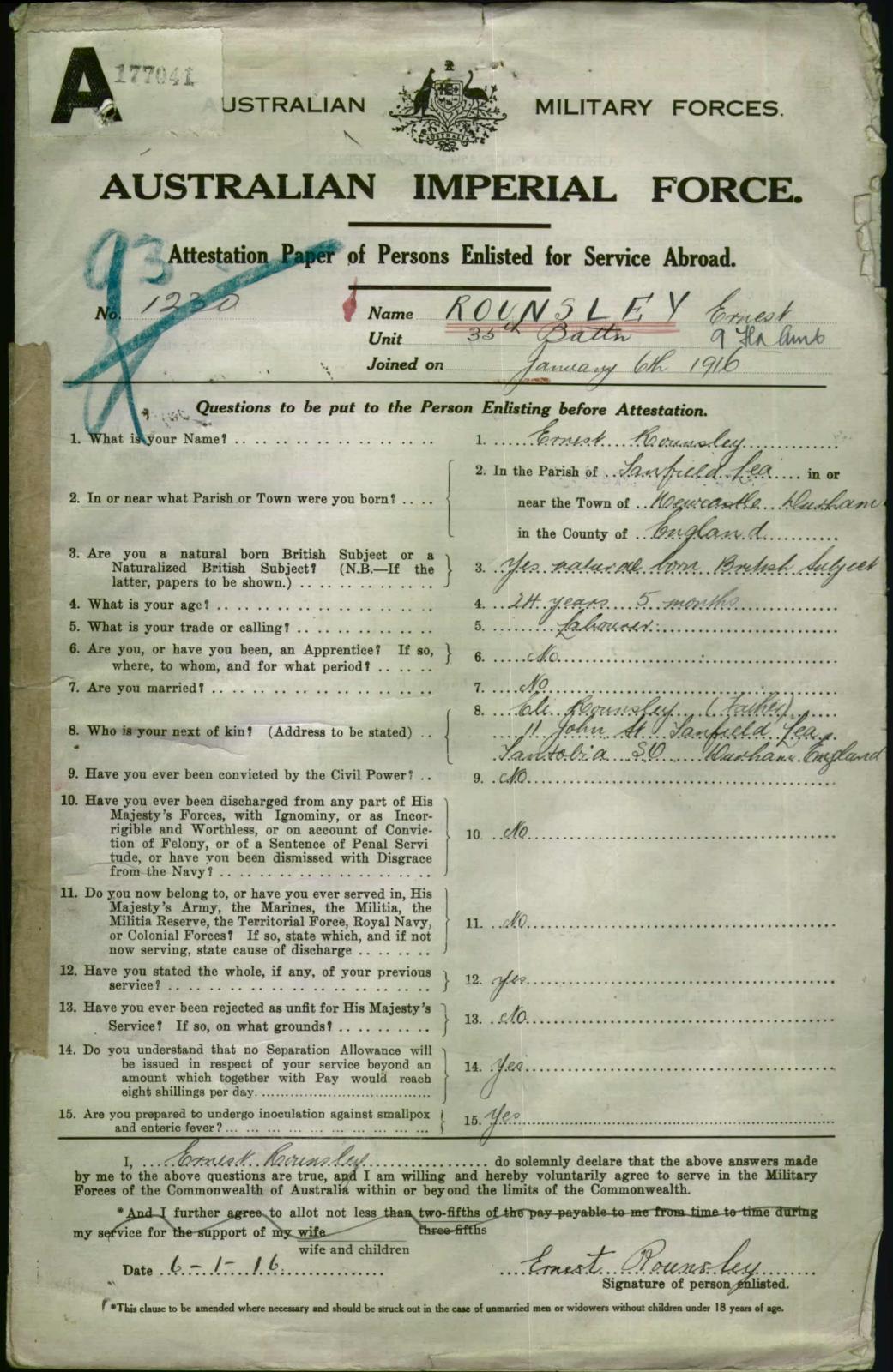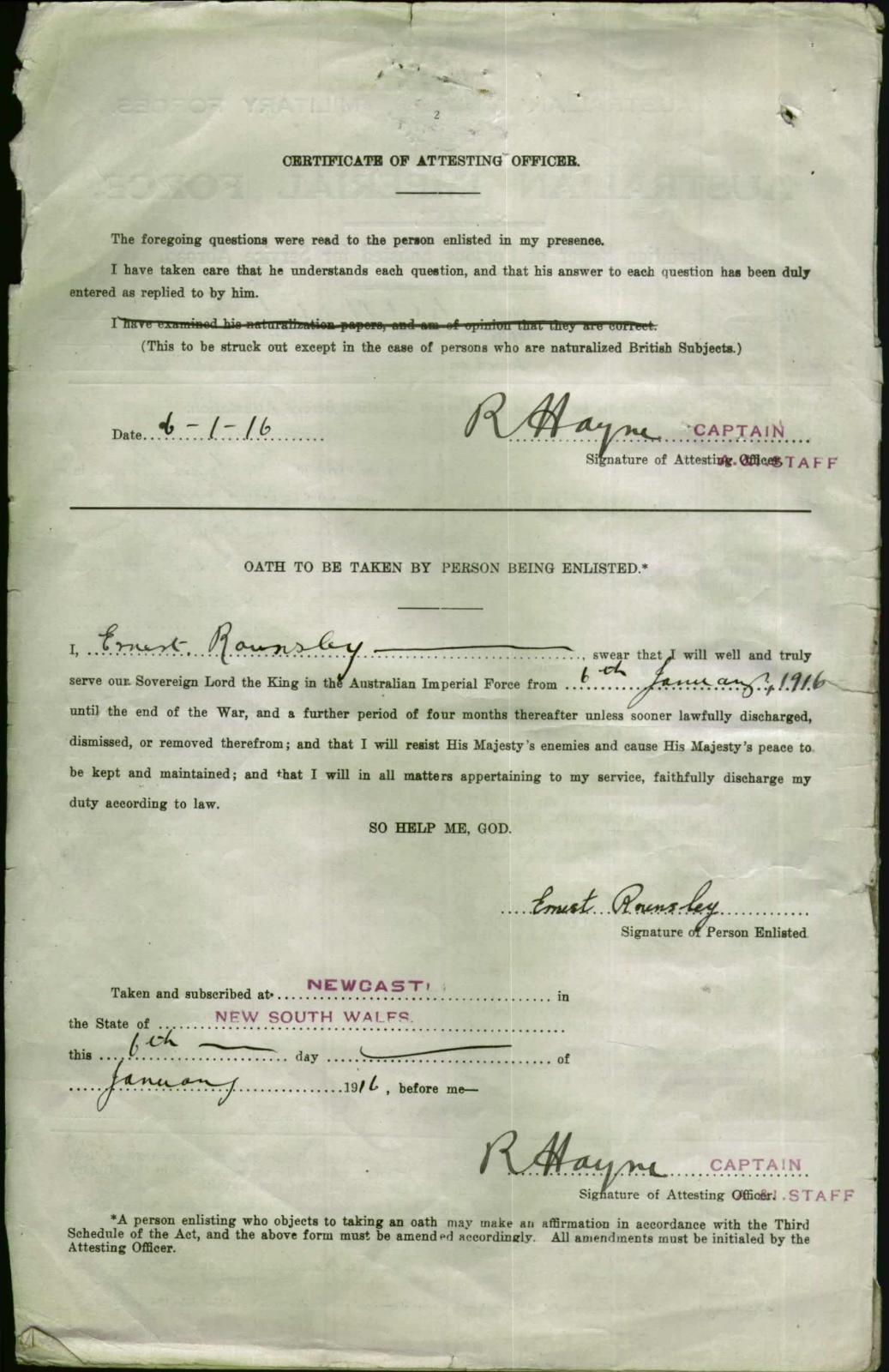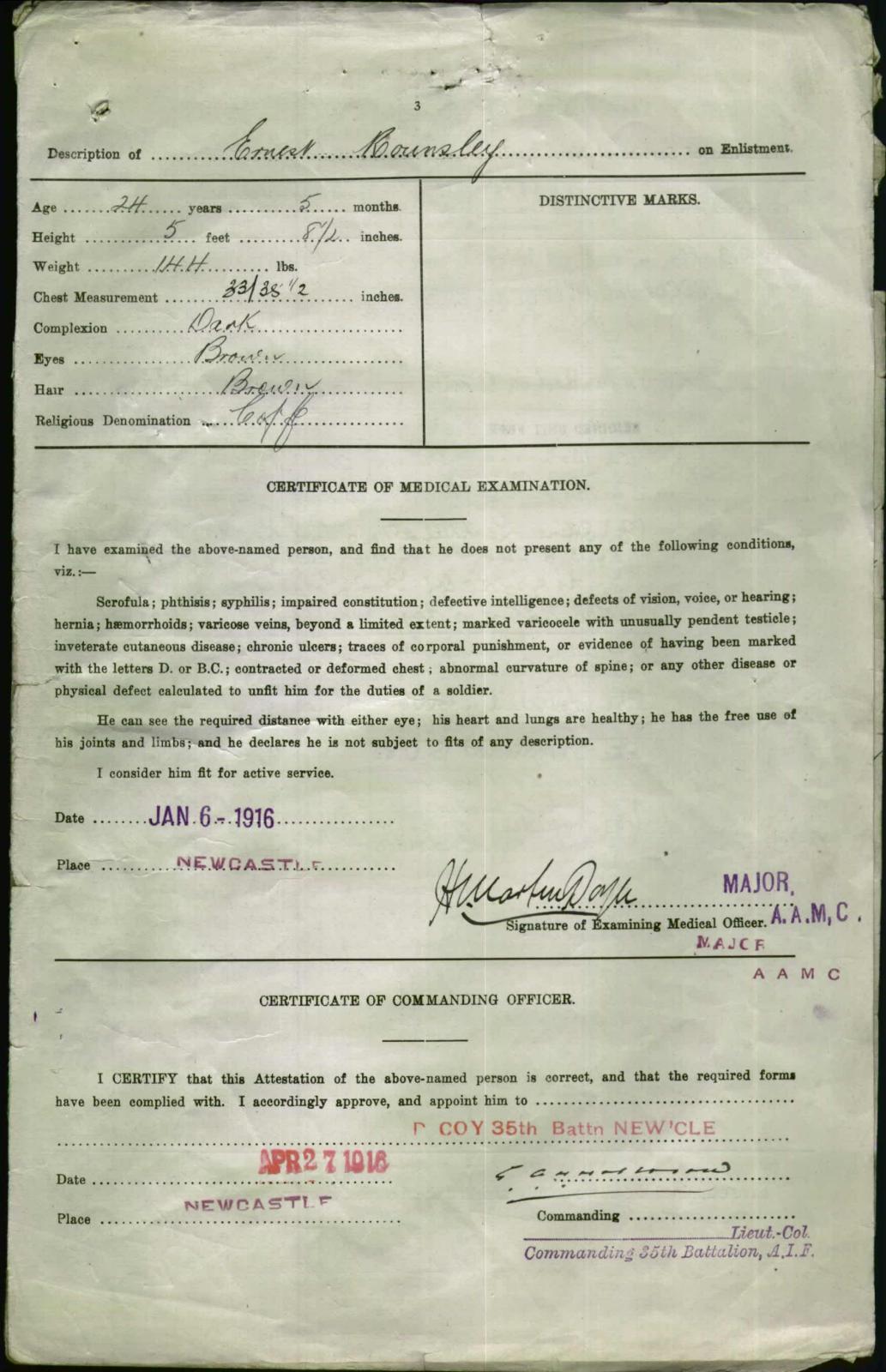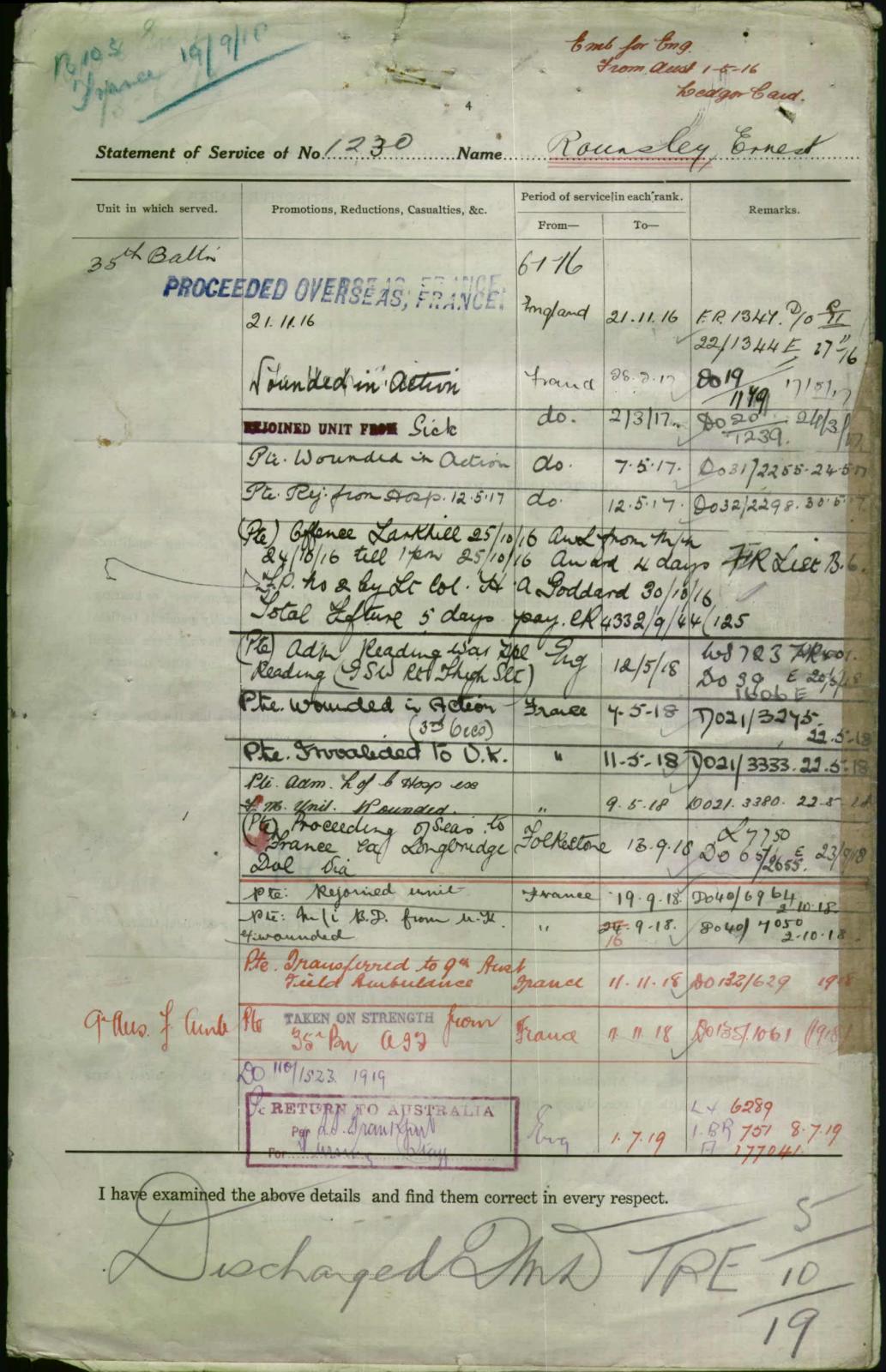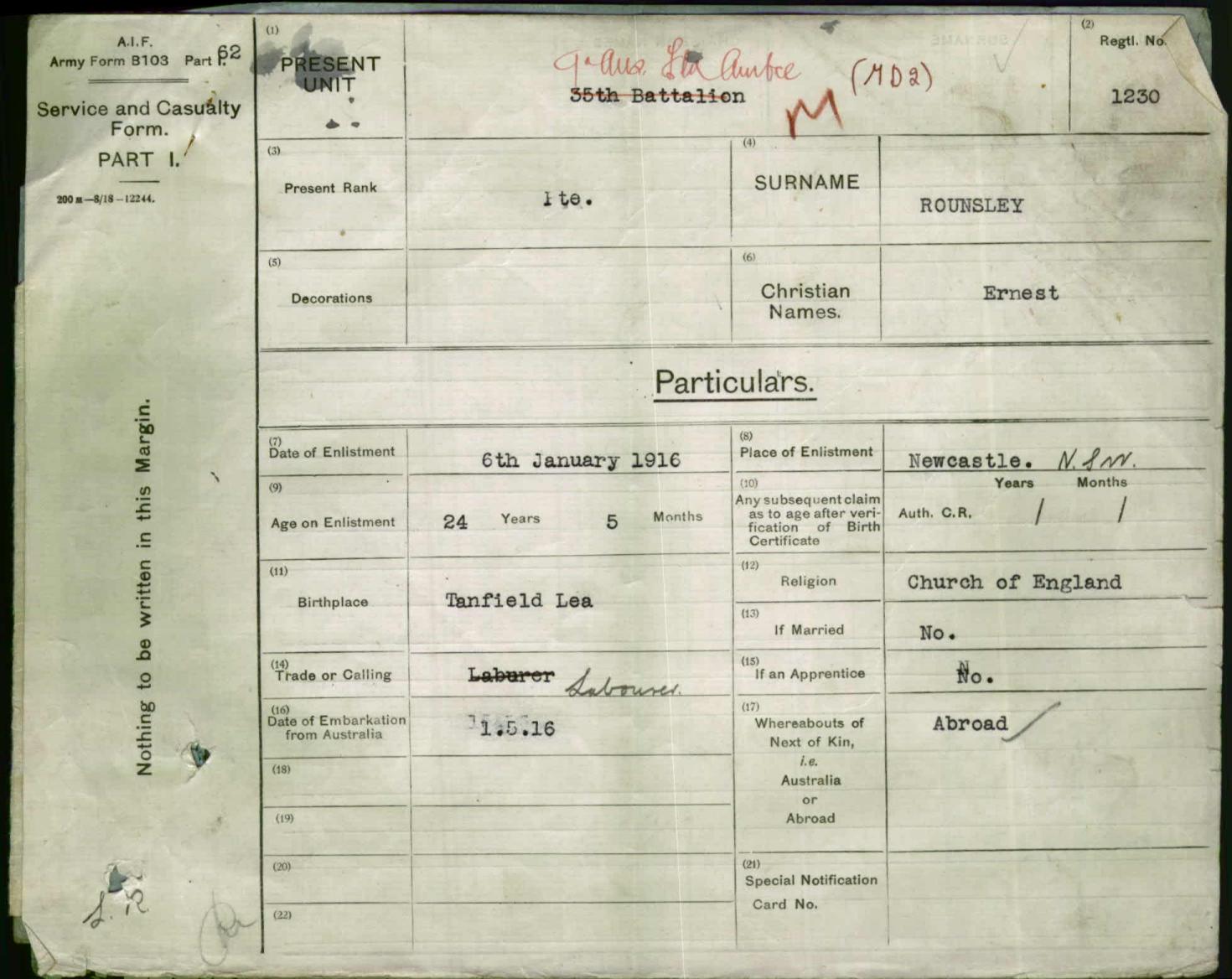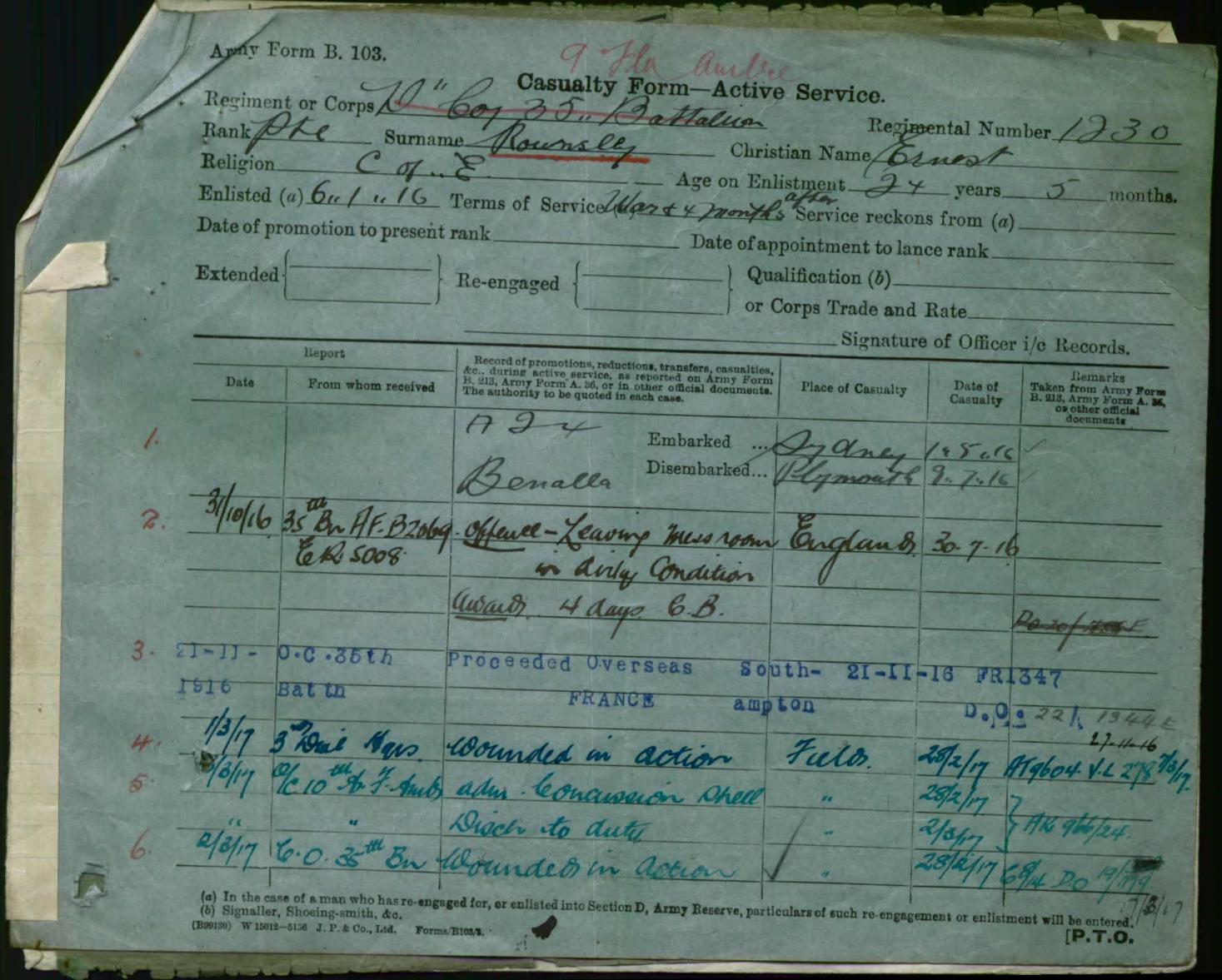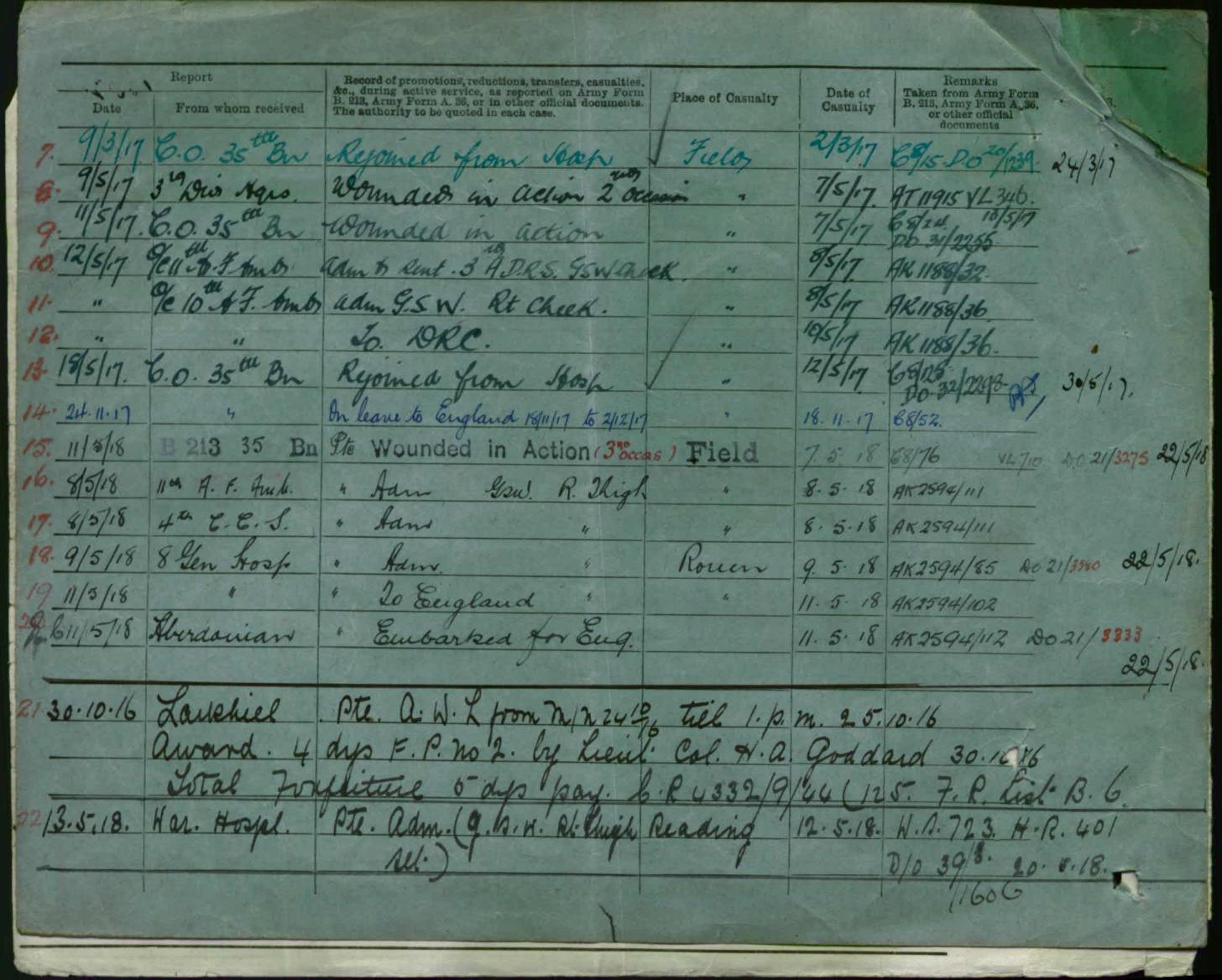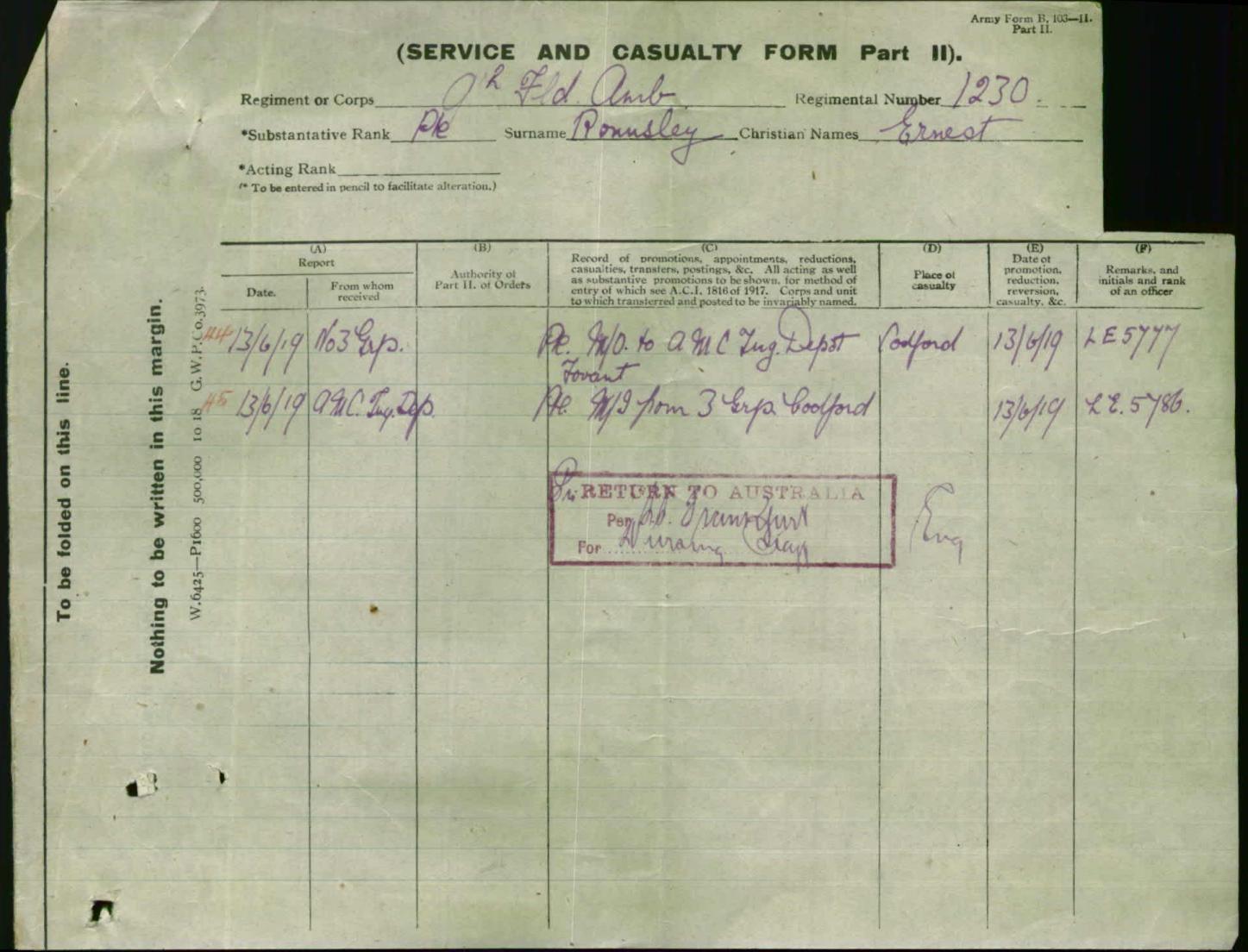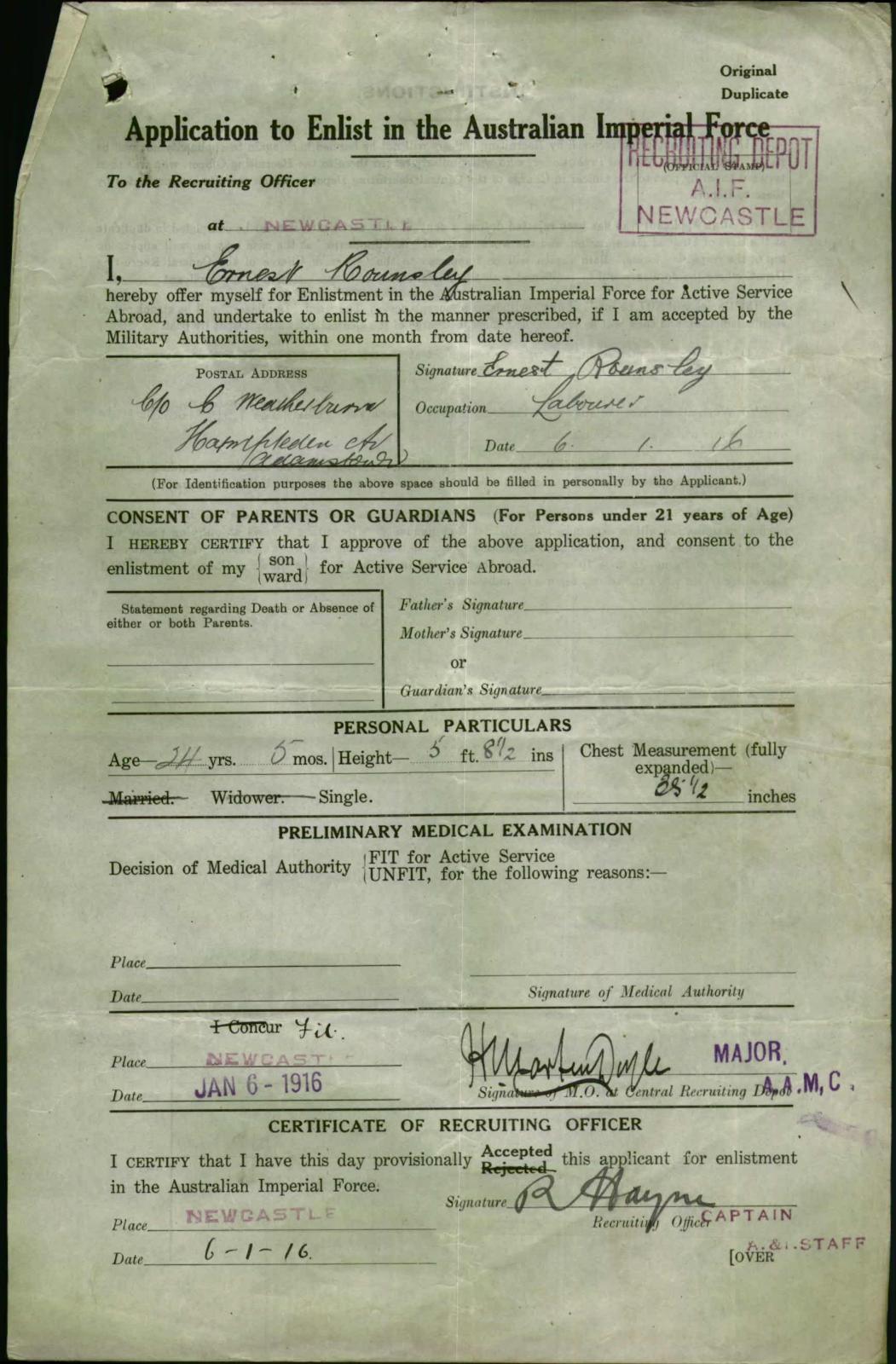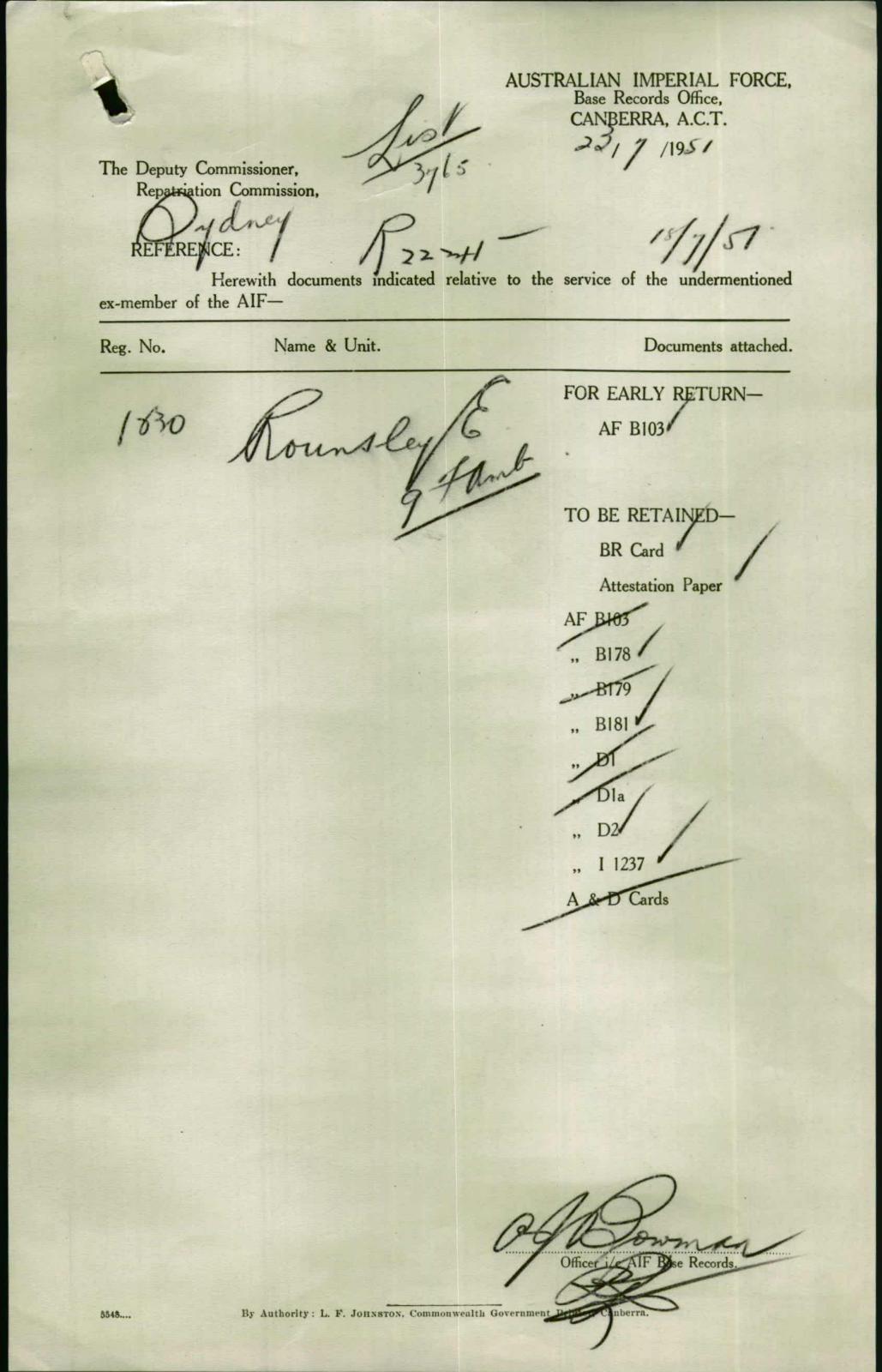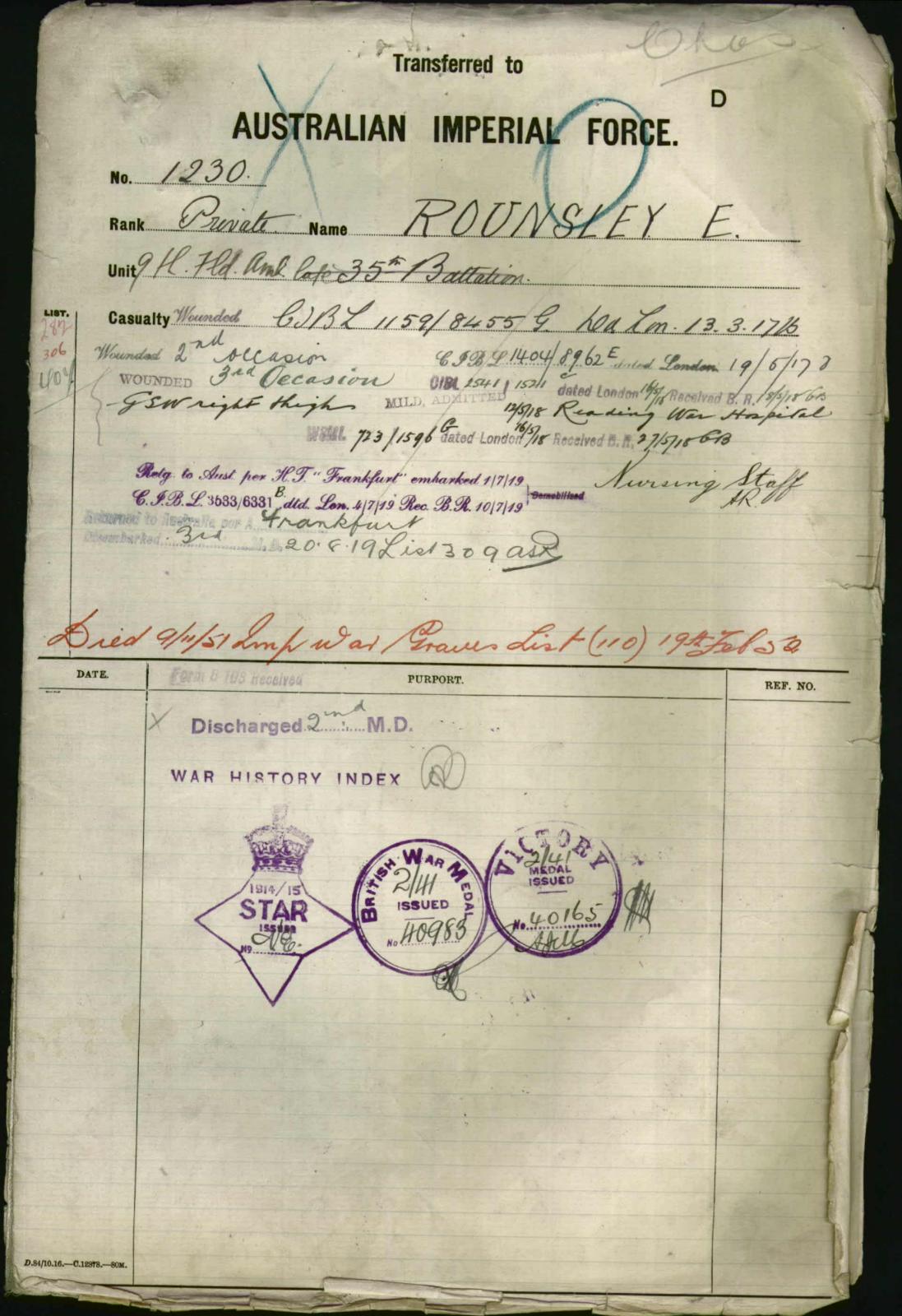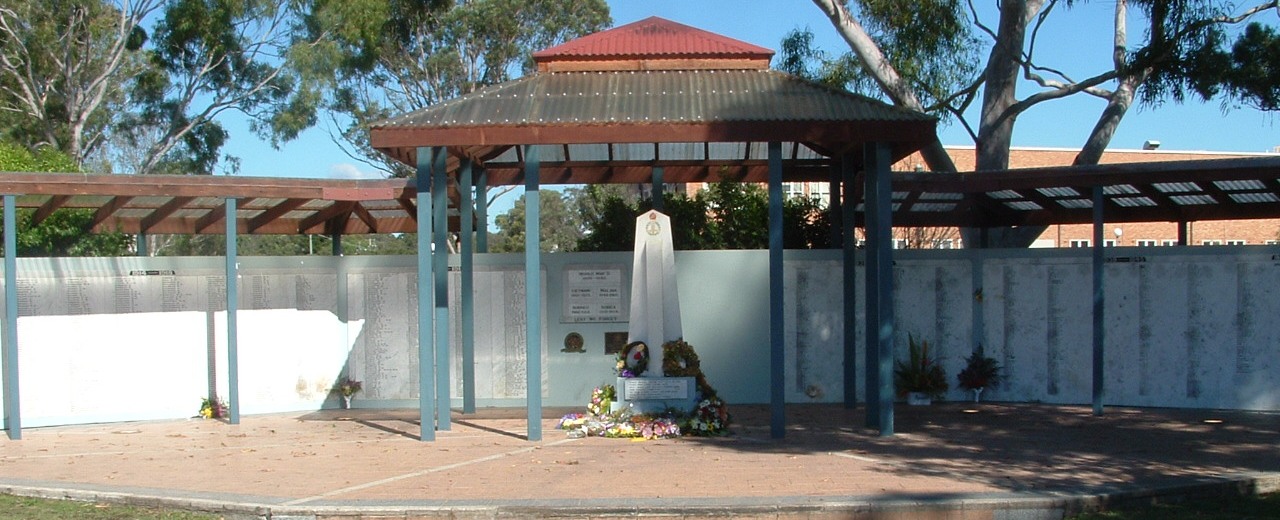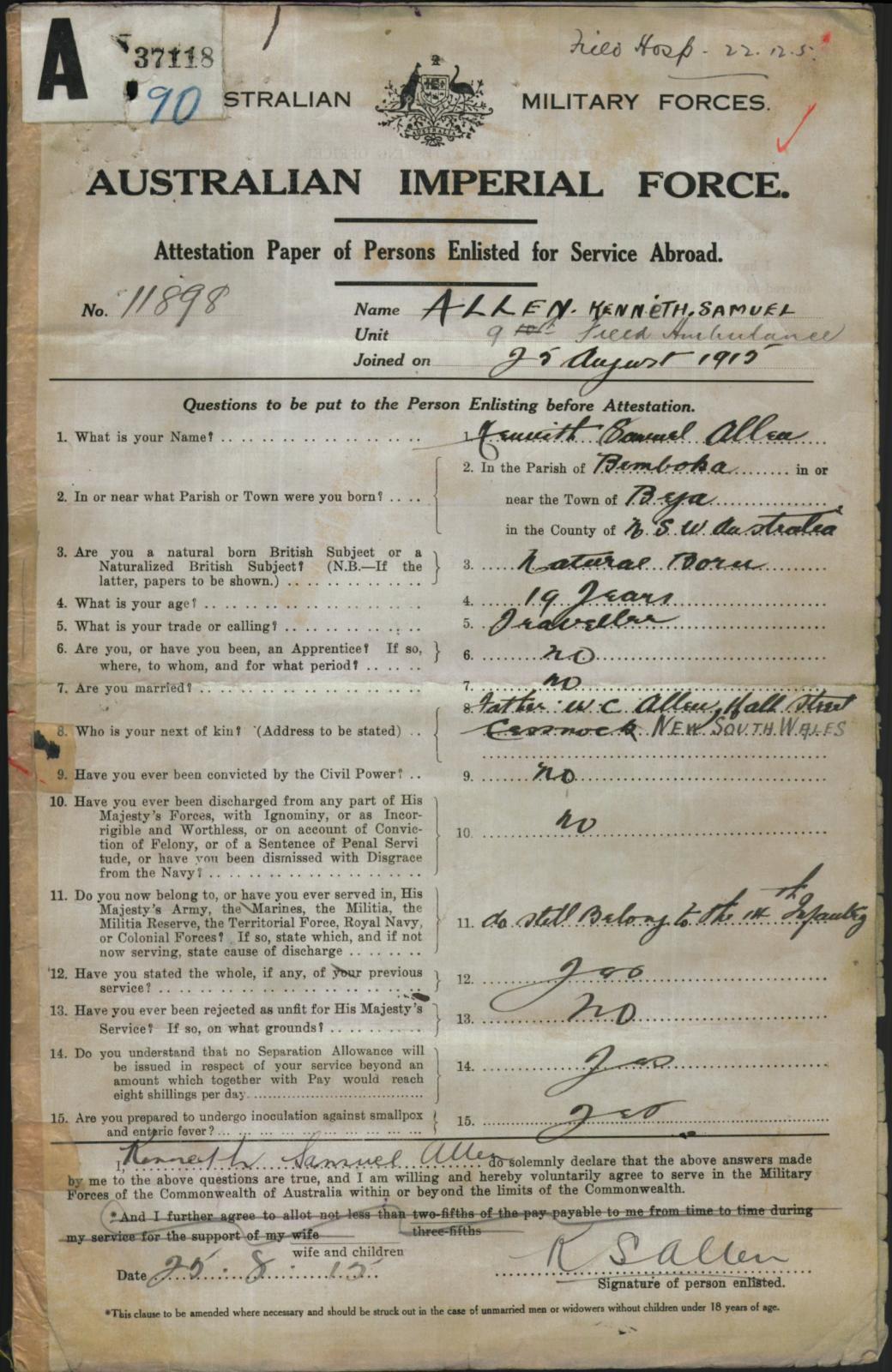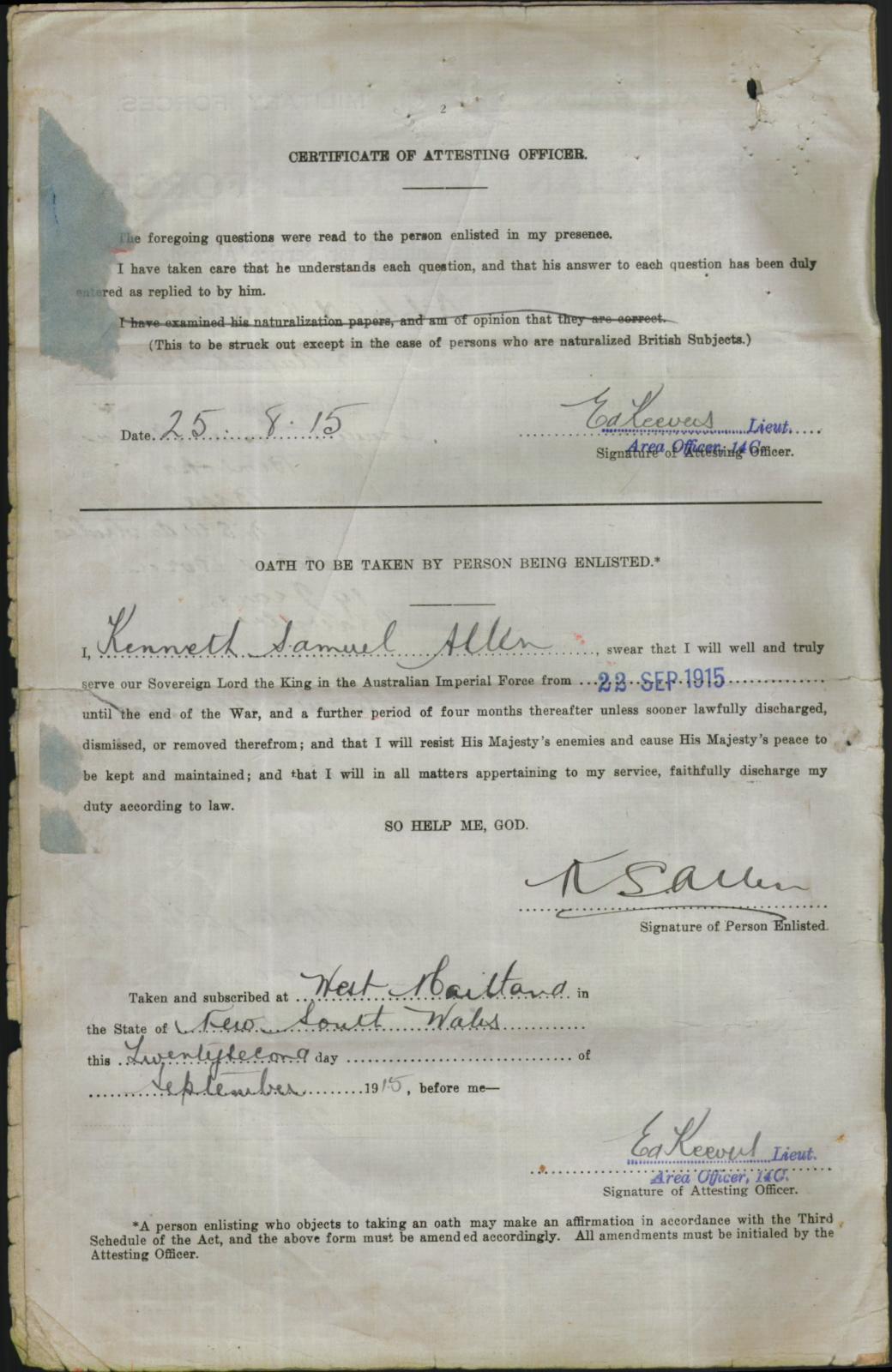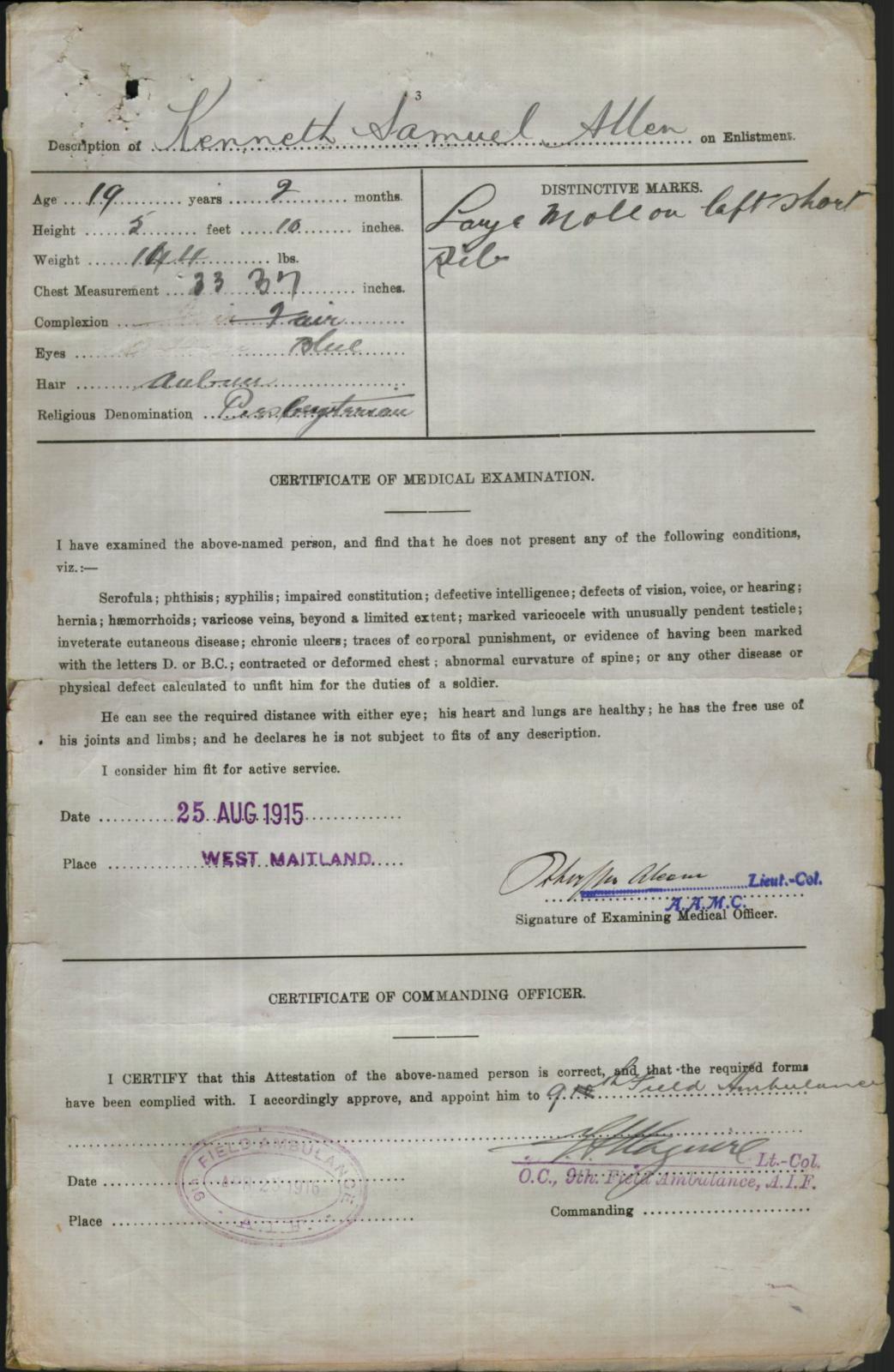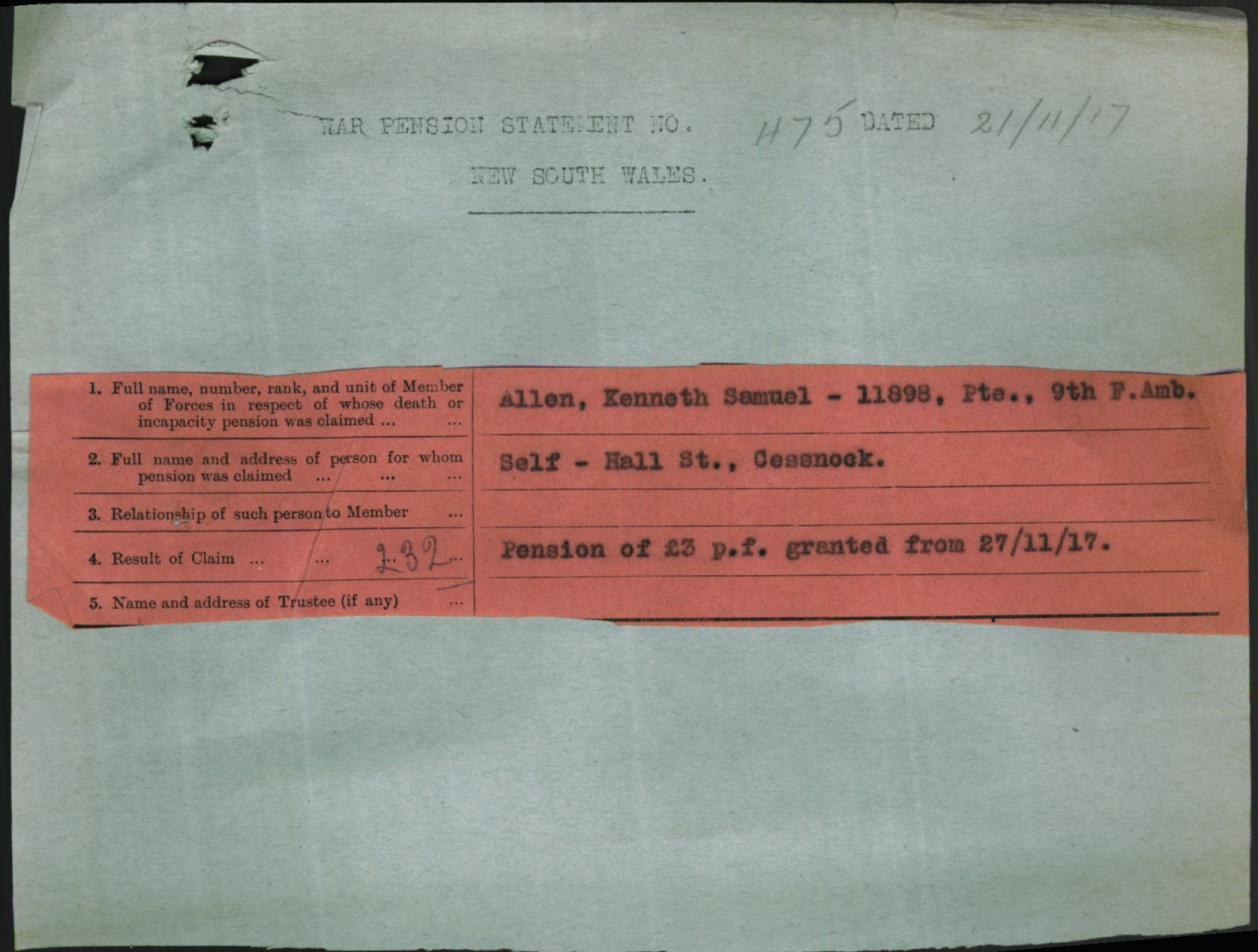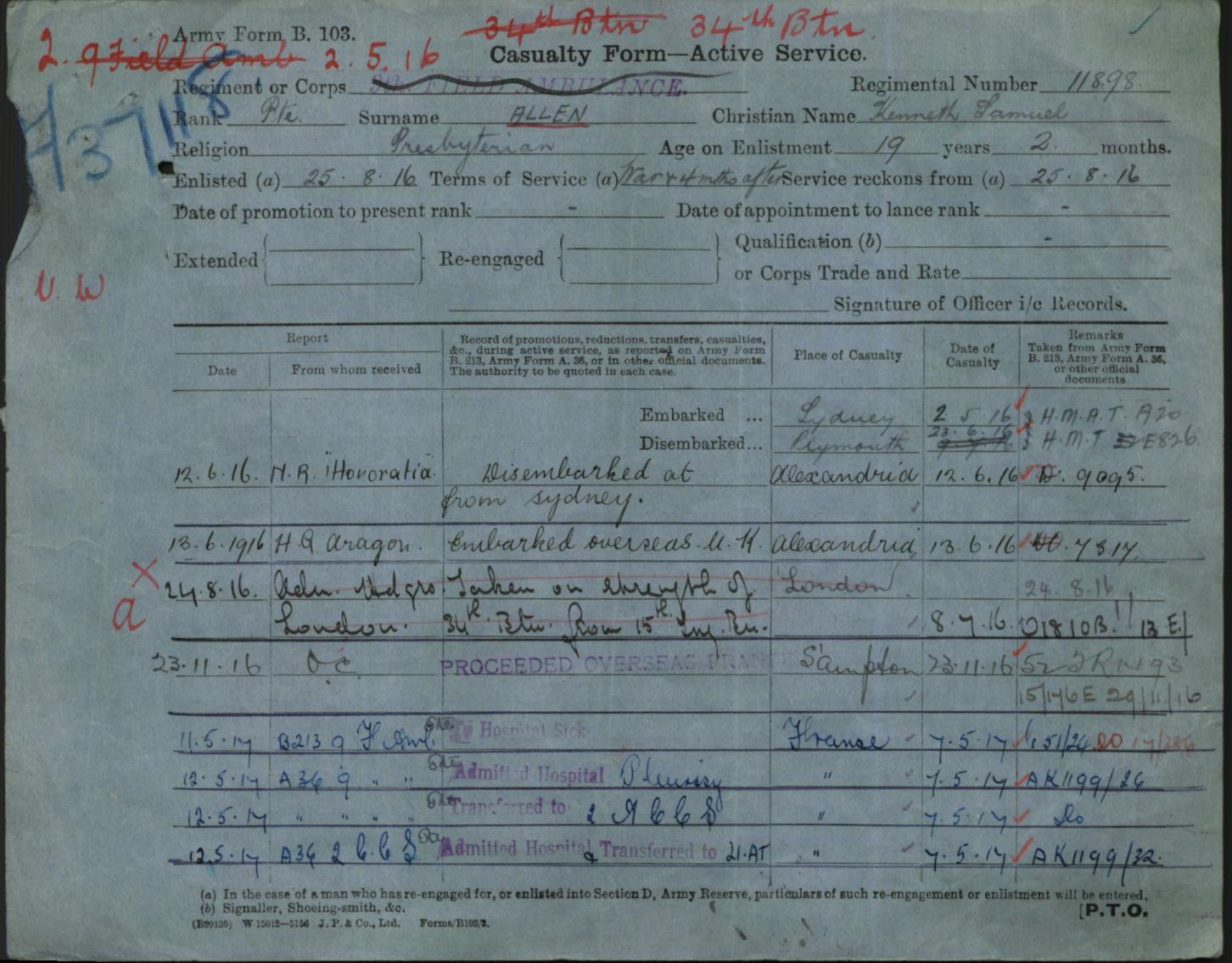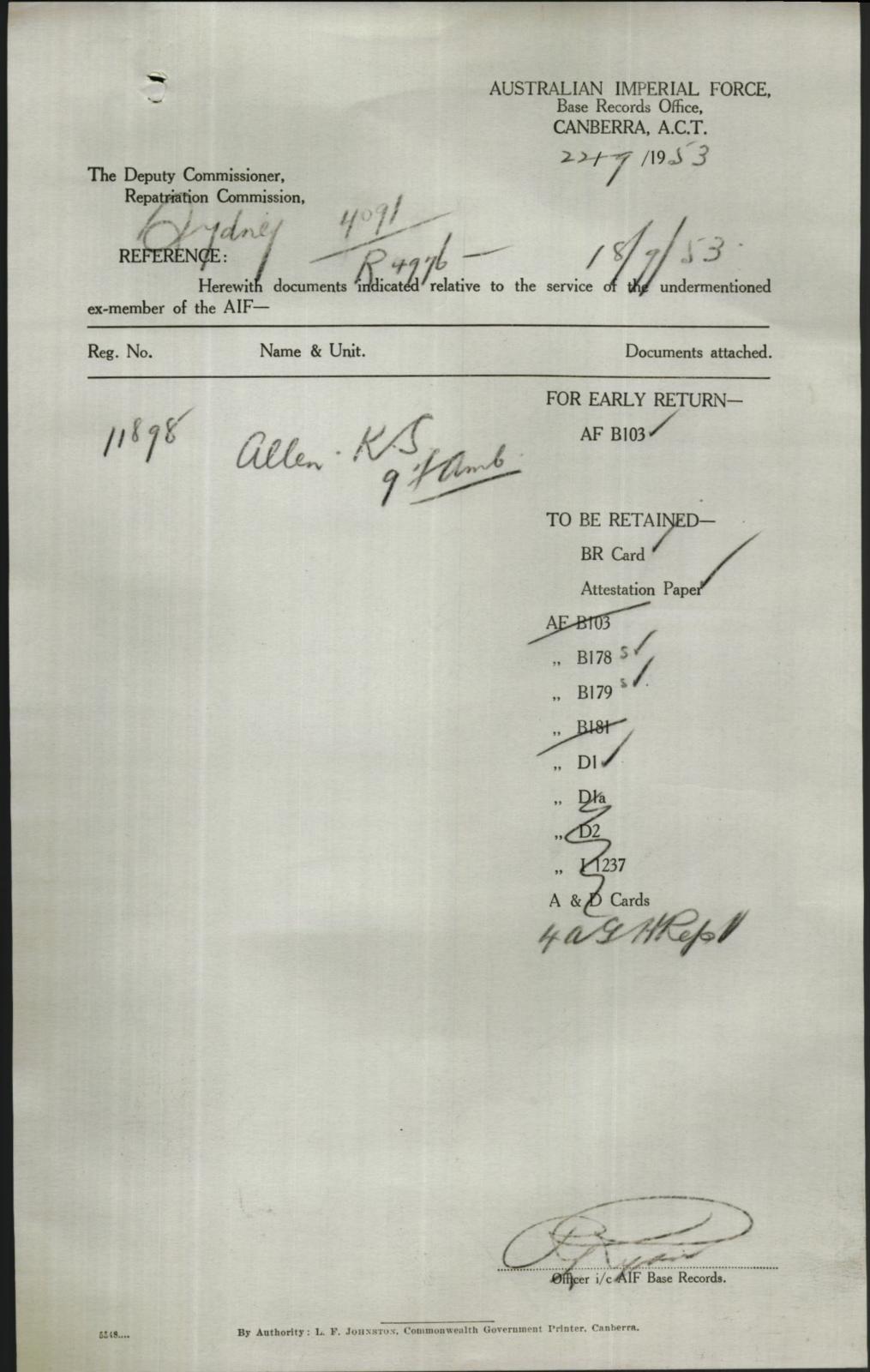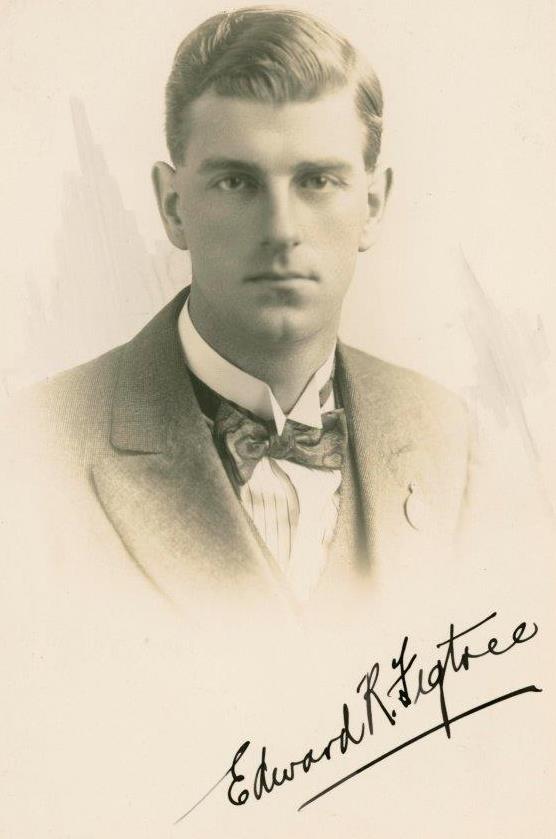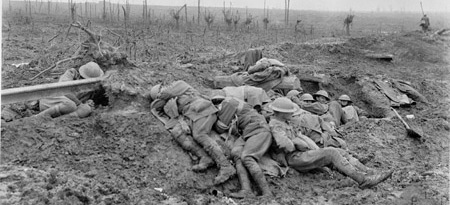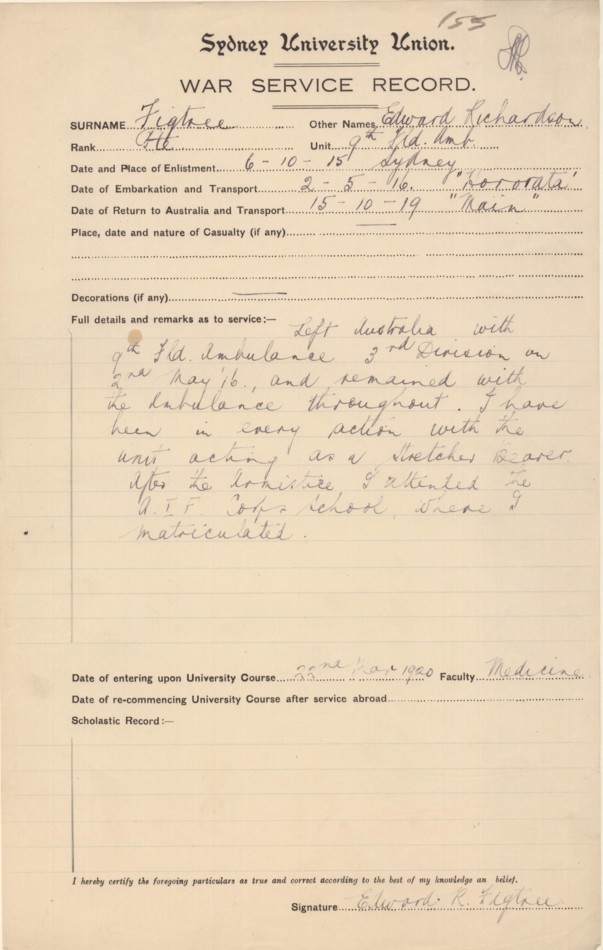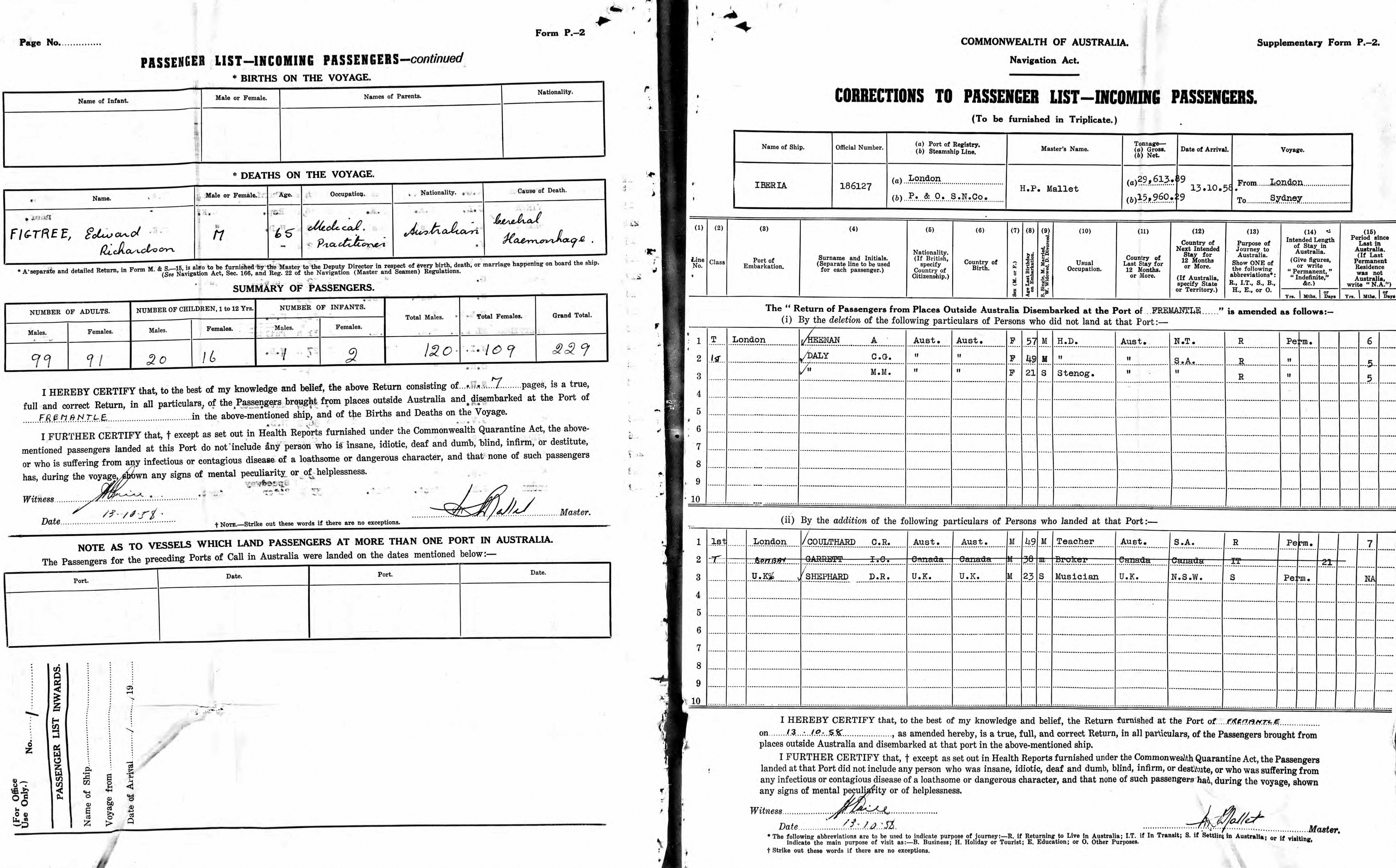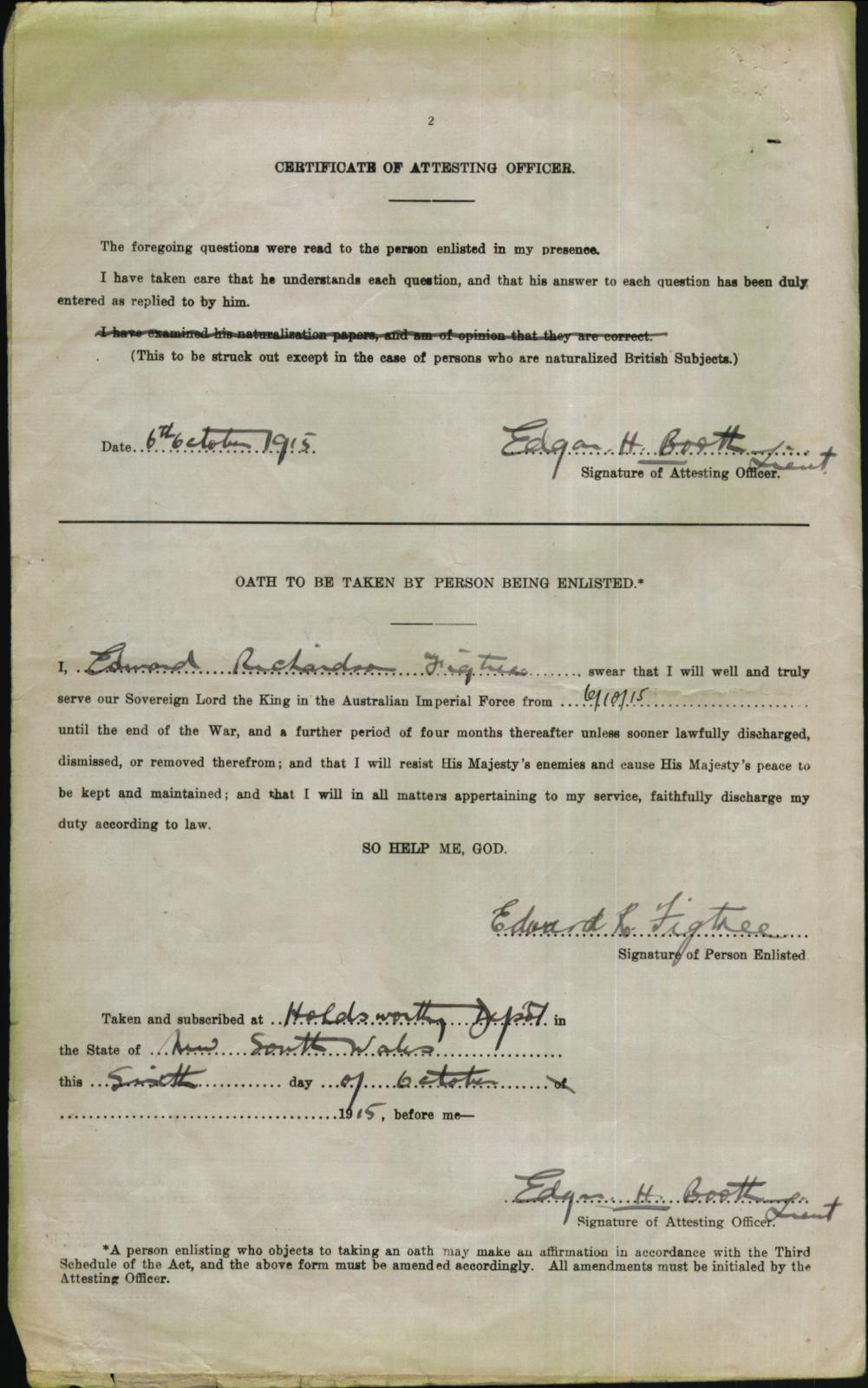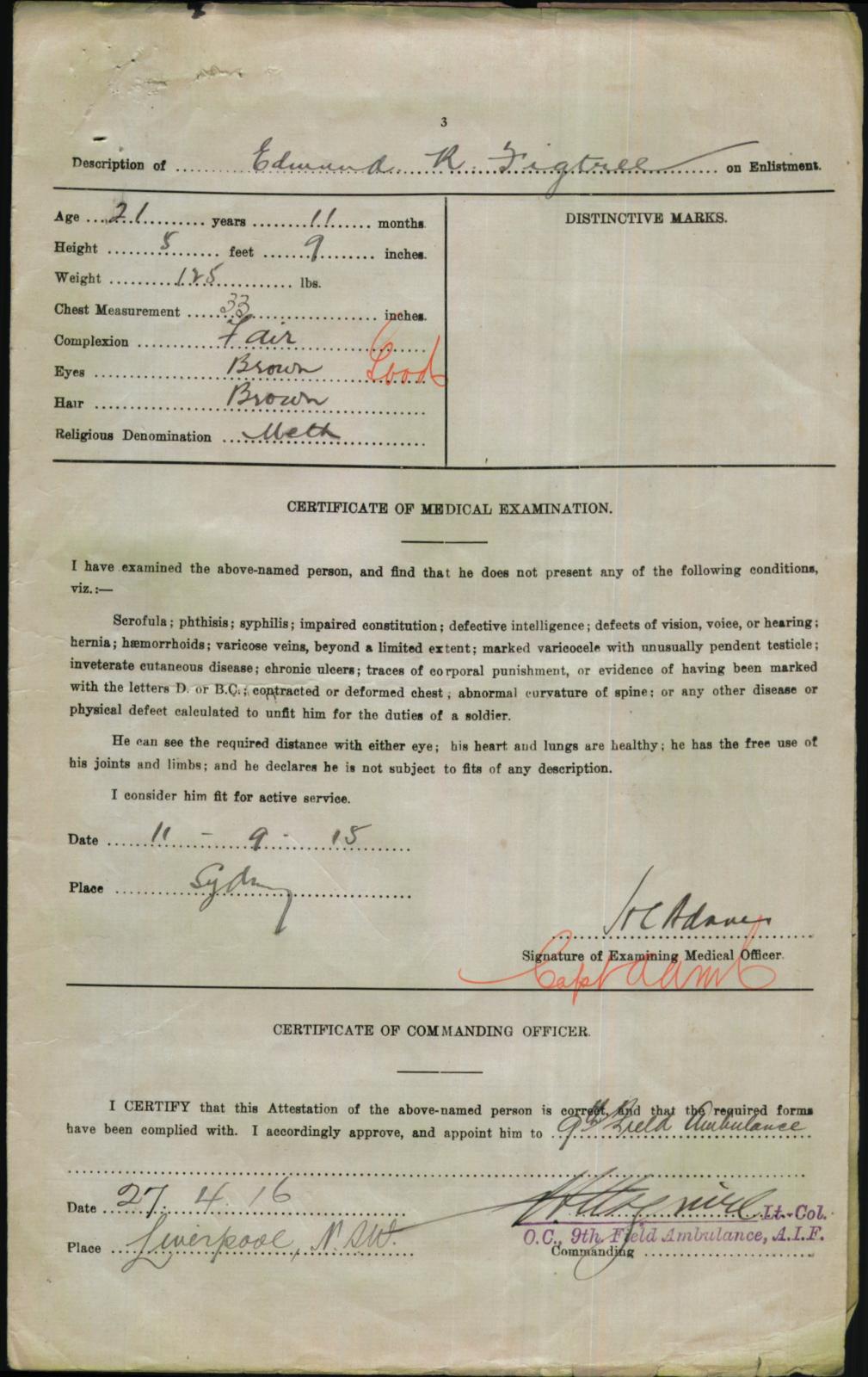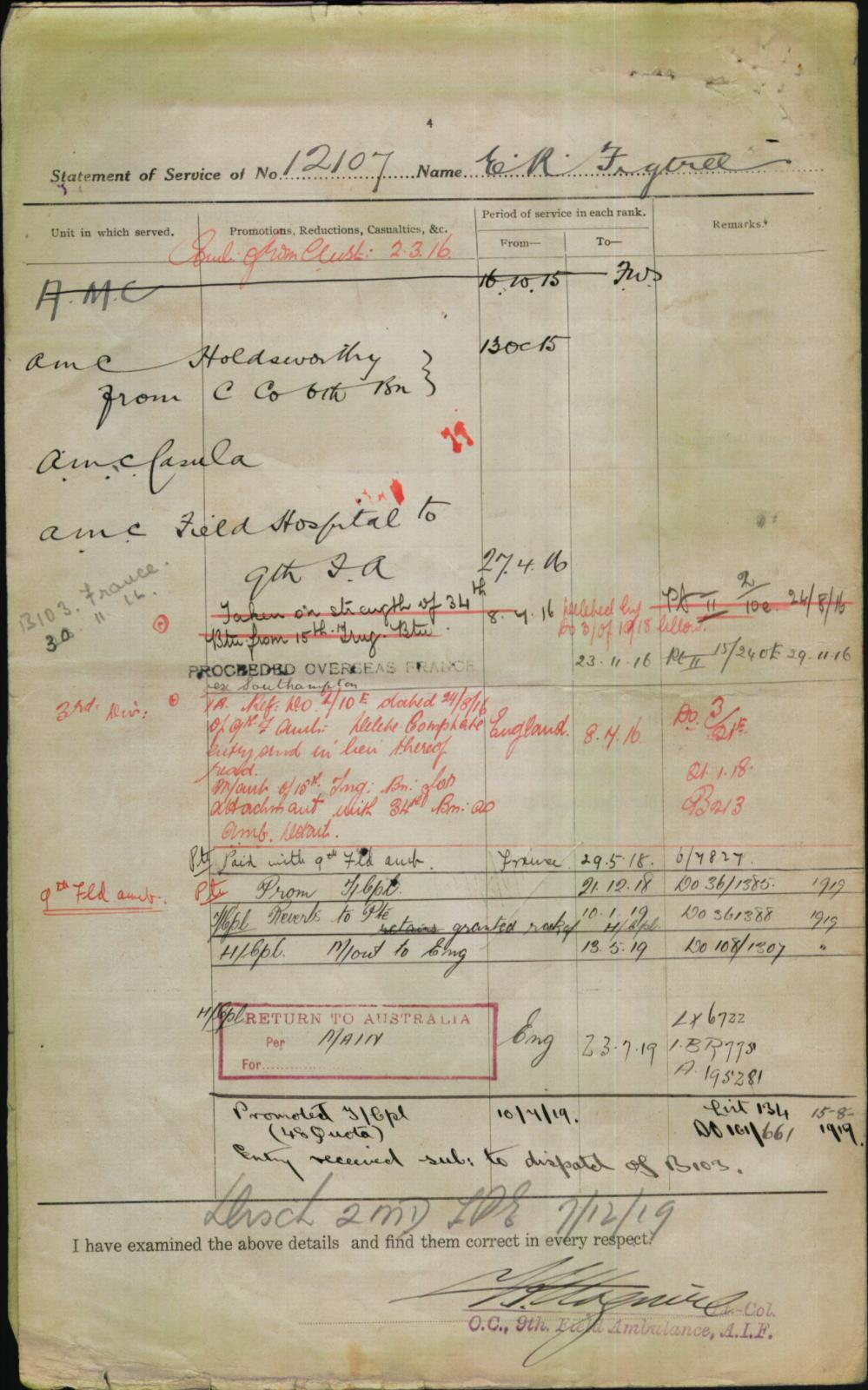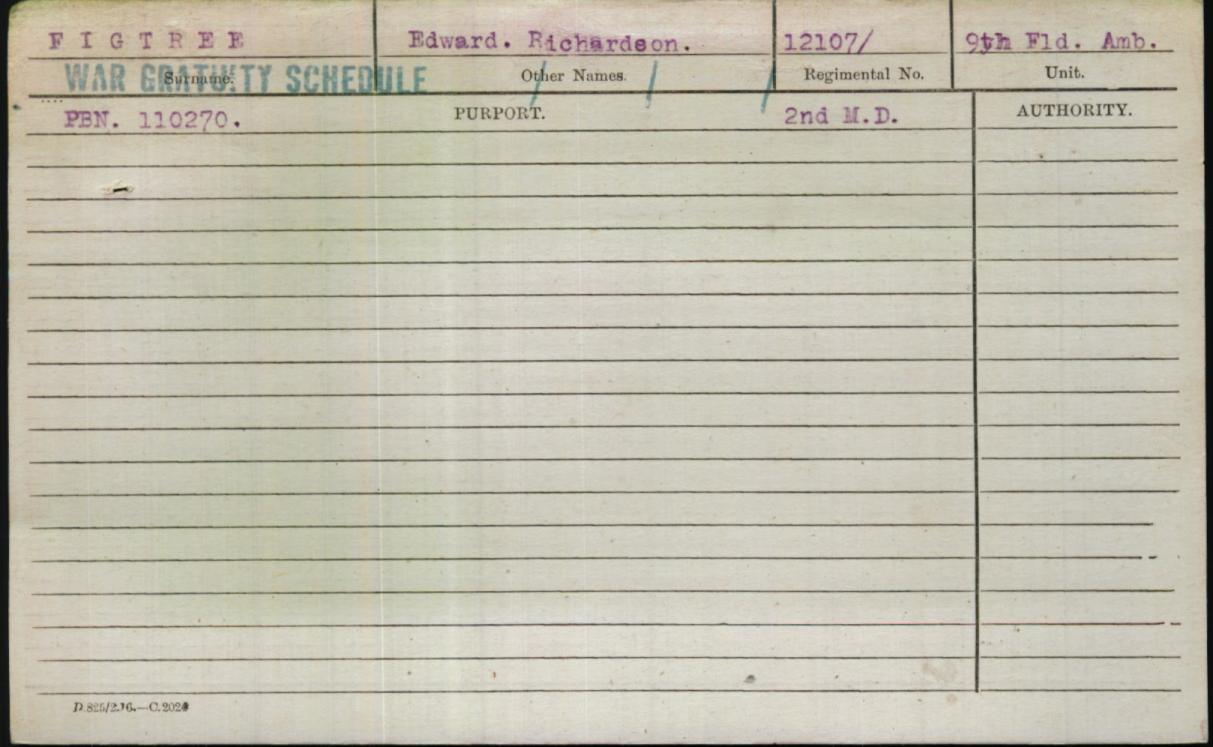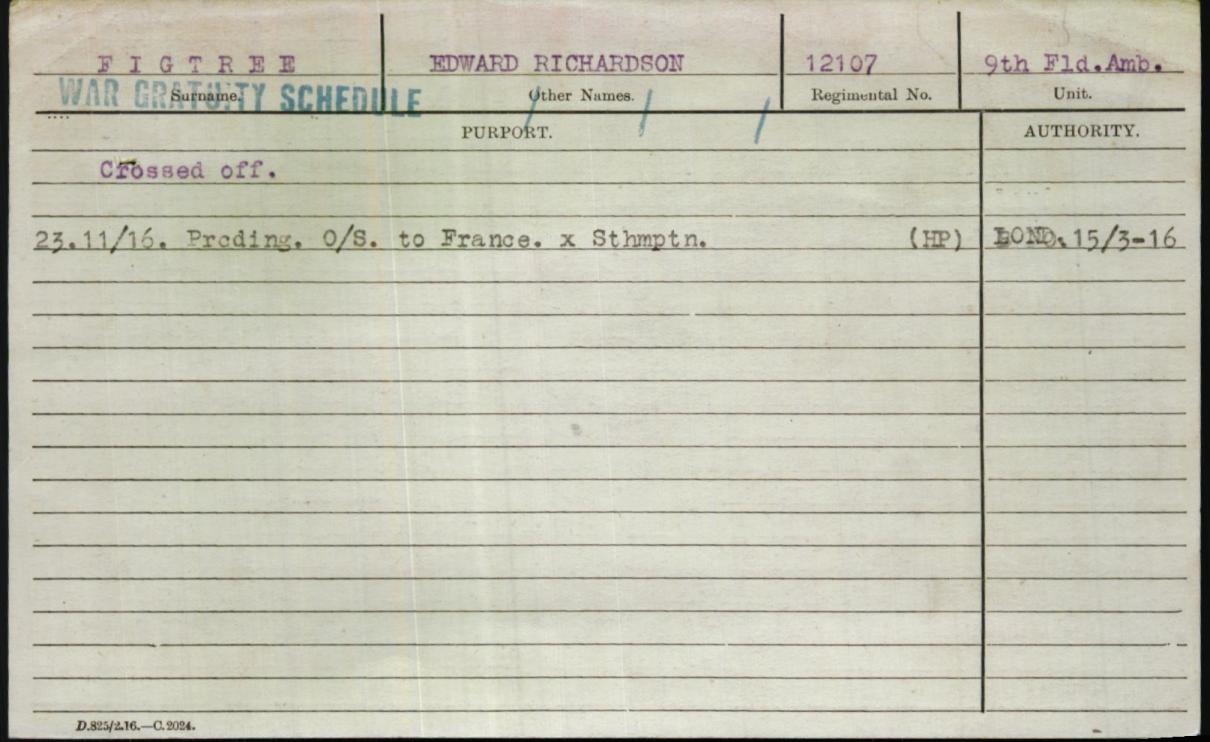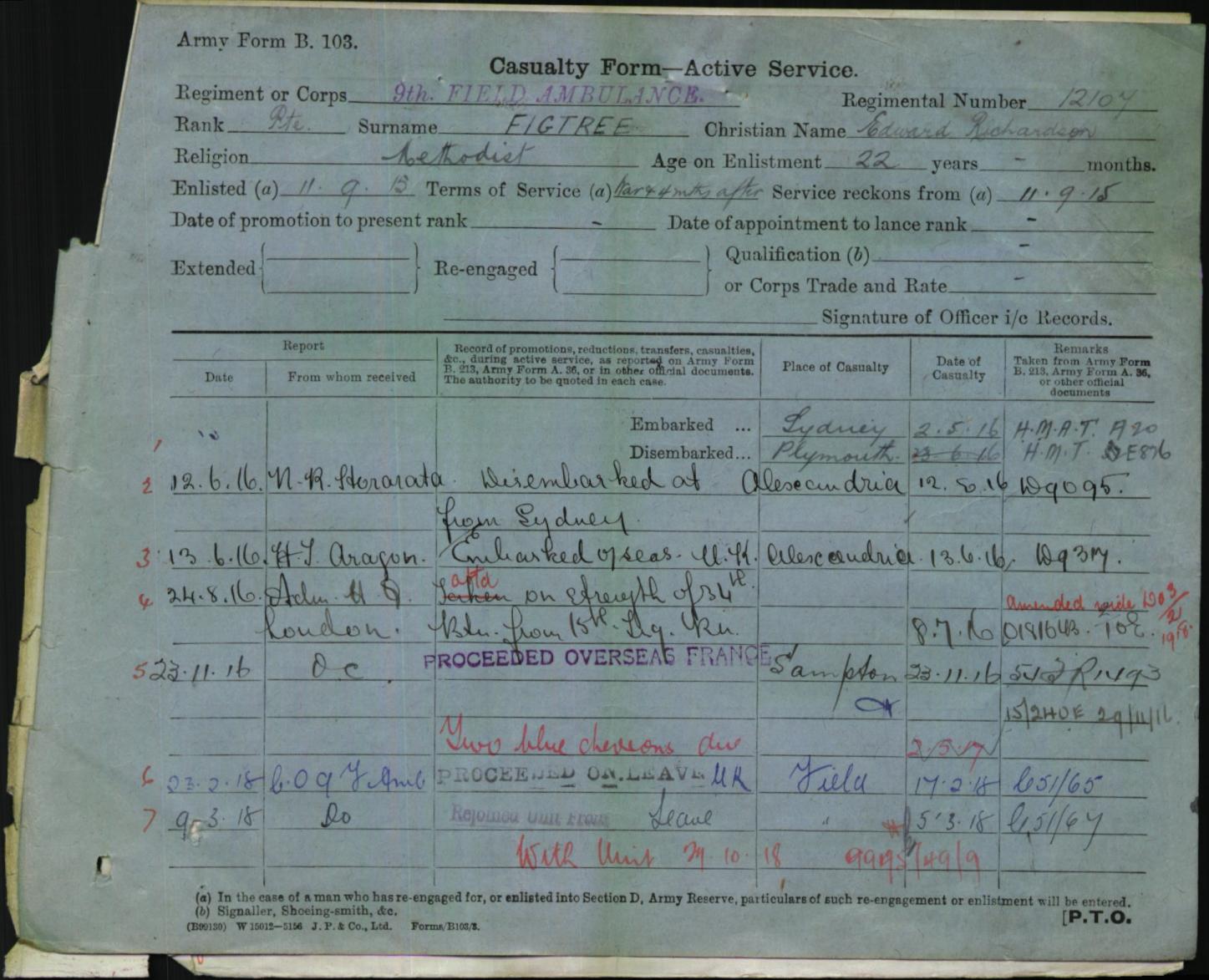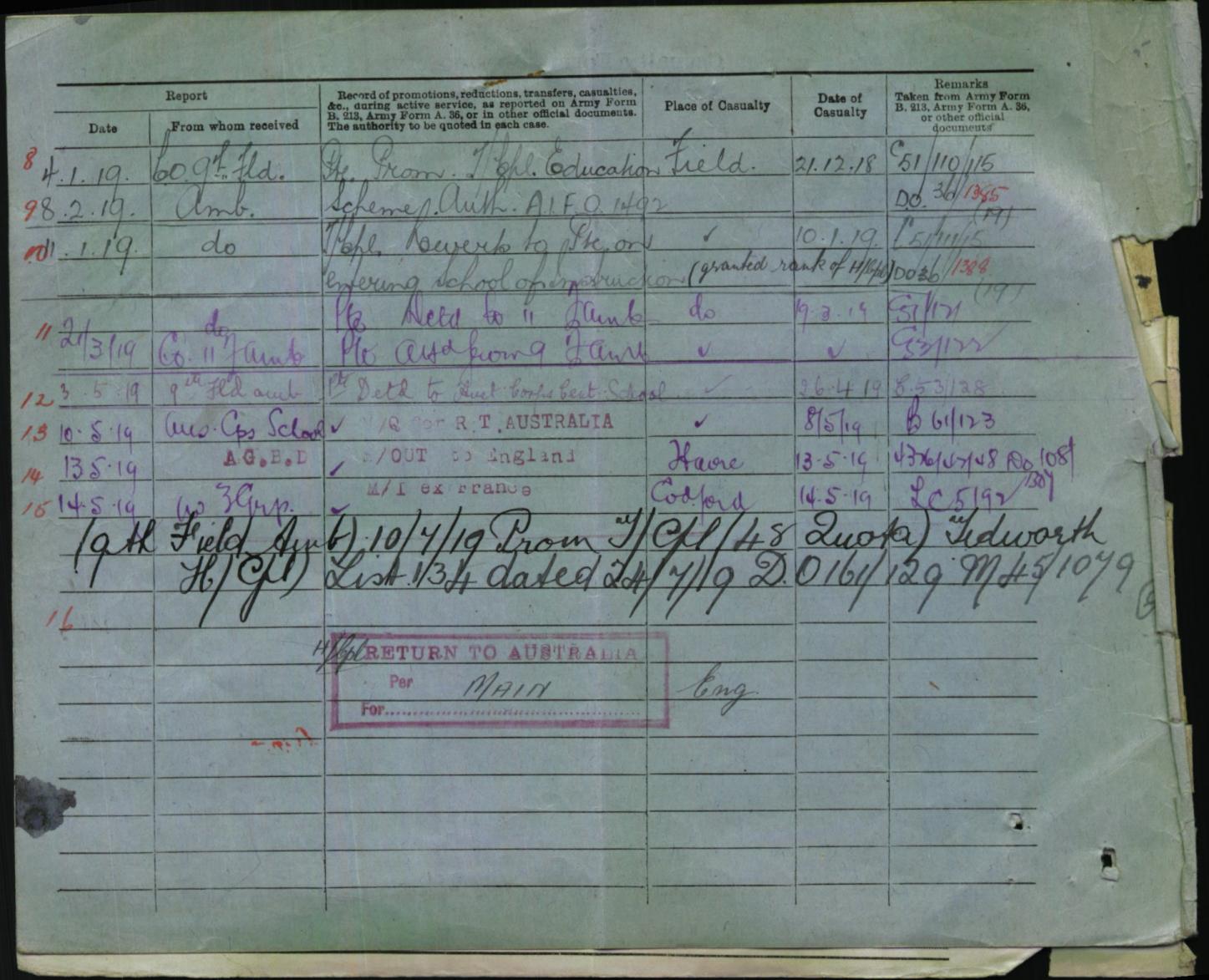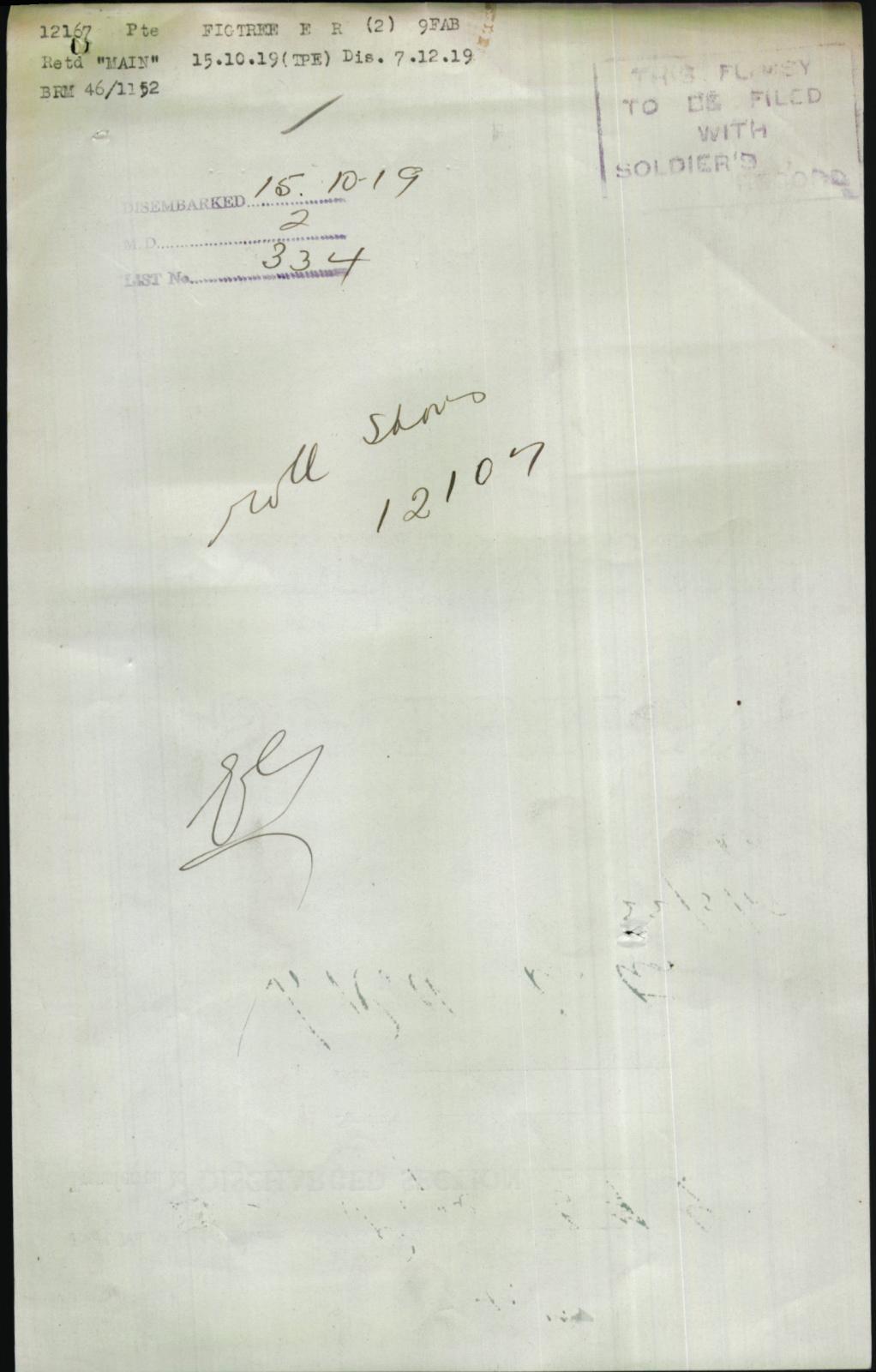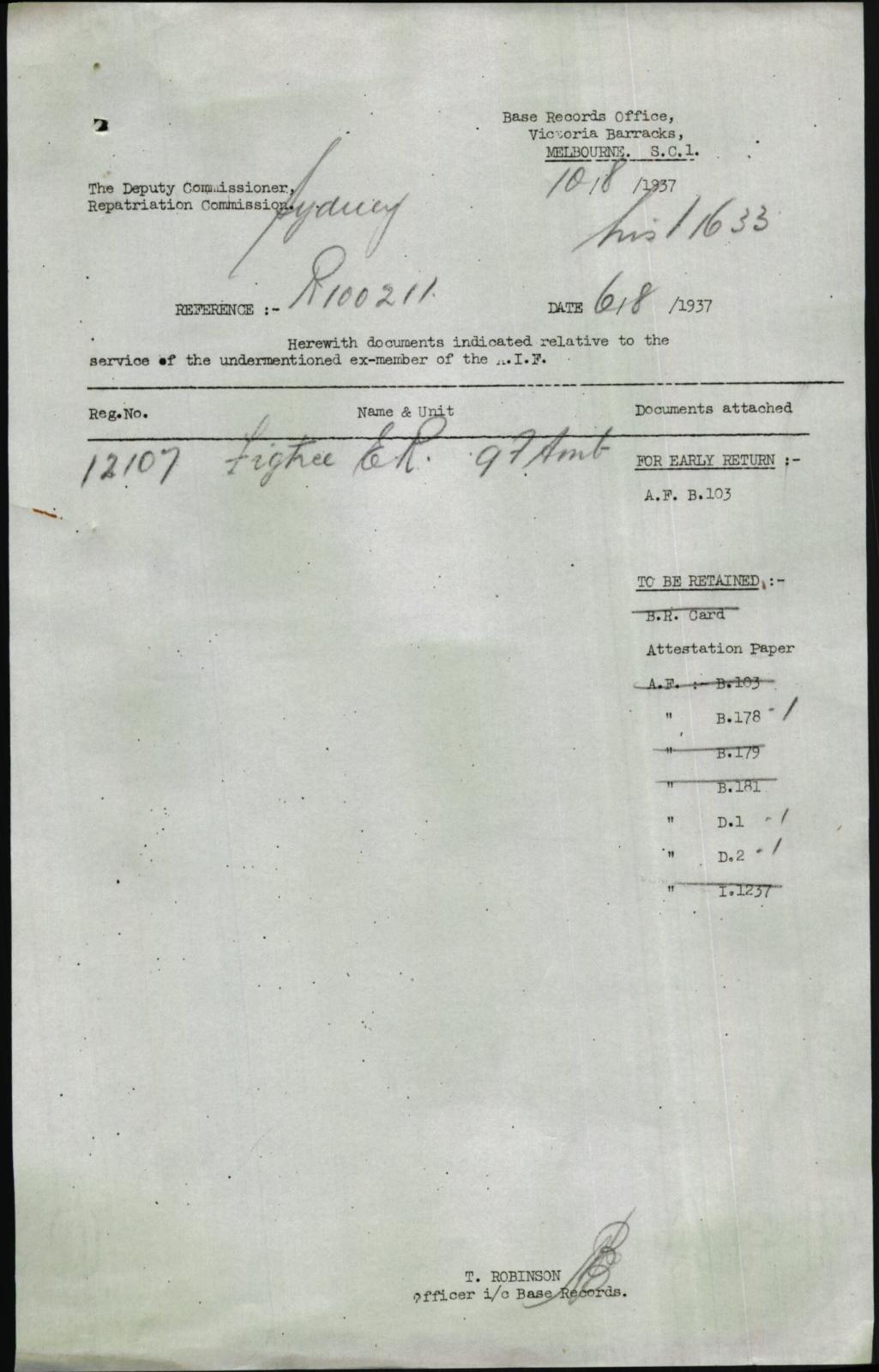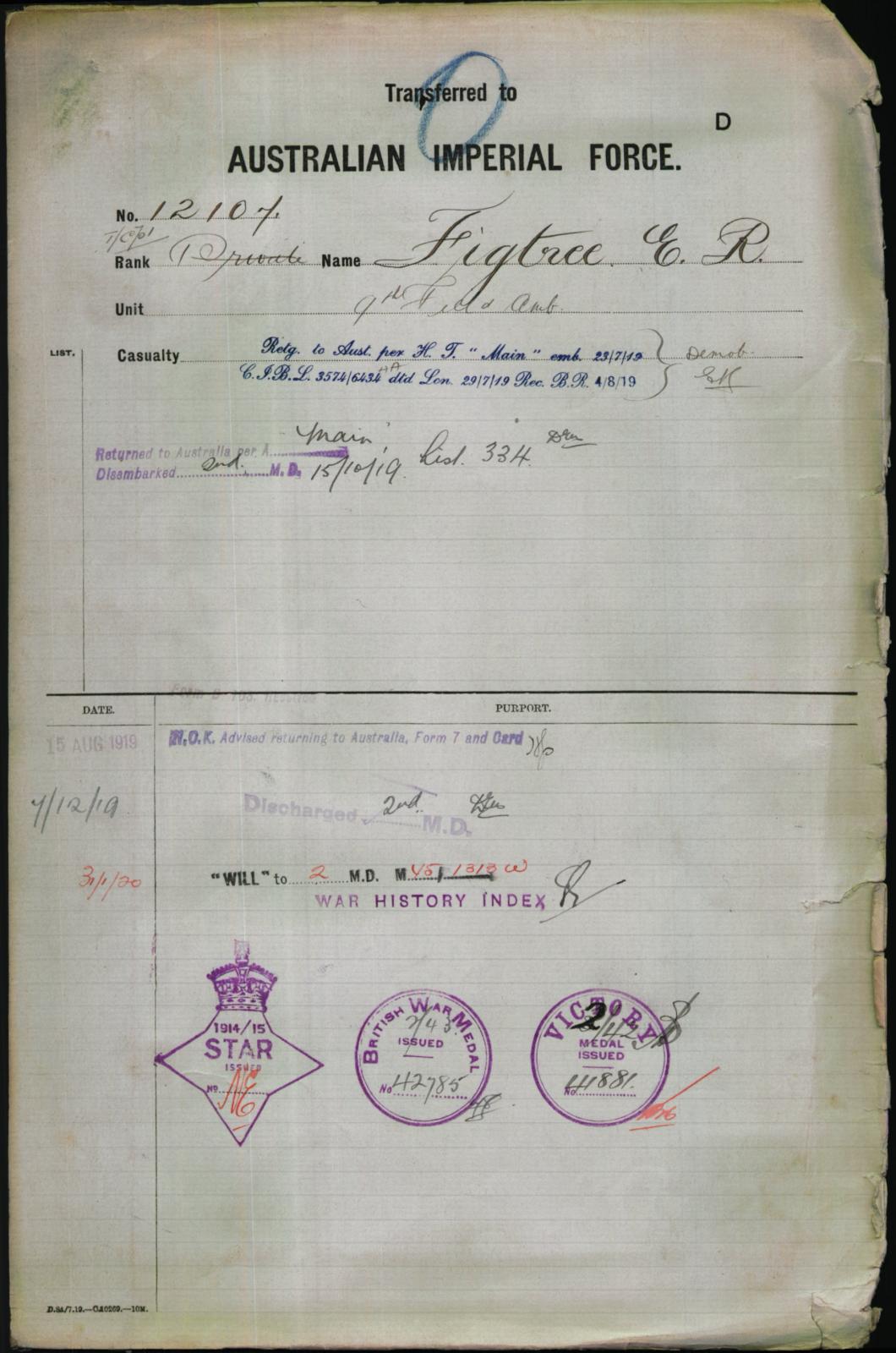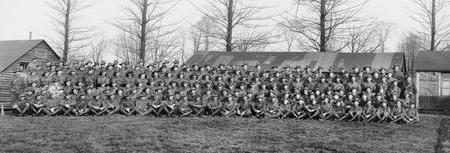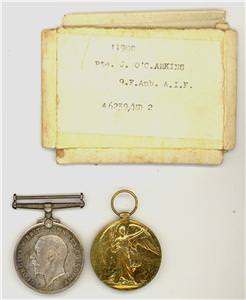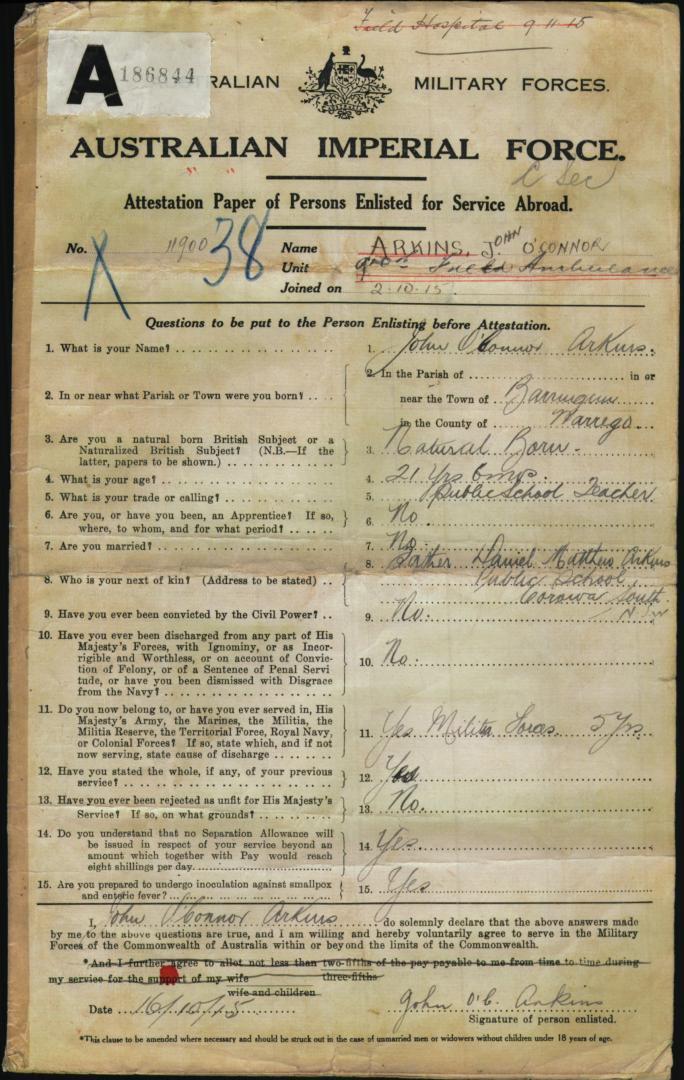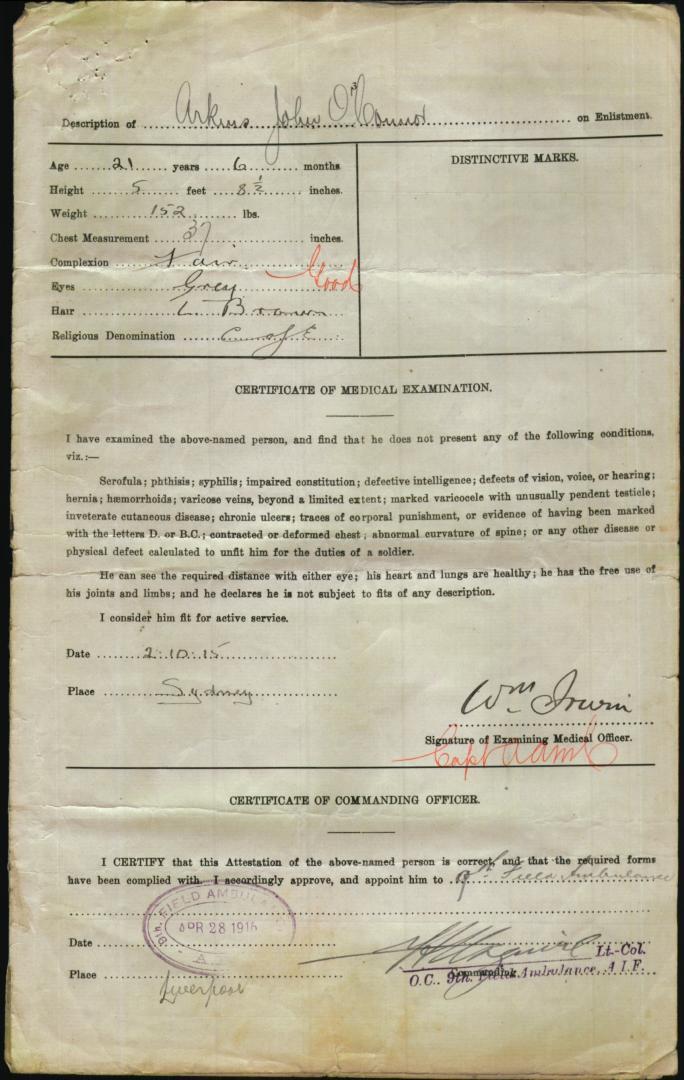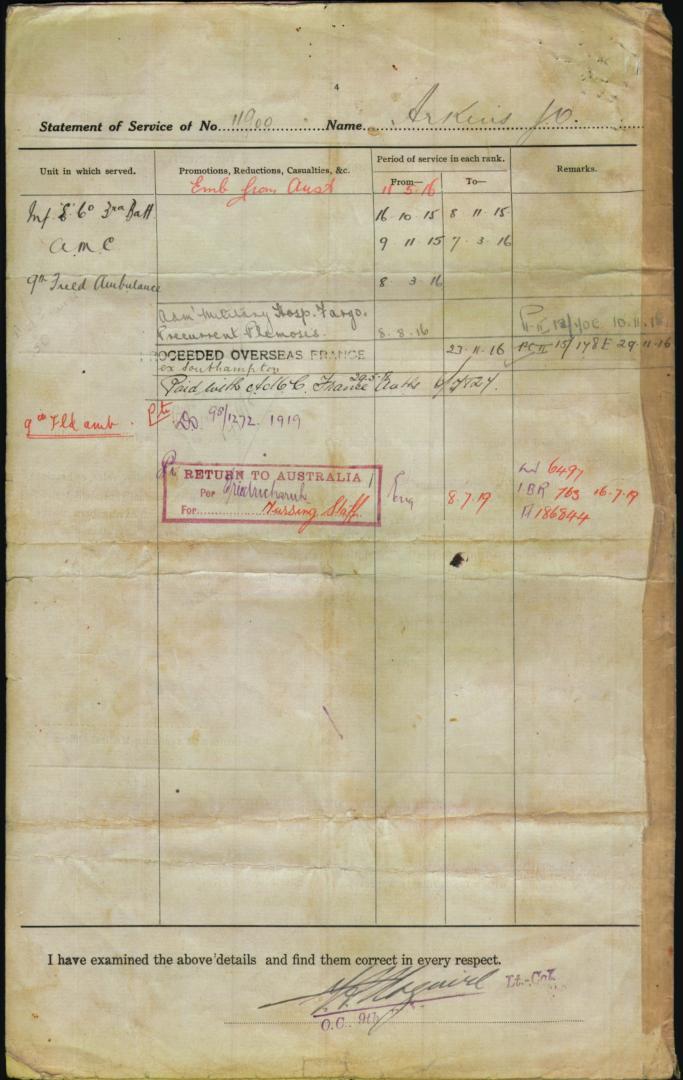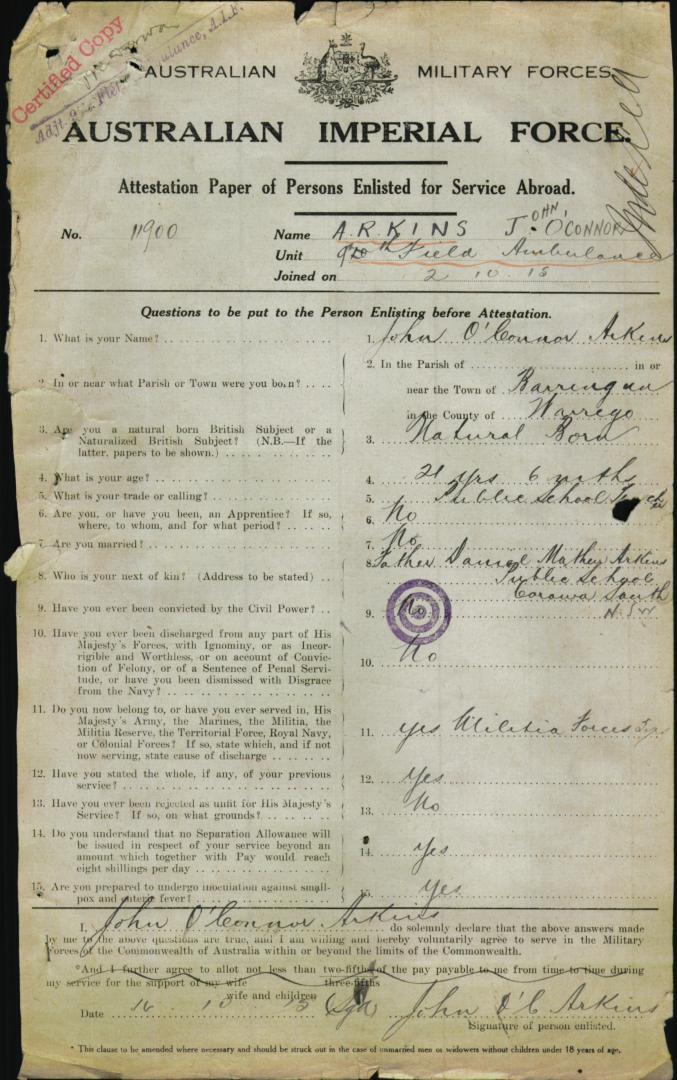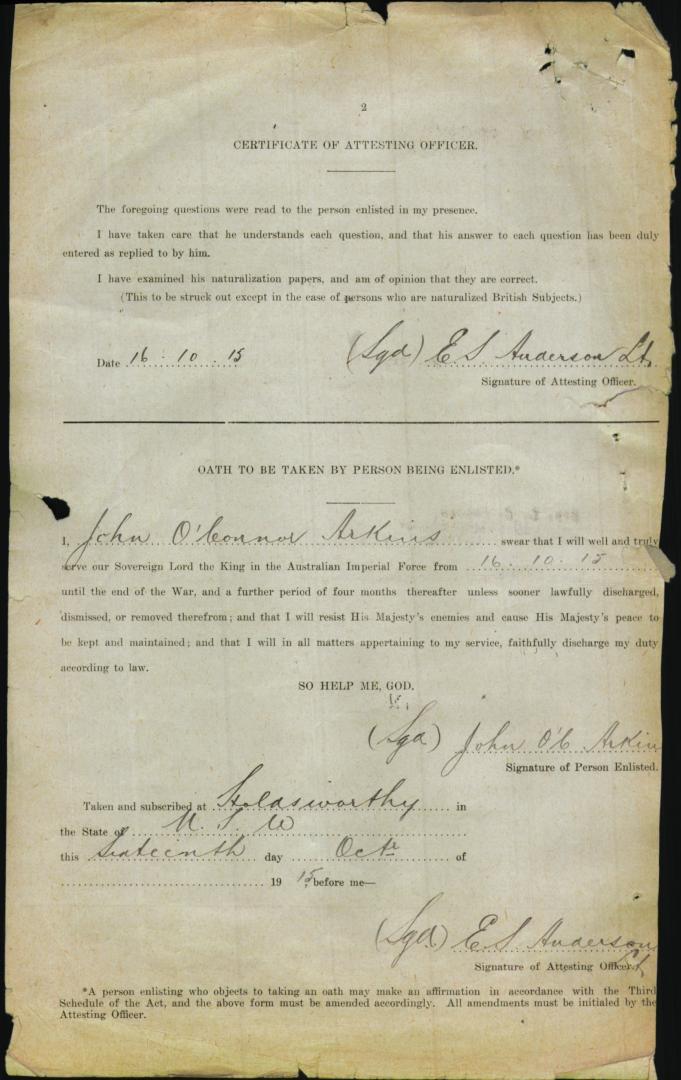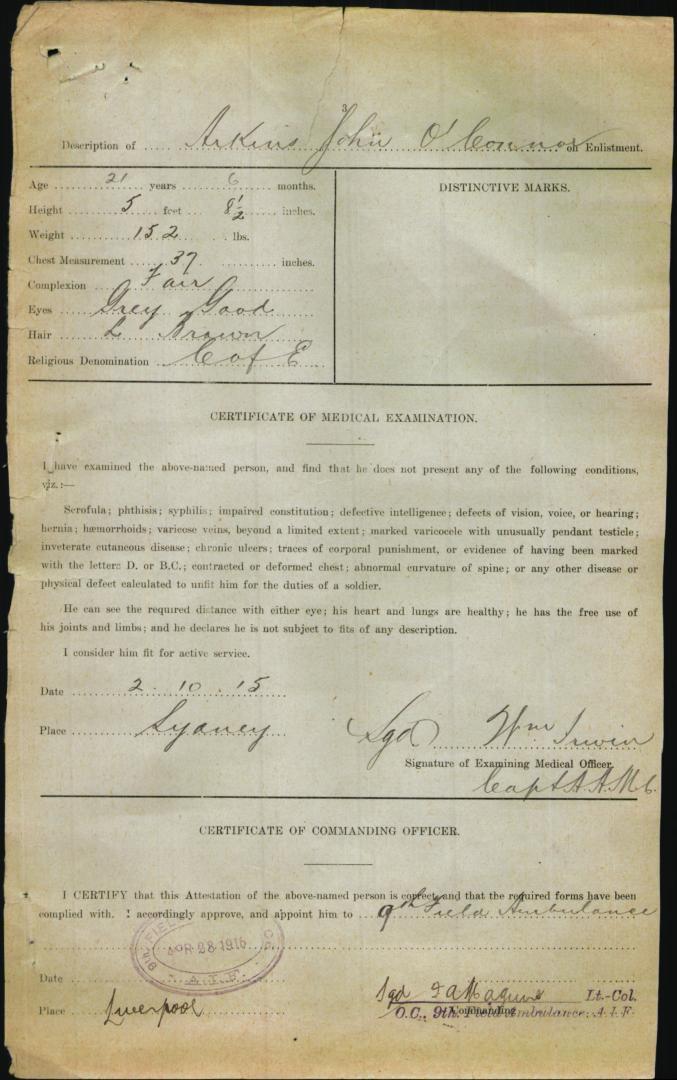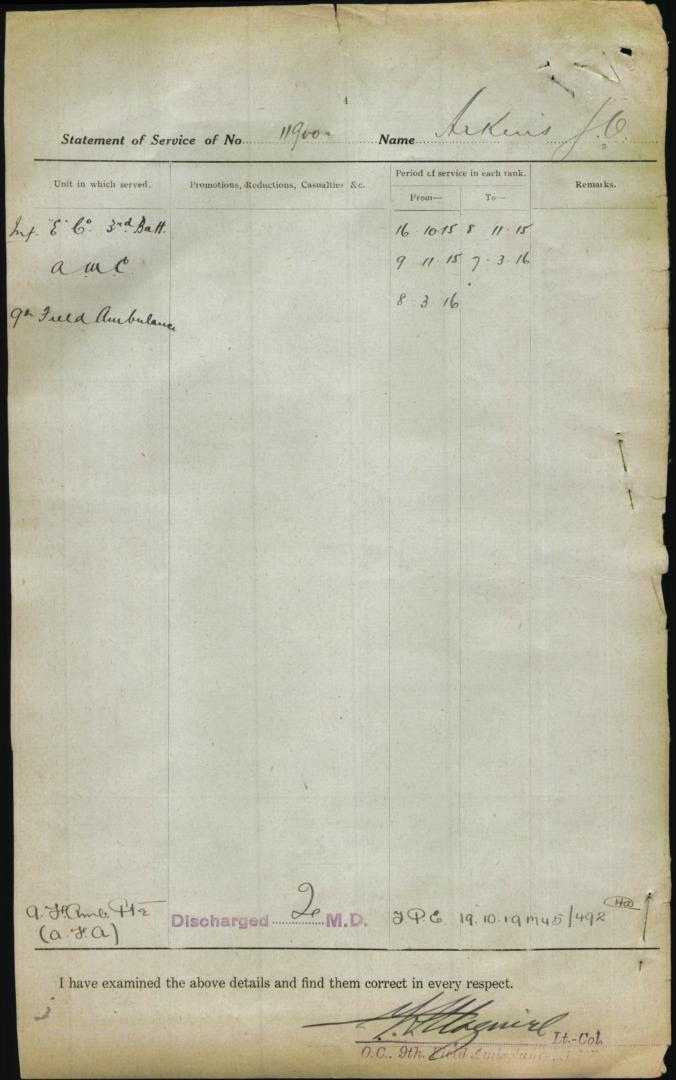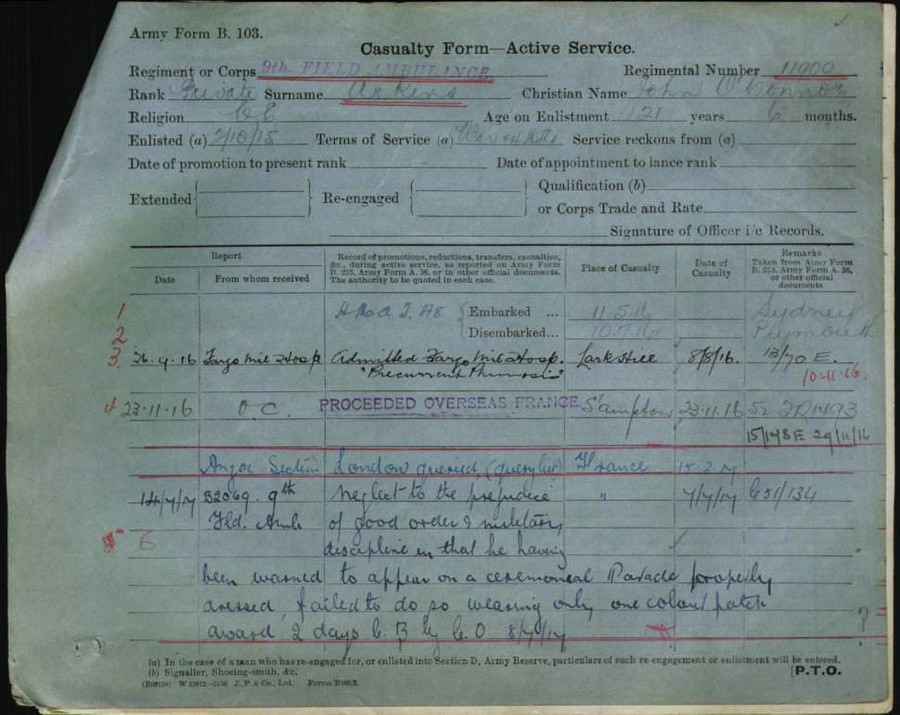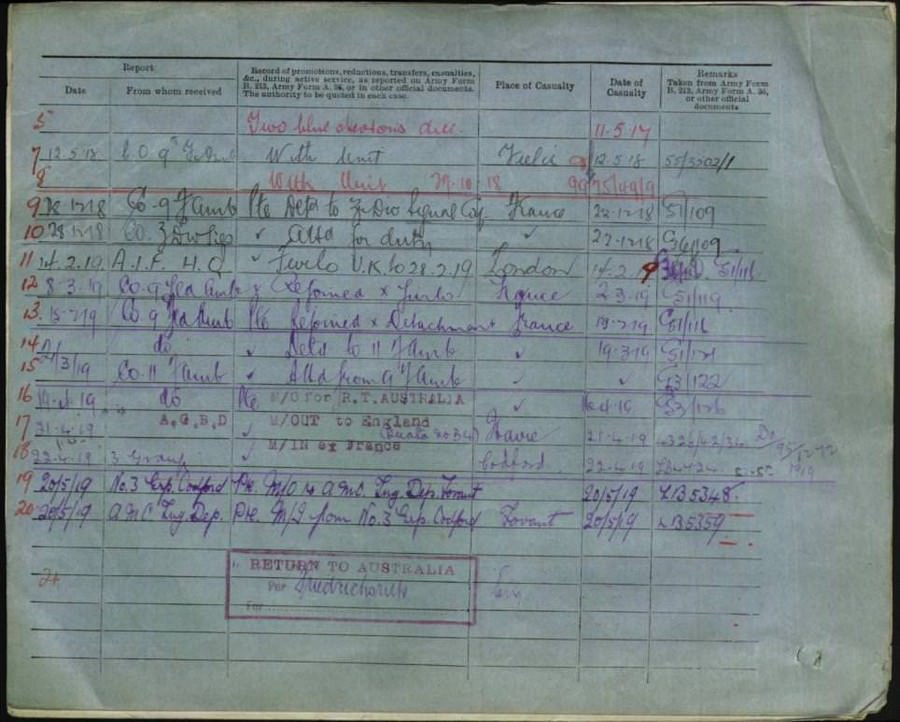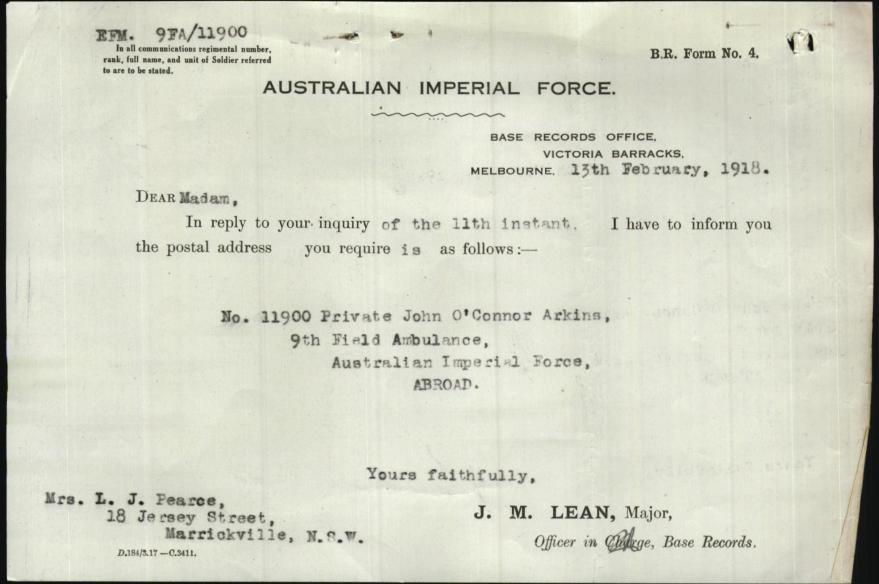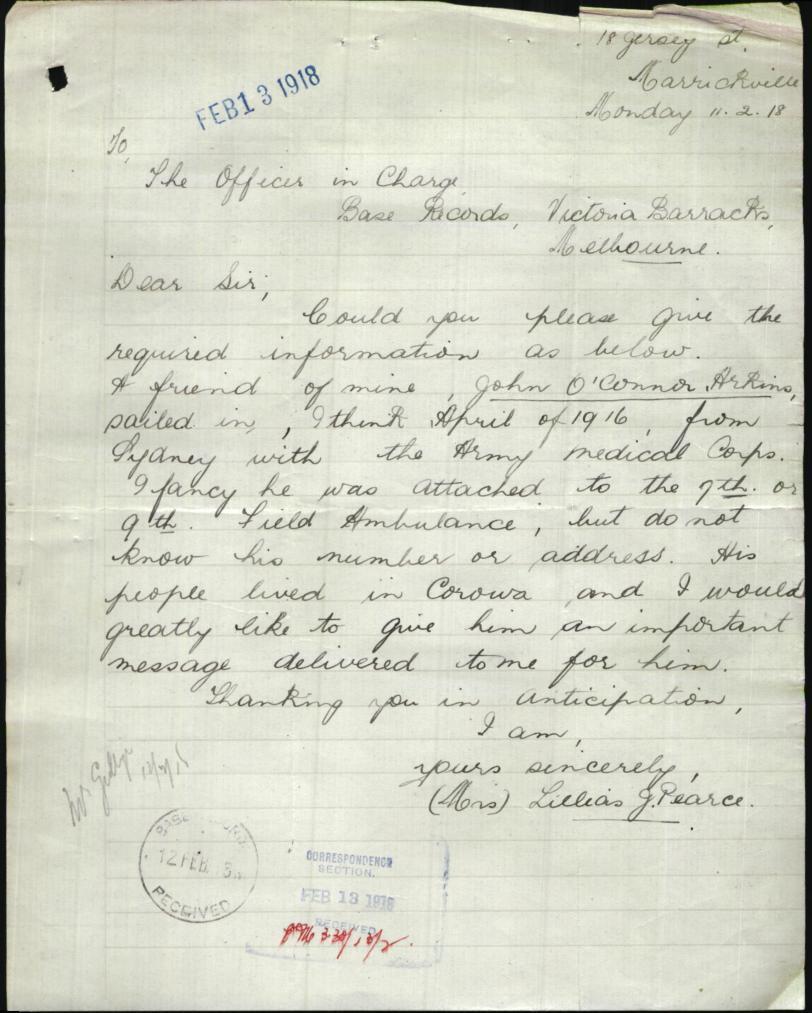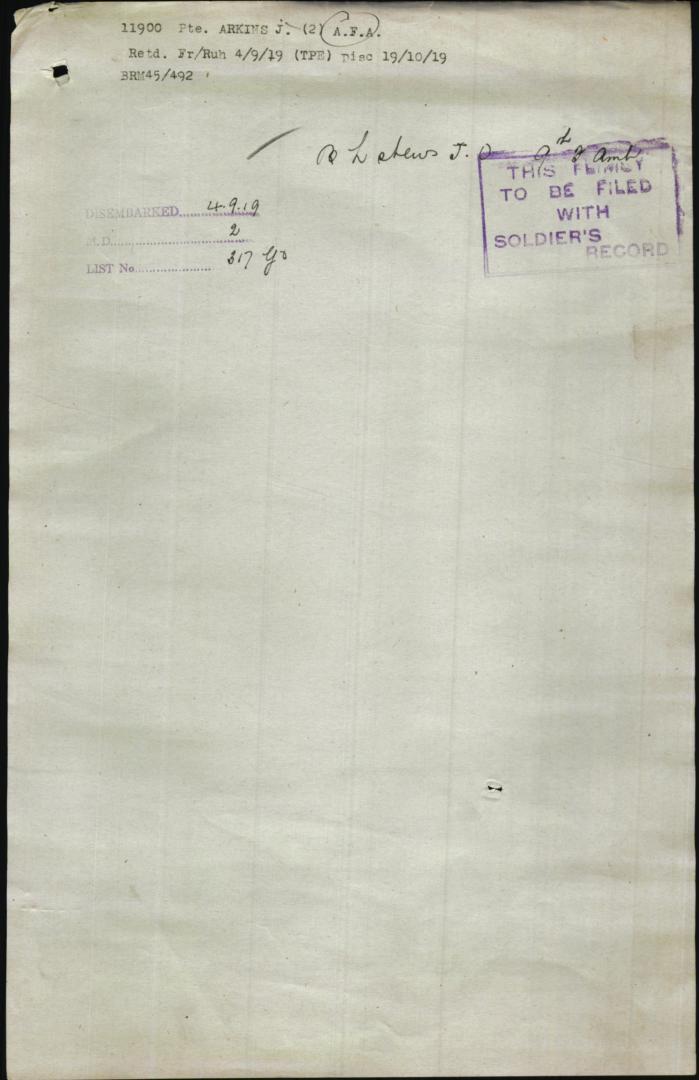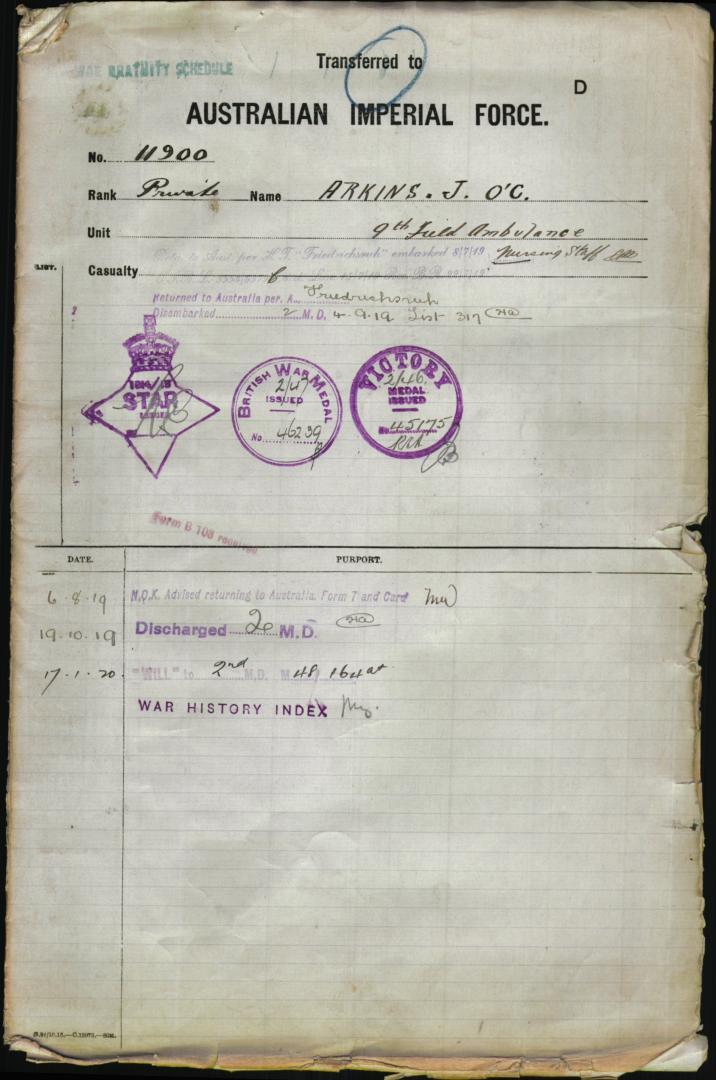9th Australian Field Ambulance
Private: 12059 Burton Disney RUTHERFOORD "RUTHERFORD"
Born: 1873. Bectine, Miatt, Ireland.
Died: 13th September 1934. 30 Thompson Street, Darlinghurst via East Sydney, New South Wales, Australia. Death Cert:11437/1934.
Father: John Rutherfoord. (1830-1908)
Mother: Laura Ellen Rutherfoord. nee: Booth. (1835-1877)
INFORMATION
Burton Disney Rutherford served with Lumsden's Horse service number 43 as a Trooper and was promoted to the rank of Veterinary Sergeant and was awarded the Queen's South Africa 1899-1902, 3 clasps, Cape Colony, Orange Free State, Johannesburg (Vet Serj B.D. Rutherford, Lumsdens Horse)
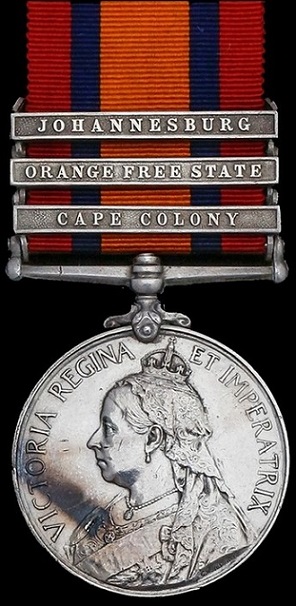
Burton served with the Behar Light Horse as a Trooper who was one of 54 men of the unit who served in the Boer War attached to Lumsden's Horse in 1900.

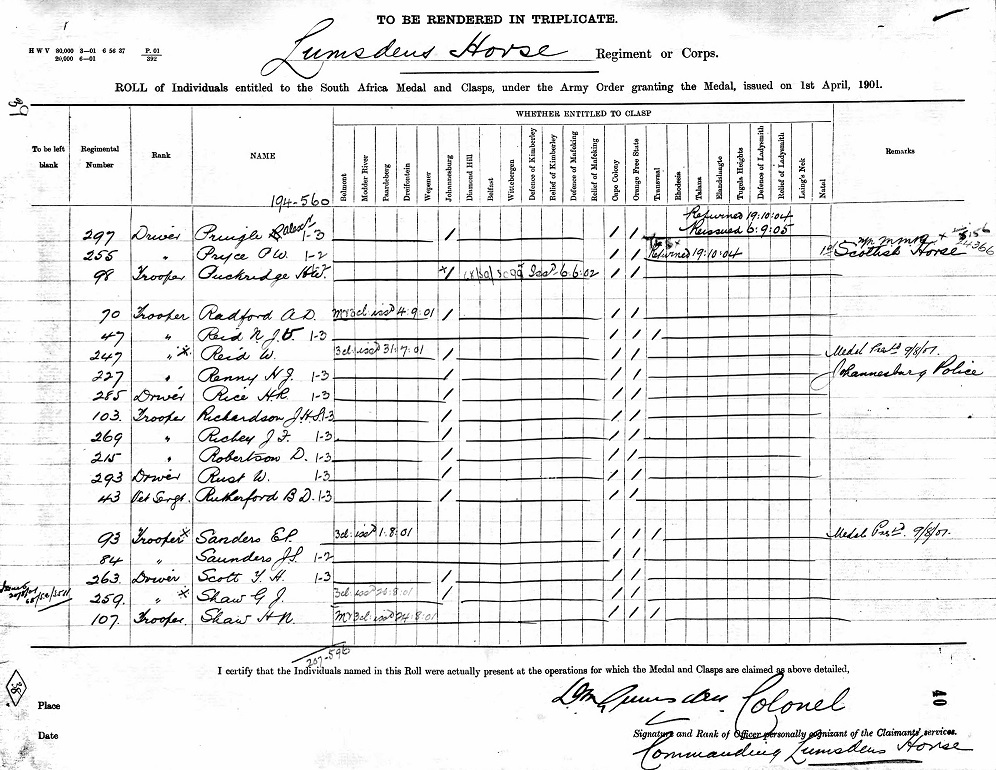
Queen South Africa Roll. Veterinary Sergeant: 43 Burton Disney Rutherford. Clasp. Johannesburg-Cape Colony- Orange Free State.
The ‘Atlantian,’ however, did not reach Bombay Harbour until 7 A.M. on December 31, with the following officers, non-commissioned officers, and men of Lumsden’s Horse on board:
Colonel Lumsden, Captain and Adjutant Taylor, Captain Beresford, Captain Noblett, Captain Holmes, Surgeon-Captain Powell. Staff—Regimental Sergeant-Major Hewitt, Regimental Quartermaster-Sergeant Dale, Staff-Sergeant Stephens, Farrier-Sergeant Marshall, Farrier-Sergeant Edwards, Pay-Sergeant Fraser, Orderly-Room Sergeant Graves, Sergeant Longman, Lance-Sergeant S.S. Cuthbert, Saddler Briggs, Privates Lowe, Lee, and Hayward. A Company—Company Sergeant-Major Mansfield, Company Quartermaster-Sergeant Booth, Sergeants Fox, Llewhellin, Stowell, Donald, and Rutherfoord, Corporal Macgillivray, Lance-Corporals Lemon and Godden, Privates E.S. Clifford, F.M. Clifford, C.H.M. Johnstone, Corbett, Dickens, Bradford, Cowen, Webbe, Kennedy, Courtenay, Zorab, Renny, Ritchie, Gordon, Atkinson, Watson, Brown, Henry, Allan, Aldis, John, Newton, Reid, Campbell, Bell, Macdonald, Haines, Smith, Hughes, Tancred, Bolst, Burnand, Dowd, and Palmer; Transport-Sergeant Power, Privates Lovegrove, Doyle, Manville, Paxton, Daly, and Scott; and Lance-Corporal Wheeler. B Company—Sergeant Conduit, Lance-Sergeant Warburton, Corporal Jackman, Privates Nicolay, Bagge, Innes, Williams, Nolan, Betts, Turner, Powis, Thelwall, Lytle, Spicer, Lungley, Winder, Dexter, Martin, Moorhouse, Maxwell, and Allardice; Transport-Sergeant Smith, Privates Rice, Crux, Meares, Rust, and Quartermaster-Sergeant Morris.
Before going on shore at Bombay, Colonel Lumsden received the following telegram from Sir Patrick Playfair, C.I.E., Chairman of the Calcutta Reception Committee:
The people of Calcutta bid you and your gallant corps welcome. They are proud of the way in which Lumsden’s Horse has represented India against Britain’s enemies. They wish to do you honour on arrival in Calcutta. You will be given a public reception, and the military bands will play you into your camp. It is proposed that your corps should take part in the Proclamation Parade on the morning of January 1, and then attend a special Divine Service at the Cathedral. His Excellency the Viceroy will entertain the corps at luncheon on Wednesday, January 2, and the reception committee are organising an evening party in the Town Hall for the night of the same day.
Burton Disney Rutherford enlisted with the 9th Australian Field Ambulance at Holdsworthy Army Camp on the 21st October 1915 and proceeded overseas for England on the 1st May 1916 0n b0ard HMAT A24 " " and disembarked at Plymouth England on the 9th July 1916. Burton was marched into camp and proceeded overseas for France via Southampton on the 23rd November 1916.

12059 PTE. B.D. RUTHERFORD 9 F. AMB. A.I.F.
Burton was admitted to hospital on the 21st December suffering from Influenza and was discharged to duty on the 26th and re joined his unit. On the 20th February 1917 Burton was Charged with the Offence of whilst in France on the 23rd December 1917. Conduct to the prejudice of good order and Military Discipline in that being awarded Fatigue Duty failed to appear for such Fatigue. Award 4 Days Forfeit Pay No:2 with Forfeiture of 7 Days by C.O.
The 9th Australian Field Ambulance supported the 9th Infantry Brigade in all theatres of the Great War.
7th June 1917.
THE BATTLE OF MESSINES
The 3rd Australian Divisions first major offensive was at Messines Ridge on the 7th June 1917. The Australian 3rd Division was a part of the II Anzac Corps which was allotted to the first assault. The 25th New Zealand, 3rd Australian Division with the 4th Australian Division in reserve. The 4th Division were battle hardened troops who had fought many major battles. The 3rd Australian Division were having problems getting to the "jump off" point. The day before the 9th and 10th Infantry Brigades were bombarded by German Gas-Shells around Hill 63 and Ploegsteert Wood. Many of the Aussies were not wearing gas masks, but despite this they pressed on even though they received 500 casualties.
The Battle for Messines Ridge during May-June 1917 saw 35 officers and 1,631 other ranks loose their lives.
9th Infantry Brigade Casualties.
| 33rd Battalion. AIF | 8 Officers | 382 Other ranks |
| 34th Battalion. AIF | 10 Officers | 378 Other ranks |
| 35th Battalion. AIF | 5 Officers | 431 Other ranks |
| 36th Battalion. AIF | 9 Officers | 421 Other ranks |
| 9th Machine Gun Company. AIF | 2 Officer | 17 Other ranks |
| 9th Light Trench Mortar Battery. | 1 Officer | 2 Other ranks |

FIELD DRESSING STATION, MESSINES 7th June 1917.
12th October 1917
THE BATTLE OF PASSCHENDAELE I
At 1:30 am rain showers began. By 2:30 am it was raining lightly but steadily, by 3:30 fairly heavily. the infantry moved through the pitch dark in single file. In some battalions each man held on to the equipment of the man ahead of him; if touch was broken, those in front had to come back. The news that the line as reported by the 66th division was not held only just reached the incoming troops. Accordingly, in the right brigade (9th) the leading Company Commanders Captain: Clarence Smith JEFFRIES. V.C. and Captain: Telford Graham GILDER M.C. both of the 34th Battalion stopped their men at the entrance to Broodseinde railway cutting, and themselves went to make sure that their column might not run into the enemy.
The Battle of Passchendaele saw 60 Officers and 1,322 other ranks loose their lives.
9th Infantry Brigade Casualties.
| 33rd Battalion. AIF | 11 Officers | 273 Other ranks |
| 34th Battalion. AIF | 15 Officers | 323 Other ranks |
| 35th Battalion. AIF | 18 Officers | 296 Other ranks |
| 36th Battalion. AIF | 15 Officers | 383 Other ranks |
| 9th Machine Gun Company. AIF | 1 Officer | 36 Other ranks |
| 9th Light Trench Mortar Battery. | - Officer | 11 Other ranks |
Burton was treated for an Ulcer on his Tongue at the 1st Australian Auxiliary Hospital and was discharged to England on Furlo and was marched in the the No:2 Command Depot at Weymouth before he returned to Australia on the 7th July 1918 where he was Discharged on the 3rd of August 1918 as Medically Unfit.
Family Information
Burton was initiated on the 18th September 1895 in the Lightin Tirhoot Lodge 1998 at Mazufferpore, Bengal and then on the 8th February 1898 in The True Blue Lodge at Motihari Bengal. Burton served during the Boer War Lumsden's Horse and the Behar Horse in India for 5 years. Burton noted that his next of kin was Lieutenant Colonel Rutherford DSO who served as Captain John Brownley Rutherfoord in South Africa with Behar Light Horse and Lumsden's Horse.
A unique Boer War D.S.O. group of three to Captain J. B. Rutherford, Behar Light Horse, late Lumsden's Horse
Distinguished Service Order, V.R., silver-gilt and enamel; Queen's South Africa 1899-1902, 3 clasps, Cape Colony, Orange Free State, Johannesburg (Capt. J. B. Rutherford, Lumsdens Horse); Volunteer Force Long Service, E.VII.R. (Captn: J. B. Rutherford, D.S.O., Behar Lt. Horse.), minor enamel damage and depression to D.S.O. centre, official corrections on the third, very fine (3)
A unique award to the Behar Light Horse for South Africa.
D.S.O. London Gazette 19 April 1901:
'In recognition of services during the operations in South Africa.'
John Brownley Rutherford was born in October 1864 and commissioned into the Behar Light Horse. He was one of 54 men of the unit who served in the Boer War attached to Lumsden's Horse in 1900. Following the announcement of his appointment to the Distinguished Service Order, he was invested with the insignia by the Lieutenant Governor of Begal in 1902. Rutherford is recorded as having died in India.
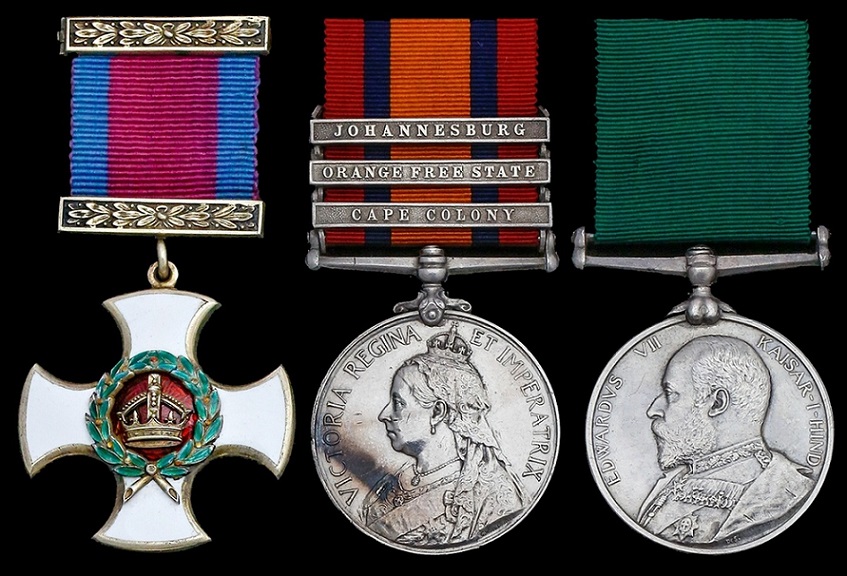
Distinguished Service Order, V.R., silver-gilt and enamel; Queen's South Africa 1899-1902, 3 clasps, Cape Colony, Orange Free State, Johannesburg (Capt. J. B. Rutherford, Lumsdens Horse); Volunteer Force Long Service, E.VII.R. (Captn: J. B. Rutherford, D.S.O., Behar Lt. Horse.),
LUMSDEN'S HORSE
On the evening of the 29thApril 1899 Colonel Ross received orders that the corps was to make a demonstration next morning at daylight on the right flank of the Boer lines for the purpose of drawing them from their position and enabling the 14th Brigade, under General Maxwell, which was to have come up on our right, to get behind and cut them off.
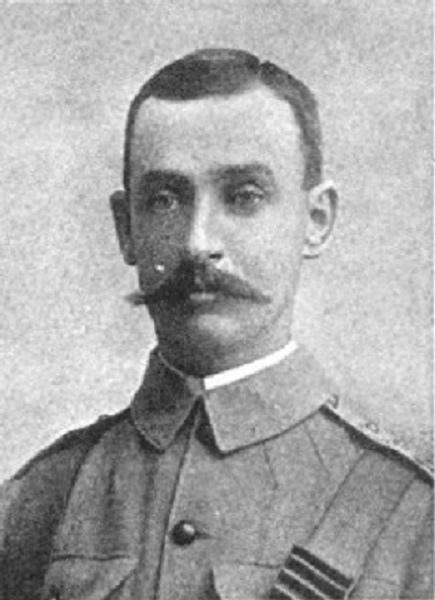
Captain: John Brownley Rutherfoord. DSO
The Mounted Infantry portion of General Tucker’s division, under Colonel Henry, joined hands with us at 5 A.M., half a mile from our camp. A portion of my corps was ordered to occupy Gun Kopje, a position 155believed to be held by the Boers, about four miles distant on our right front, the remainder extending and taking up positions on our left. I went forward with the right flank, Major Showers accompanying me. This portion consisted of the Adjutant, Captain Taylor, Captains Rutherfoord, Clifford, and Chamney, Lieutenants Sidey and Pugh, and four sections, the others having been detached by order of Colonel Ross to hold various points. Mr. Pugh was sent out in advance with the scouts, and it was when on this duty that Private Franks was shot. Mr. Pugh very pluckily assisted him in getting on his horse and endeavoured to take him out of the fire; but Franks was unable to stay on his horse, and, dropping to the ground, had to be left. Mr. Pugh and the remaining scouts were only just able to save themselves by galloping up and joining us on the kopje at the extreme right, to which we had just advanced, and which we held from 7 A.M. until ordered to retire at about 1 o’clock.
Early in the morning I ordered Corporal Chartres with eight men to occupy a kopje about 800 yards to our right and prevent the Boers turning our flank. There they held their ground until ordered to fall back. It was a small party for this important position, but in the circumstances no more could be spared, I having only about sixty men with me, twenty of whom, under Lieutenant Sidey, were detached by Colonel Ross to protect the Vickers-Maxim (commonly styled ‘pom-pom’) in the centre of the position.
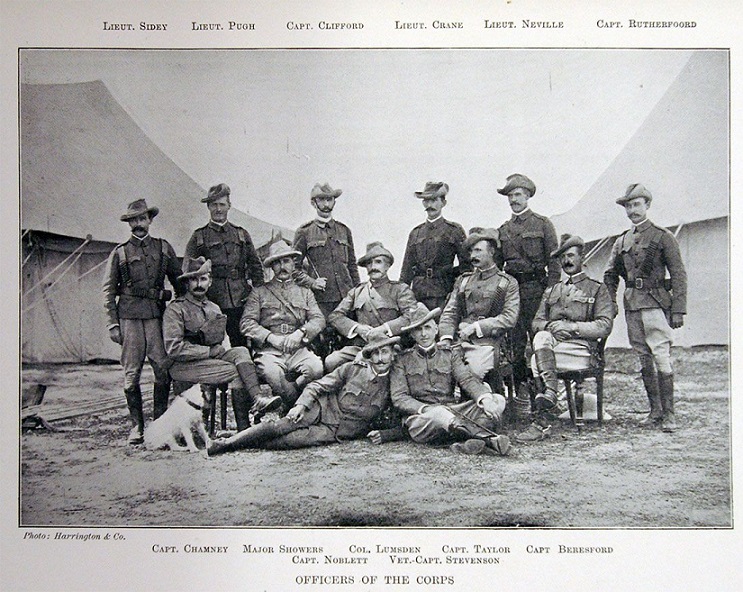
The following was then the general disposition:
There were four ridges diverging northerly towards the enemy. The extreme spur of the right ridge was held by myself with four sections Lumsden’s Horse as described; the second held by Lieutenant Crane and one section, he being directed there at the outset by Colonel Ross; the third and fourth by the rest of the brigade, the two pom-poms and our Maxim being at the head of the re-entrant between the second and third ridges, with Captain Noblett and three sections on its left.
Shortly after our arrival the Boers took up a position on a kopje about 1,500 yards directly in front, and quickly opened rifle fire on our position. Fortunately the men had time to ensconce themselves behind rocks, and, consequently, though bullets fell fast about them, they were able to maintain a steady fire on the enemy without exposing themselves. It was here, I deeply regret to say, that Major Showers met his death. He was at the extreme right of the firing line and under a hot flanking fire from the Boers, who had moved a party into a donga some 300 or 400 yards to their left.
I personally begged him not to expose himself, as also did Captains Chamney and Rutherfoord; but he would stand erect, using his field glasses and presenting a most conspicuous mark for the enemy’s fire, 156which resulted fatally to him shortly after noon, a Mauser bullet entering his right side half way down and coming out through his left arm above the elbow. In risking his own life he had drawn a heavy fire on the spot where he fell, and it was with much danger and difficulty that Captain Powell, with Captain Chamney and others, succeeded in removing him from the summit of the hill to a place of safety about thirty yards down. I should like to take this opportunity of adding a few words by way of tribute to the memory of Major Showers. When he heard of the corps being raised, he was in command of the Surma Valley Light Horse in Cachar, with the rank of Colonel, and was looked upon as one of the smartest commanders of Volunteer Cavalry in India. He wrote me and said, ‘If you will take me as your second in command, I will gladly forfeit my rank and come as Major.’ I may have made many fortunate selections in choosing my officers, but I never made a wiser one than in selecting Colonel Showers. A better or a braver man never breathed, and his loss to me so early in the campaign was irreparable.
Shortly after the commencement of the Boer attack the whole of the left were forced to retire owing to their flank being turned, taking one pom-pom and our Maxim with them. Captain Noblett was consequently obliged, at about 11 A.M., to conform to this movement, having no support, and took his men out of the shell fire with great difficulty but had only a few casualties.
Lieutenant Crane, receiving no orders to retire, and being detached from me and unable to communicate with me or I with him, deemed it his duty to retain his position as long as possible, which resulted in close fighting and the loss of nearly half his section.
While the Royal Engineer Company were busy blowing up the railway at this point, Captain Rutherfoord on the left, with our scouts, with his usual keenness soon came in touch with those of the enemy, and a brisk fire ensued on both sides, Captain Rutherfoord holding his position until I was able to reinforce him on his right flank. Colonel Ross soon hurried up further reinforcements on his left, which enabled us to hold the kopje and forced the enemy to fall back on the convoy they were covering. As night was approaching, pursuit with our tired horses was utterly hopeless, and we were ordered to move to our left and encamp at Germiston, which lay in the hollow behind us.
This, being the junction of railway lines that branch off in several directions, was the key of the Boer position. Our day’s movements had, however, been very successful, and Colonel Henry issued a brigade order next morning saying he had been congratulated by the Commander-in-Chief on the day’s work; while Colonel Ross was also congratulated on the prominent part taken by his corps, which resulted in the capture of fourteen engines and a large quantity of rolling-stock. This was very pleasant news to us, but the work was telling its tale on the horses, who 244were dead beat and fast tumbling to pieces from overwork and want of food. Our casualty was fortunately only one during the day—namely, Private J.D. Bewsher, who was shot through the knee while we were engaging the enemy opposite Boksburg.
Owing to the pace we had travelled and the hilly nature of the country, our Maxim gun under Captain Holmes, with its escort, had not come into camp when we retired to bed. The men, as on many previous occasions, had to turn in without food, and their horses were in the same plight.
After Pretoria had been taken A Company and Headquarters remained at Irene, and B Company went to Kalfontein, ten miles south on the line. The duties at both places were similar, in that they had to patrol the line and the neighbourhood. One of the Irene regular patrols was to Pretoria and back daily.
On one of the usual patrols into that town Captain Rutherfoord passed a German ambulance proceeding south, who explained that they had been 259allowed to do so, but carried no pass. Arriving at Pretoria, he reported the fact to the authorities, and also that he had stopped the ambulance until he could get orders concerning it. On inquiry, having ascertained that nothing was known about it, he obtained a letter to the Commandant at Irene, who was told to ascertain that the ambulance people were carrying no papers for the use of the enemy, and, if satisfied, to allow them to proceed. The Commandant, being a man of high ideals, did not see his way to thoroughly searching the ambulance, which contained four German nurses, in addition to the four doctors, and he therefore allowed them to pass on having taken the senior doctor’s word of honour that they had with them nothing of any use to the enemy in the way of papers. The ambulance then went on its way, but stopped the night at Kalfontein, ten miles beyond Irene. In the evening a wire came to us for an officer’s patrol to bring all those people back to Pretoria. Captain Rutherfoord was accordingly sent to Kalfontein for the purpose, and returned in the evening with the party.
Colonel Lumsden and all of us felt so sorry for the prisoners that we decided to ask them to dinner, which invitation being accepted, in due course we all sat down together in our little mess-house.
During our stay at Irene, as it was bitterly cold, we had run up a small hut: walls of piled-up stones, a tin roof, and a most cunningly contrived fireplace which did not smoke. We decorated the place with flowers, had a tip-top dinner, and drank crème de menthe as our only beverage. The dinner went off in the wonderful way dinners do. None of us could talk German, and none of them English, and yet we conversed freely and had the greatest fun. The show concluded with songs, and the last remembrance I have of it was that the Colonel and the prettiest ‘sister’ were taking down one another’s addresses and betting gloves about something in the quietest corner. Rutherfoord had been hiding as much as possible, as he felt himself to blame for being the cause of all their trouble, but we gave him away at the end, and though they all pretended to be very angry with him, we unanimously allowed that he had beaten all but the Colonel in winning the favours of the fair sex.
At about 2 A.M. we escorted them back to their caravan and said good-night, first of all pointing out that a sentry was posted over them, with orders to shoot at sight if anyone left the waggons during the night. They started for Pretoria at daybreak, but most of the officers were there to see them off, while one met them a few miles up the road. The Colonel was late for breakfast that morning. We heard afterwards that on arrival at Pretoria they were searched, and the result was that the doctors went to gaol, and the dear ladies were sent under supervision out of the country. We all, however, are quite certain that they were innocent victims of Boer duplicity.
Some officers of Lumsden’s Horse were in the Pretoria Club that night, but it was not they who gave away the countersign. Occasional visits to Pretoria in the vain hope of finding that some articles of luxury or much-needed outfit could be bought there became great events in the lives of both officers and men during their banishment to lines of communication. Somehow a goodly number of them, for whom sport was an irresistible attraction, managed to assemble 262on ground a mile outside the racecourse when three score of competitors started for the first military steeplechase ever ridden near Pretoria. After this event Colonel Lumsden wrote with pardonable pride:
Beharis will be pleased to hear that Captain Rutherfoord, of ours, won the first paper-chase in Pretoria. There were sixty starters over a stiff country, with the result that grief was plentiful.
Pretoria did not give itself away all at once to the temptations of a novel spectacle; but there were ladies in carriages among the little crowd of sightseers, and some stolid burghers looked on with approval, while others took part in the chase, for Boers have a bond of sympathy with us in love of horse-racing and field sports. The Commander-in-Chief came, sitting his shapely chestnut with a firmer and more workmanlike ease than half the horsemen present could boast of, and looking as if he could still show them all the way over a stiff hunting country. His appearance at the starting-point was a signal for marshalling the forces into line.
Then a Staff officer gave the word to go, and away went the motley field, more than half a hundred strong, spurring, 264hustling, charging like a Cavalry squadron for all they were worth. A light-weight, who served with distinction in Her Majesty’s Navy years ago, was quickest off, and led them over the two stone walls, closely followed by Captain Cox, of the New South Wales Lancers. Then came the second flight, riding for the walls knee to knee. Thanks to bold hearts and resolute riding, they all got over. A fall in that dense formation with another rank rushing close behind would have brought more than one rider to unutterable grief. But the ranks began to thin where a spruit had to be crossed, with steep banks into and out of the drift. There the ‘Skipper’s’ pony, with speed unchecked, gained a good lead, but he came down at the next made-up fence and gave his rider a nasty fall. The active light-weight, however, nipped into the saddle and went on cheery as ever. Then in clouds of dust, through which the fences could scarcely be seen, leggy horses and diminutive ponies rushed onward, jostling for a lead as before. Captain McNeil, of Montmorency’s Scouts, came down and broke his collar-bone, and Gibbs, of the Somerset Yeomanry, falling with his horse on top of him, had two ribs broken. But still ‘the chase went sweeping heedless by’ over a wide dug-out, with a hurdle to screen it and a trappy ditch where the road had to be crossed. Then they spread out to gallop over stony ground for the spruit, into which many floundered. The pace was beginning to tell on horses out of condition as they struggled up hill to go for a formidable bank of sandbags topped with loose earth that had been dug out of the ditch in front. Down-hill again to a hollow, where the little stream meandering between boggy ground had to be crossed three times. There several jaded steeds came to a standstill, having shot their bolts, and only a select few went up the next hill to the trappiest fence of all, where water flowed between deep banks. There the ‘Skipper’ got his third fall, but he mounted again and followed the leaders as they rounded the flag and rode for home. Captain Cox had also been left behind, and the running was taken up by Captain Rutherfoord, of Lumsden’s Horse, with Major Kenna, V.C., of the 21st Lancers, in close attendance. Flanks were heaving and pipes wheezing before the next boulder-strewn ridge had been crossed. ‘A run is nothing without music,’ said a subaltern as he roused his panting 265steed for another effort. He nearly blundered, as many others did, over the next little fence, and they were being left hopelessly behind. Kenna and Rutherfoord charged the last stone wall side by side, and rose together at it. Rutherfoord landed first, and had the race in hand, but, mistaking the post, eased his horse too soon. So Kenna, V.C., got a neck ahead in the straight run home, and thus won his right to claim the brush or whatever may be a substitute for it in paper-chasing. That was the official verdict, but Lumsden’s Horse still hold that their champion was first past the post.
One day a pleasant incident enlivened Colonel Lumsden’s ordinarily uneventful round of inspections. He had been visiting posts south of Irene, and was hurrying back to headquarters on an affair of urgent importance, when a train stopped at one of the sidings. Before he had time to realise that it was a special, or to make any inquiries, the train began to move again. So he jumped on to the nearest platform, and presently found himself in a corridor, cleaner and more carefully looked after than any he had seen on a Transvaal railway up to that time. Not knowing what to make of it, and half-expecting to meet an angry Chief of the Staff face to face, he refrained from exploring further. Presently a lady passed and said, ‘Won’t you come in?’ Colonel Lumsden was smoking at the time, and declined for that reason. ‘But mother wishes you to come,’ was the reply. So the gallant Colonel yielded with ready grace, and found himself in the presence of Lady Roberts, who, with her daughters, was on the way to Pretoria. They were just then nearing Irene, and Colonel Lumsden drew attention to the camp of his Indian Volunteers, in whom he thought Lady Roberts would naturally be much interested. To his surprise he saw a huge bonfire burning, and in silhouette against it were the words, ‘Welcome to Lady Roberts!’ Sergeant-Major Stephens had hit upon this happy idea, and put it into execution just at the right moment. One of the daughters, seeing it, said, ‘Oh, mother, there is a warm welcome for you, at any rate!’ Lady Roberts frequently referred to this impromptu welcome in conversation with Colonel Lumsden afterwards, and spoke appreciatively of the pleasure it had given her.
For nearly two months from the fall of Pretoria on June 5 to 26 July, 29th Lumsden’s Horse were scattered up and down the railway lines between Pretoria and Johannesburg.
Colonel Lumsden gives the following official account of this period in a letter to the executive committee of his corps:
The names of several other applicants are still before His Excellency, and I hope to advise you soon of their having received commissions also. At the same time I do not expect any of these will leave the corps until its disbandment. Young Maurice Clifford has been taken on by General Ian Hamilton as orderly, and is also likely to receive a commission, as well as Leslie Williams, son of the late popular Gwatkin Williams.
Captain Rutherfoord, Lieutenant Crane, and Sergeant Macnamara have been offered commissions in the Transvaal Mounted Police, and will probably remain in this country, as I believe will a good many others.
Captain Stevenson is likely to obtain an important veterinary appointment out here, and Dr. (Captain) Powell is also in the running for a high medical post should he prefer this to returning to India.
All the above, added to the continued requisitions for men of my corps for various offices, point to the esteem in which they are held by the authorities apart from their fighting qualities. In fact, were it not for strong remonstrances on my part to official requests, I should be in a fair way to lose a big percentage of my men before the work for which they came out has been completed.
In my previous letter I mentioned the sad plight to which our horses had been reduced, and that at the time of writing I doubted my ability to place ninety mounted men in the field fit for a two-days’ march. You will now be pleased to hear that in this respect things have improved, and that 269I can now mount 180 officers and men on fairly serviceable animals, few, however, remaining of our original Indian chargers. In this connection I may also mention that out of sixty Argentine remounts received at Kroonstad, only one is alive.
Now comes the important question of finance.
I have been spending various sums on comforts for the men, the largest item being 50l. for a much-needed supply of tobacco.
The men are very badly in want of clothes, especially breeches, tunics, and boots. I have indented on the Government Stores at Bloemfontein for a complete outfit, and hope to receive it shortly. This, of course, will be issued to us gratis. Nothing in the shape of clothing can be got for money.
I am enclosing a statement showing roughly the financial position of the corps. From this you will see that, provided the war is not prolonged beyond our present anticipations, there will be an ample balance left to admit of the payments estimated for in Calcutta.
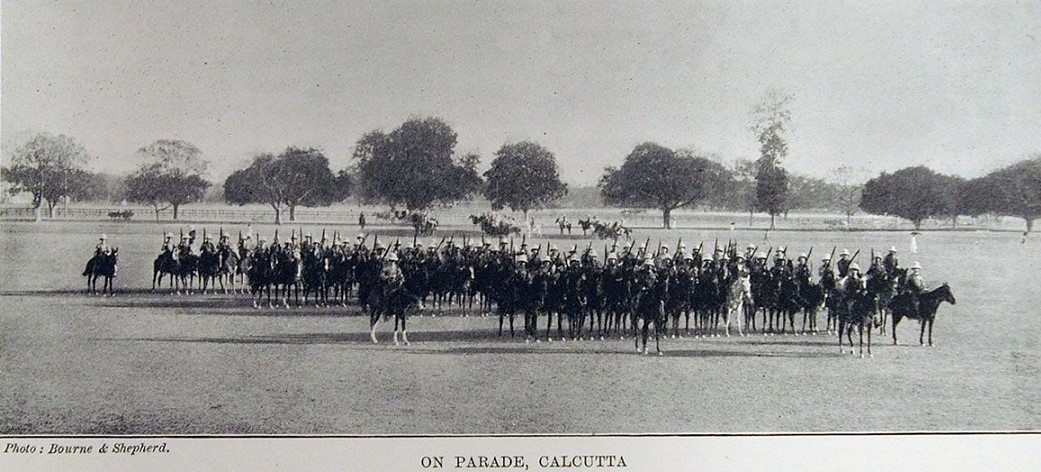
On January 4, 1901, just one year after they had assembled on the Maidan full of high hopes and noble aspirations, these Indian Volunteers, who had made for themselves a name that will long be honoured among British soldiers, were disbanded. So the curtain fell on the war scene in which the two hundred and fifty men known to history as Lumsden’s Horse played their parts. They had been in the field ten months, marched from camp to camp over 1,500 miles, fought in thirty-nine actions, lost seven men killed in action, two from enteric, several at various times incapacitated by wounds; they had left nearly sixty of their number in South Africa, some as administrators, some in the Regular Army, and some in the Police; they had brought back to Calcutta only four of the horses with which they started, and had used up 750 remounts. They had been twice mentioned in despatches by the Field-Marshal, and had been praised by every General under whom they served. Out of a total of fifteen officers, one, Colonel Lumsden, was decorated by Her Majesty Queen Victoria with the C.B.; another, Major Chamney, received the C.M.G.; two others, Captain Rutherfoord and Lieutenant Pugh, obtained the D.S.O.

The Adjutant and the two Regular officers who had commanded companies were promoted a step, to the rank of Brevet-Major. Trooper J.A. Graham, whose act of valour at Crocodile River has been recorded, received the Distinguished Conduct Medal; similar decorations were awarded to Corporal Percy Jones, Troopers P.C. Preston, H.N. Betts, W.E. Dexter, and Regimental Sergeant-Major Marsham; while seven other N.C.O.s and troopers were mentioned in despatches. It is a noteworthy 410fact that of all those whose names were brought forward by Colonel Lumsden not one failed to obtain recognition from the Commander-in-Chief, and only three received less honourable distinctions than their Colonel thought they were entitled to. All these things prove that nobody was recommended except for meritorious services of which clear and conclusive evidence could be given. All soldiers will appreciate what that means. And of twenty-three who obtained commissions in the Regular Army and others gazetted to Irregular corps, only two resigned subsequently. Colonel Lumsden was exceptionally fortunate in securing this number of commissions, and still more fortunate in selecting men worthy to retain them. It must not be forgotten, however, that the majority of those serving in the ranks of Lumsden’s Horse were Public School boys, some of whom may have failed in their examinations for Sandhurst, and gone out to fight their way in India as indigo, tea, and coffee planters, and who, when the occasion arose, were just the right men to fill the appointments they got. Their merits were recognised not only by our own military authorities, but also by the enemy. One Boer told the Rev. J.H. Siddons, of Great Berkhampstead, whose letter is quoted by permission, that Lumsden’s Horse were ‘exceptionally good both at scouting and shooting.’ The same authority also says that he had similar testimony to their merits from a corporal of one of the Cavalry regiments. This is not surprising, as Lumsden’s Horse and their comrades of the Line were always on good terms, and had a mutual admiration for each other. In a letter to the Colonel, Trooper D. Morison says:
I am afraid I cannot help you much with my personal experiences and views. No doubt everyone who writes you on the subject will be full of praise and admiration for Mr. Thomas Atkins as we found him on the veldt. But I should like to record what a splendid chap he is. Whether Scotch, Irish, Welsh, or from any other part of the country, he is all the same when it comes to a tight corner.
Decorations
Colonel D.M. Lumsden, Assam Valley Light Horse C.B.
Major H. Chamney, Surma Valley Light Horse.
Captain J.B. Rutherfoord, Behar Light Horse D.S.O.
Lieutenant H.O. Pugh, Calcutta Light Horse D.S.O.
Following are the recommendations made by Lieutenant-Colonel Lumsden, late commanding Lumsden’s Horse, in bringing the names of the undermentioned officers and men to the favourable notice of Field-Marshal Lord Roberts, the Commander-in-Chief, as having done special and meritorious work during the service of his corps in South Africa. The promotions or honours given subsequently are placed within parentheses.
Previous to the date of these recommendations, Major Chamney had been gazetted a Companion of St. Michael and St. George, while Captain Rutherfoord and Lieutenant Pugh had received the decoration of the Distinguished Service Order.
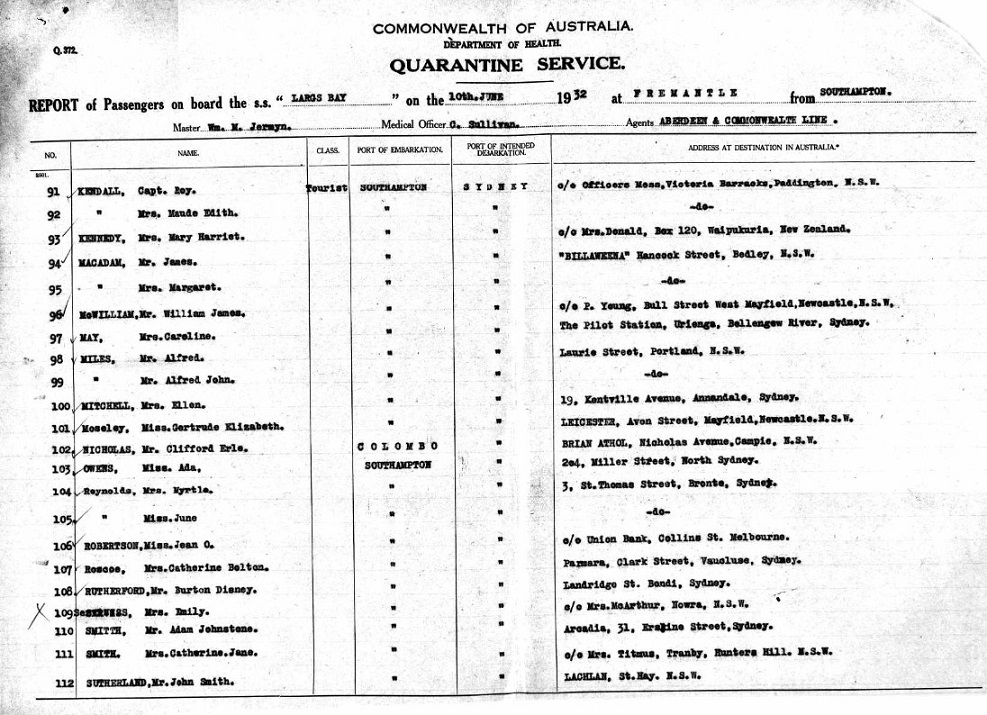
Passenger List: S.S. Largs Bay from Southampton to Fremantle, Australia 10th June 1932.
Burton made a last trip back to England and departed Southampton, United Kingdom on the 11th May 1932 on board the "Largs Bay" bound for Australia and arrived in Fremantle, Western Australia on the on the 10th June. Burton gave his residential address as Landridge Street, Bondi via Sydney, New South Wales.
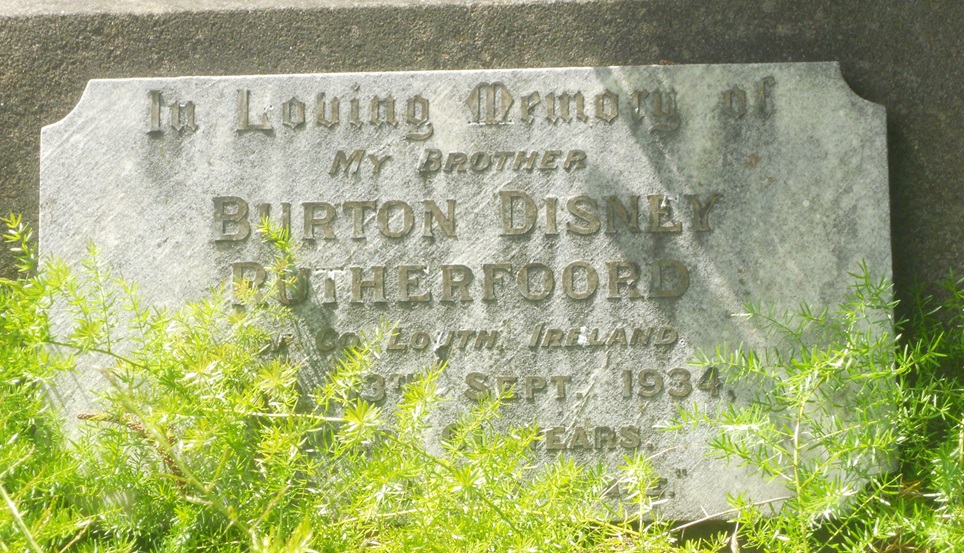
Burton was buried on the 15th September 1934 at the Rookwood Cemetery, New South Wales, Australia, Anglican Section 14, Grave 911.
IRINGA CEMETERY, South Africa.
At the outbreak of the First World War Tanzania was the core of German East Africa. From the invasion of April 1915, Commonwealth forces fought a protracted and difficult campaign against a relatively small but highly skilled German force under the command of General von Lettow-Vorbeck. When the Germans finally surrendered on 23 November 1918, twelve days after the European armistice, their numbers had been reduced to 155 European and 1,168 African troops. Iringa was captured in September 1916 and an officers' hospital was posted in the town. Twelve burials were made in Iringa Cemetery from May 1916, to December 1917, and after the Armistice 135 graves were brought in from other burial grounds. Iringa Cemetery now contains 131 Commonwealth burials of the First World War and one from the Second World War. The Commission also cares for 16 German war burials within the cemetery.
RUTHERFOORD, Lieutenant, ARTHUR HENRY, 1st. Rhodesia Native Regiment. 23rd July 1917. Age 27. Son of Ellen Rutherfoord, of Alma House, Collingham Bridge, Leeds, England, and the late John Brownley Rutherfoord. II. A. 4.
Military Records
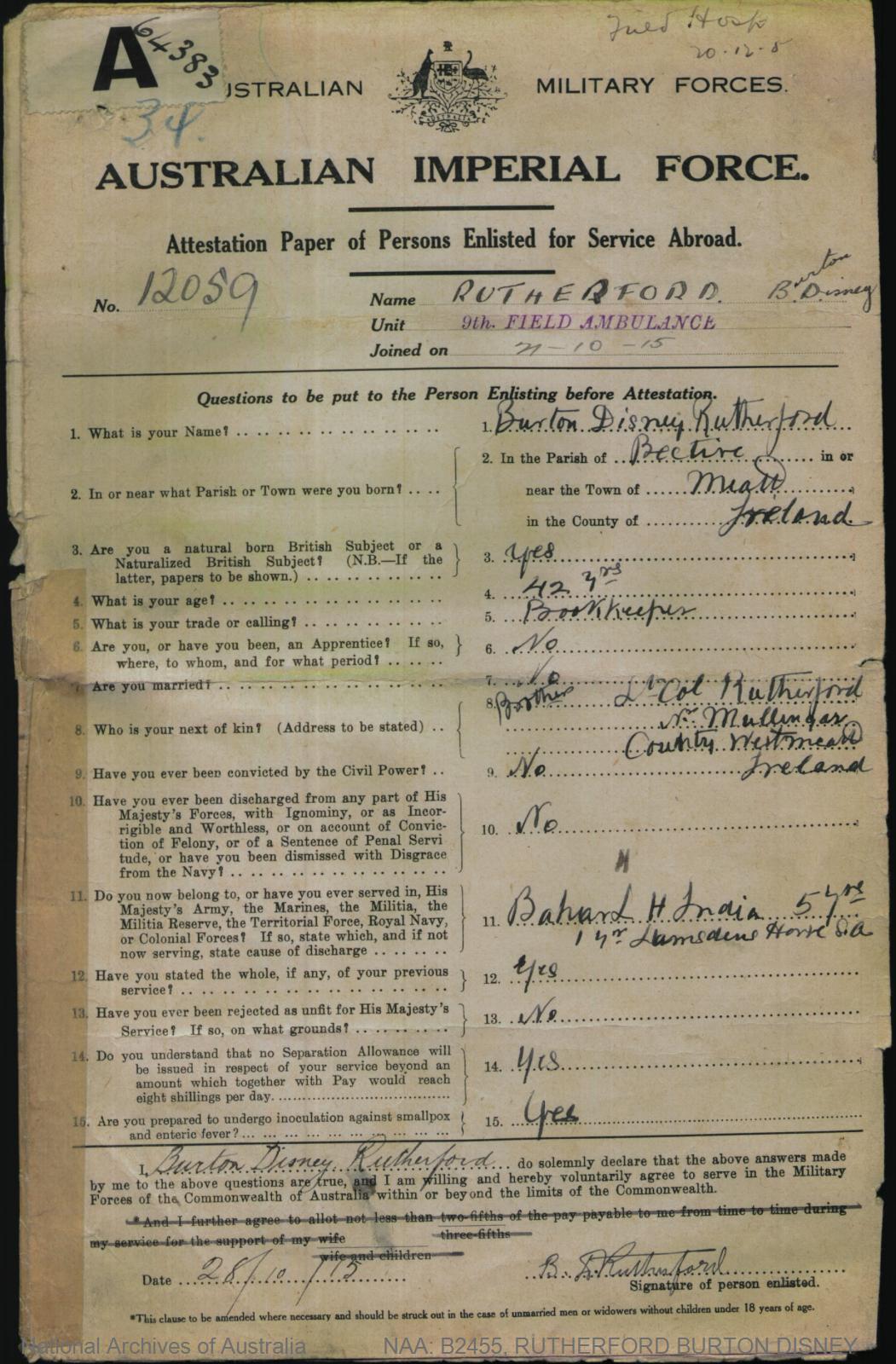

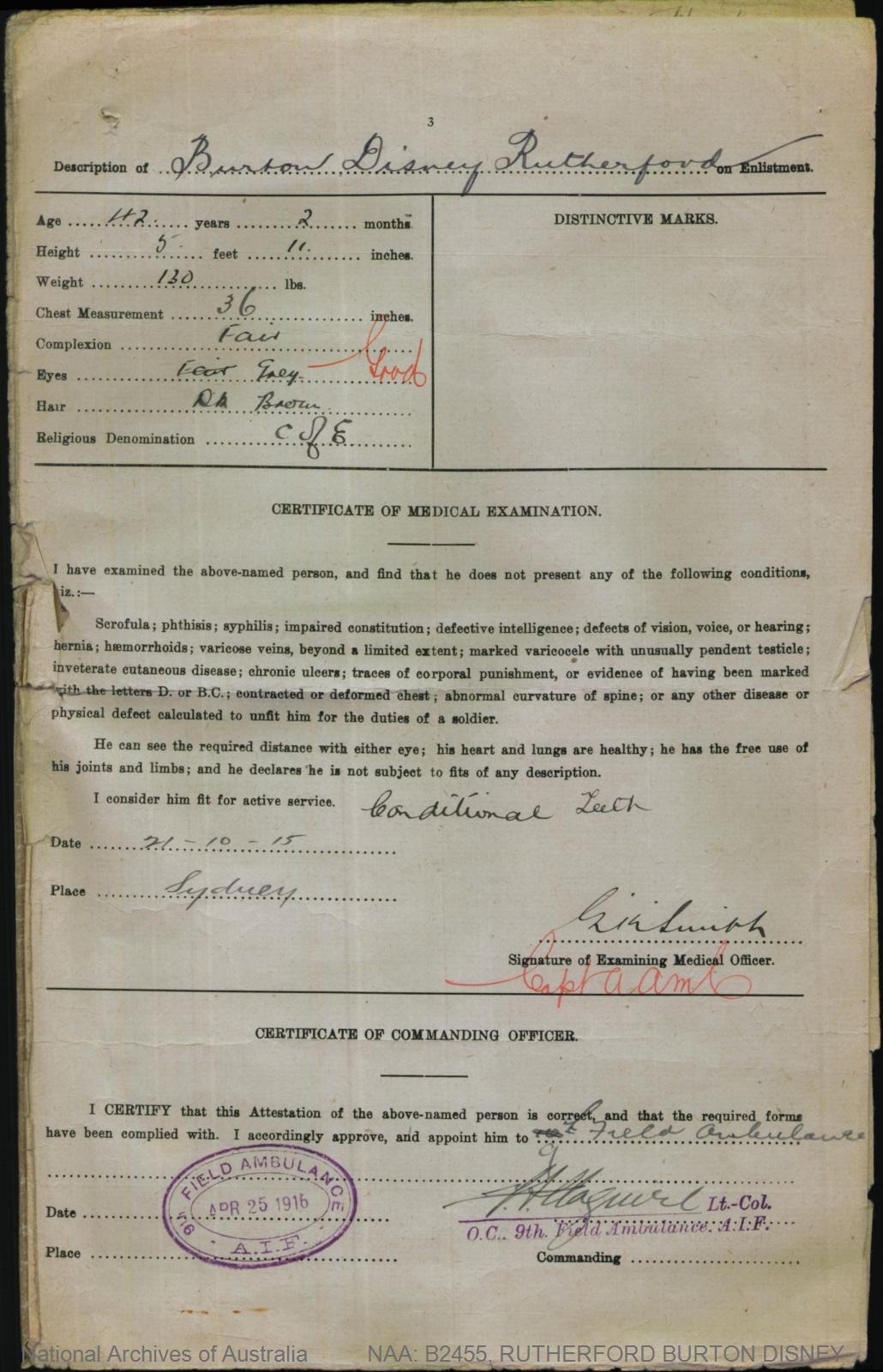
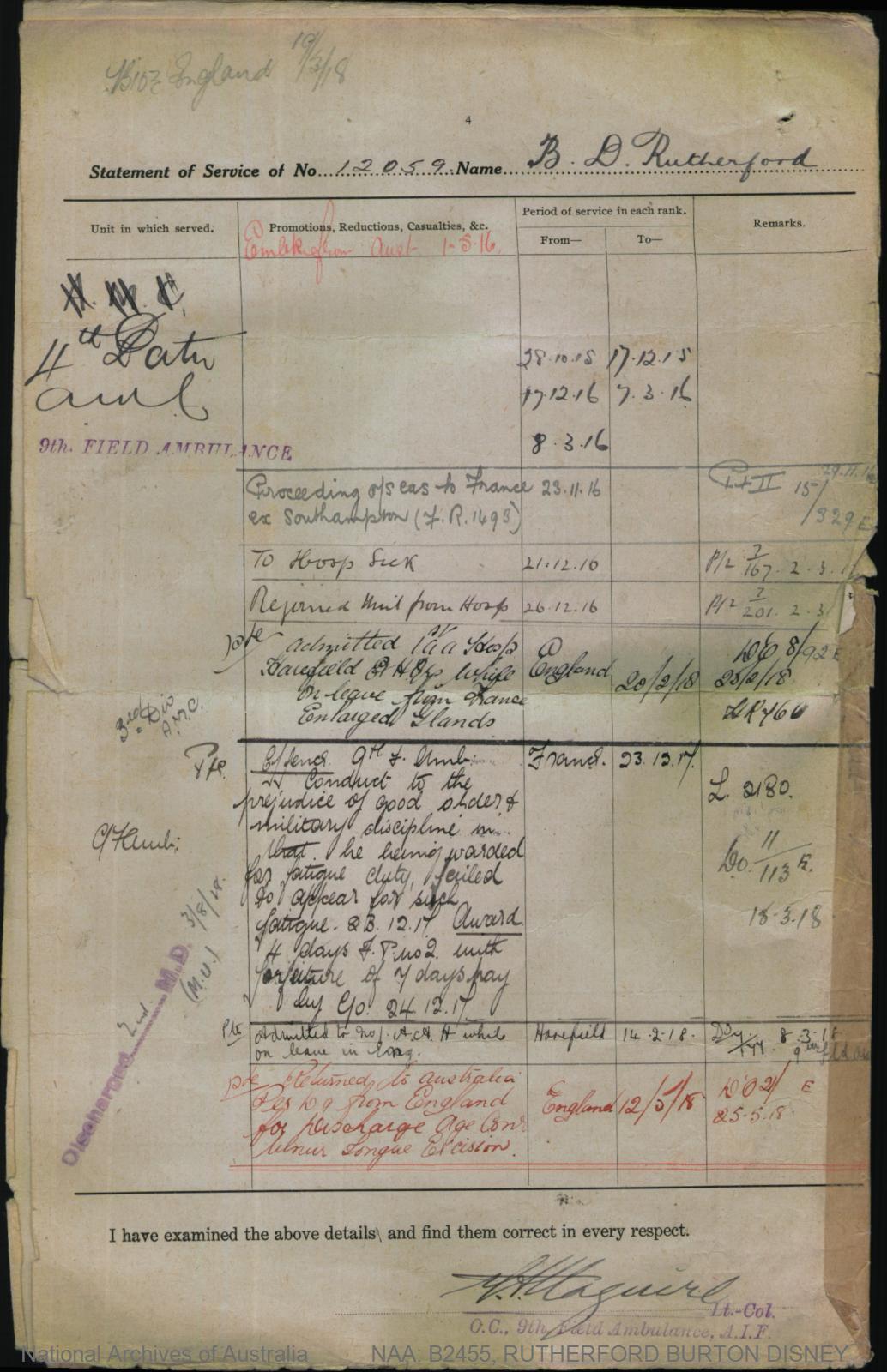
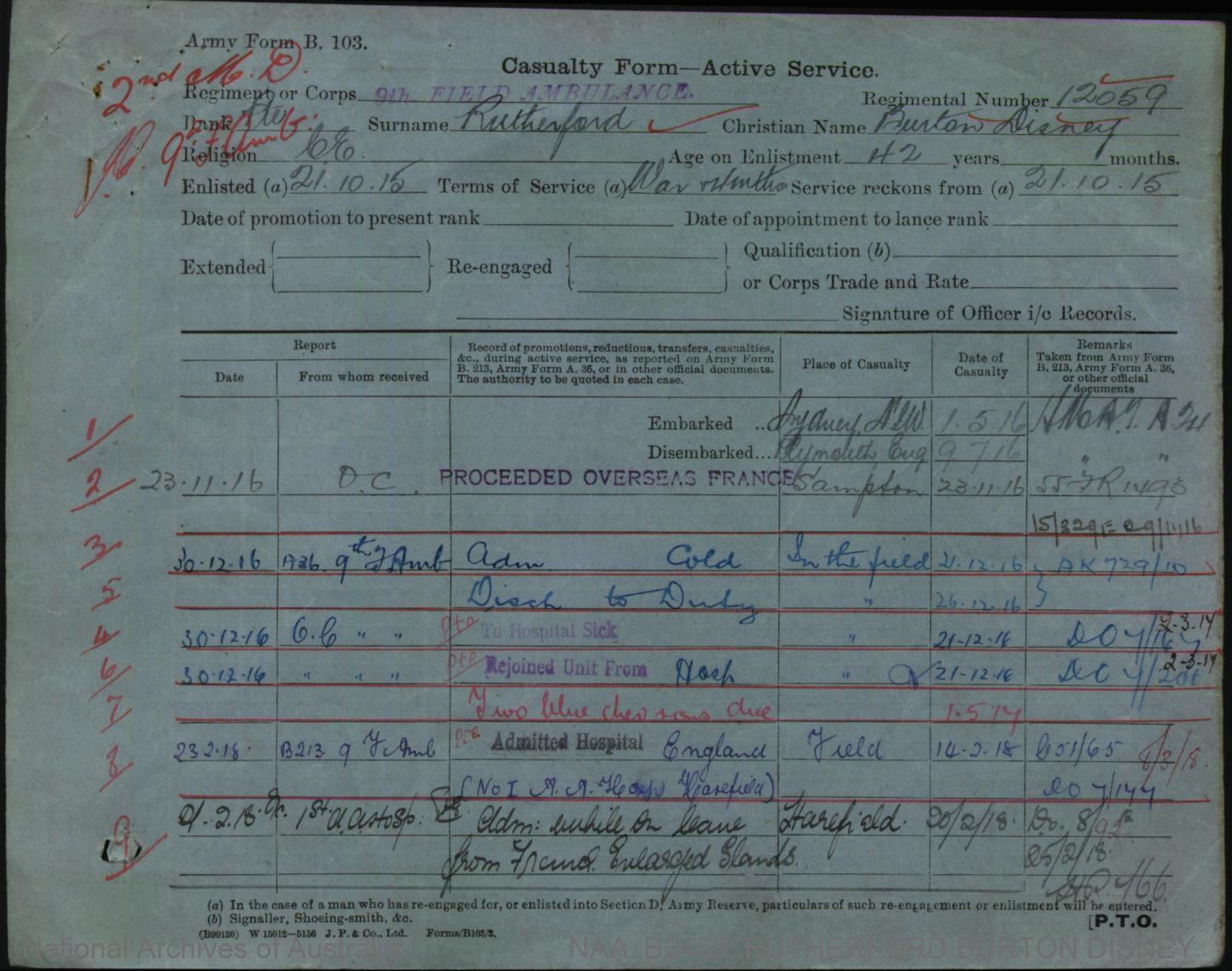
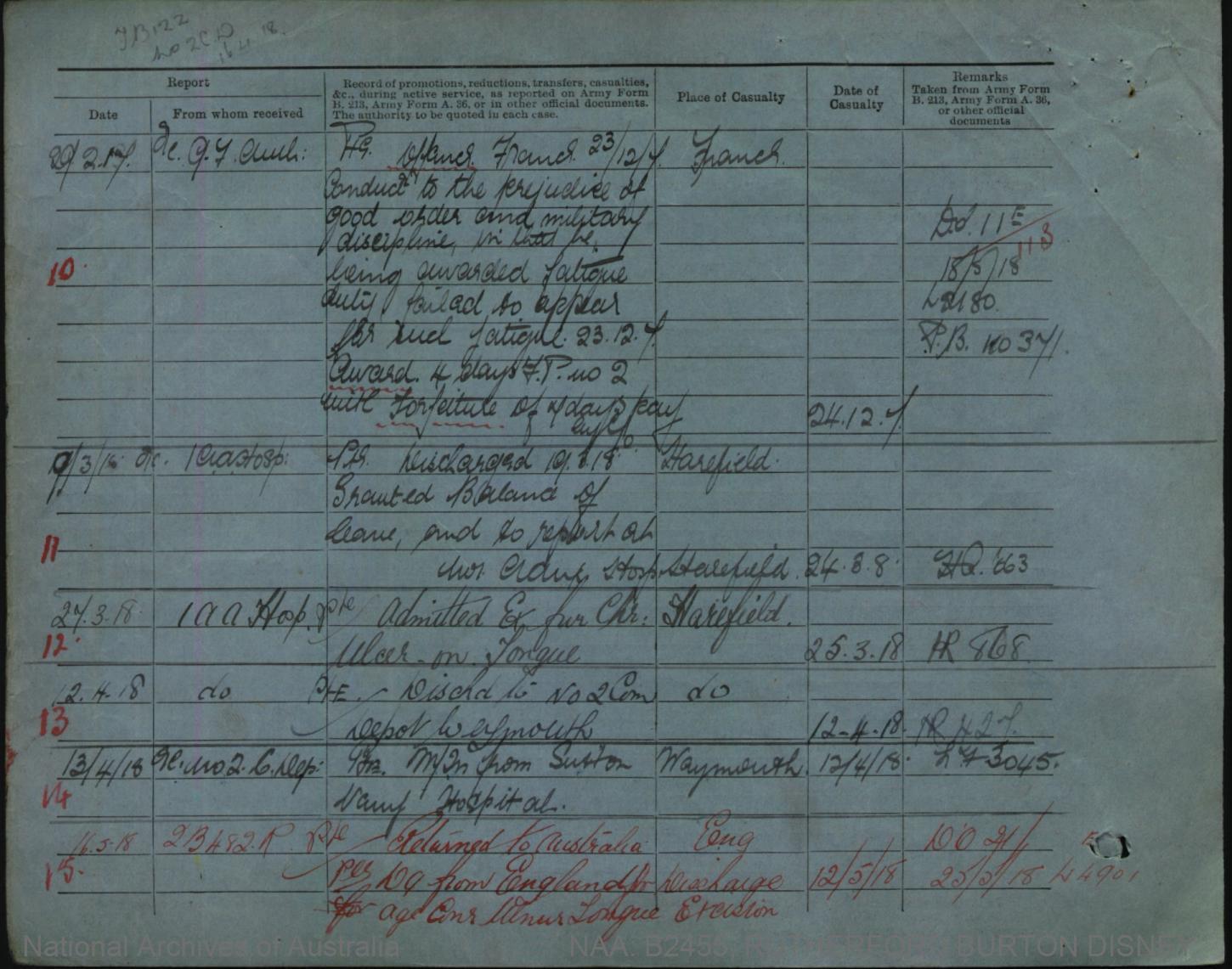
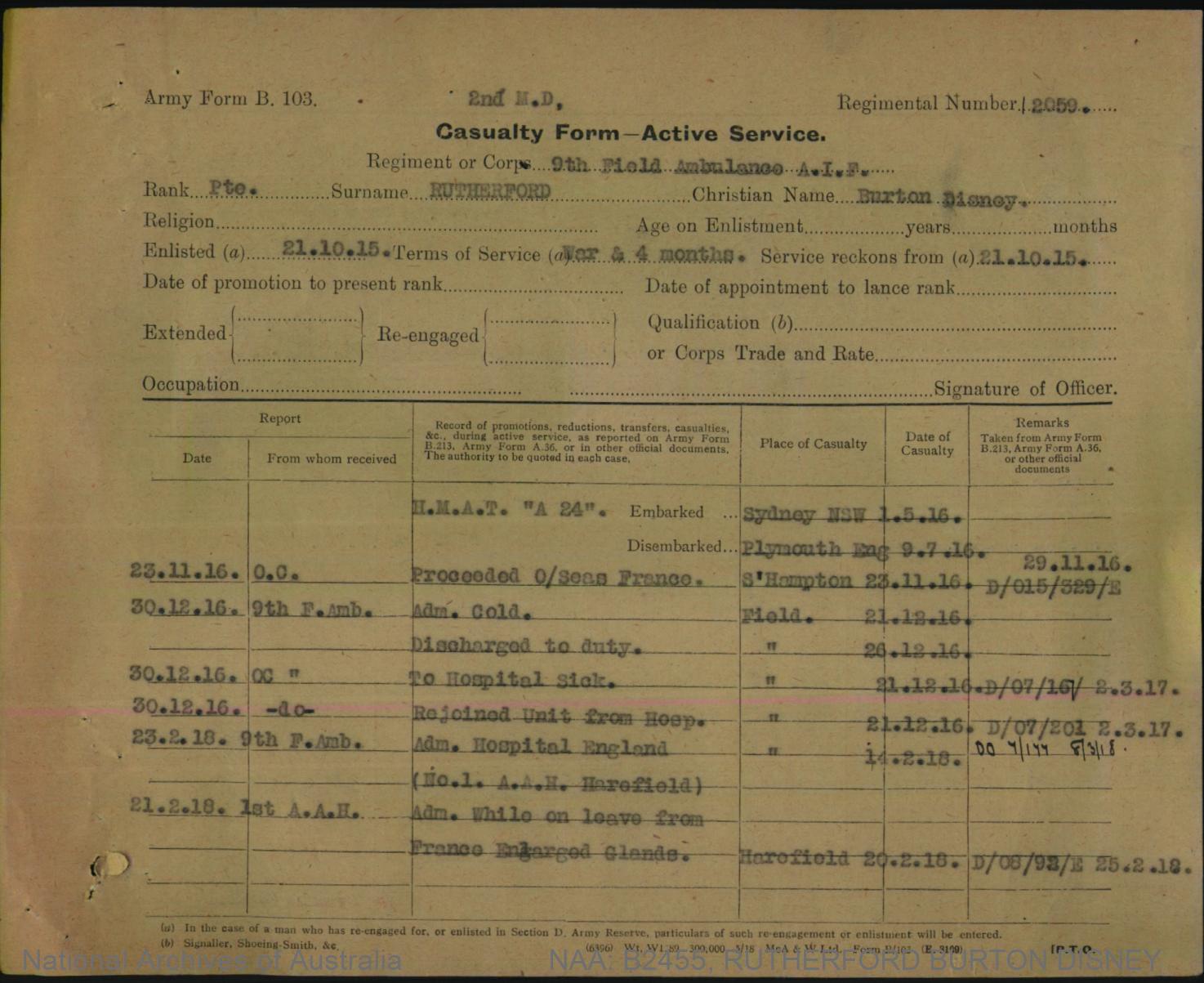
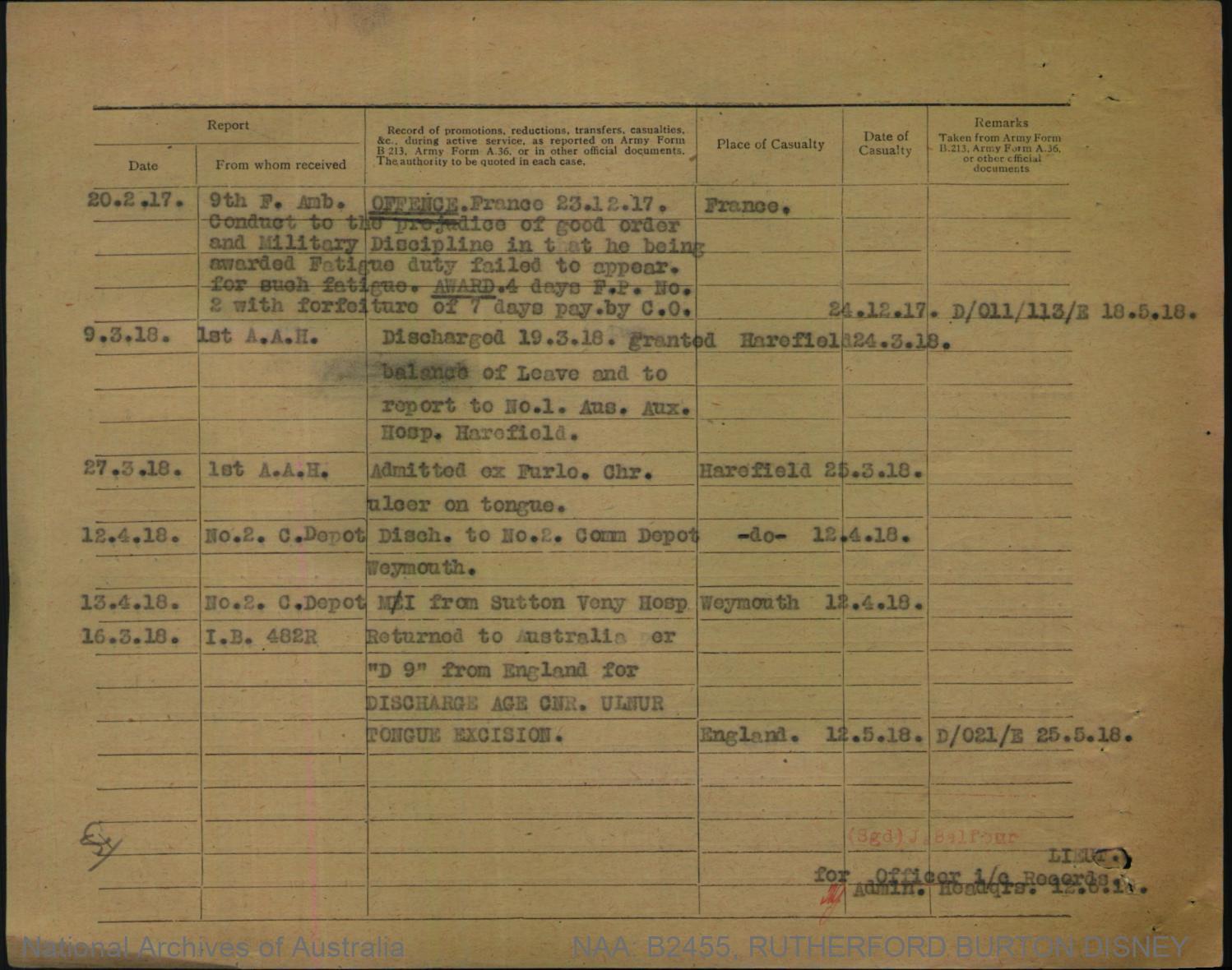
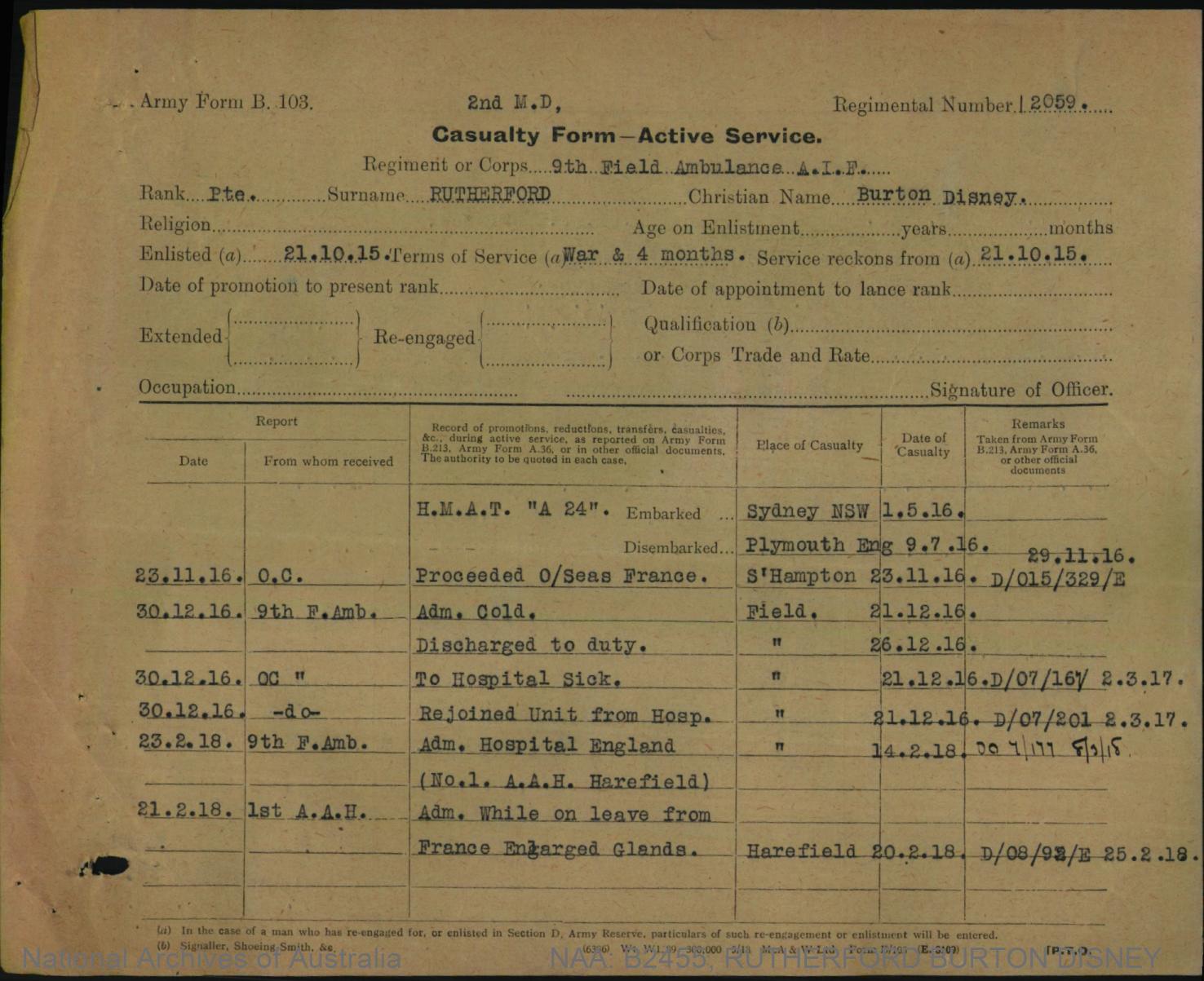

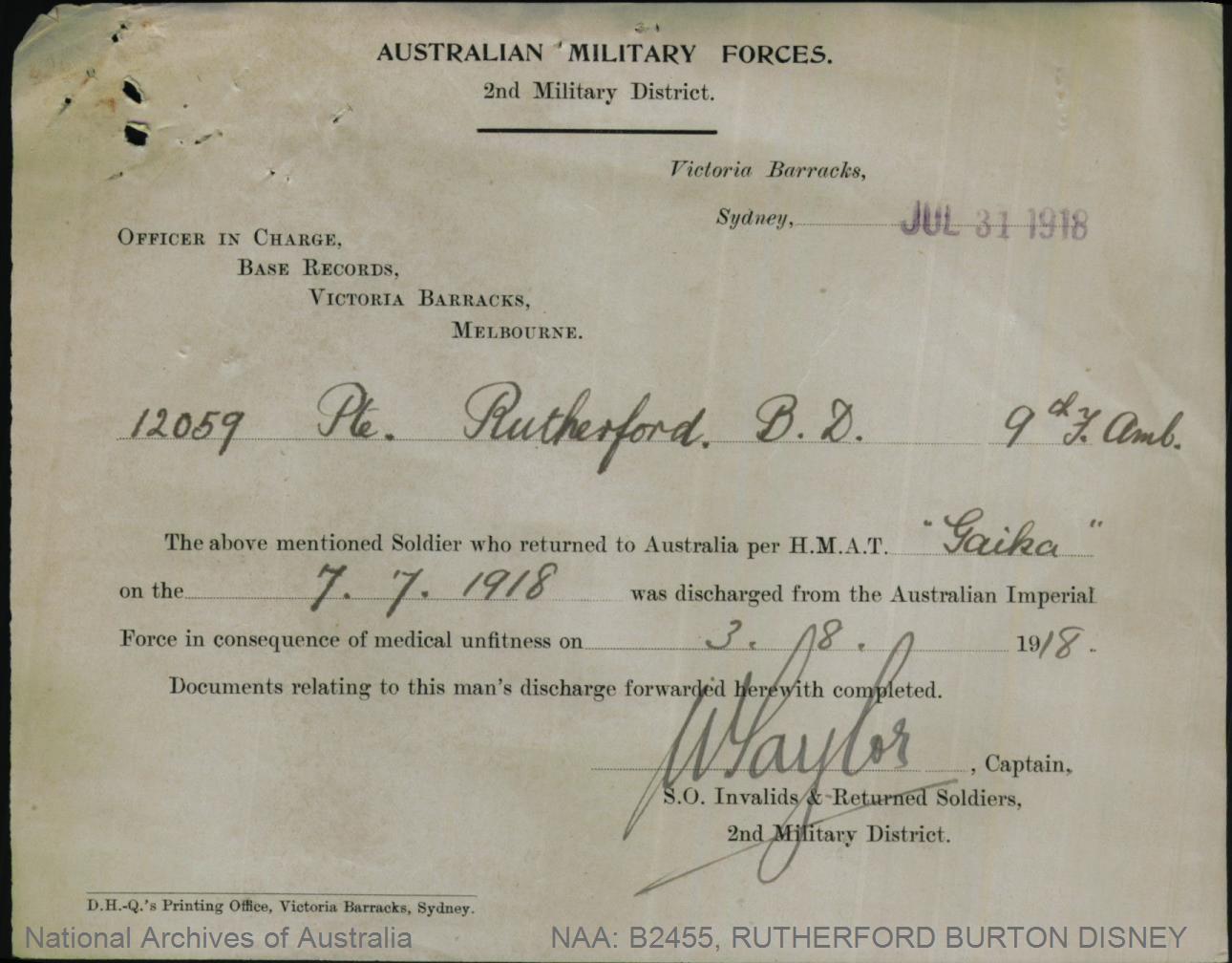
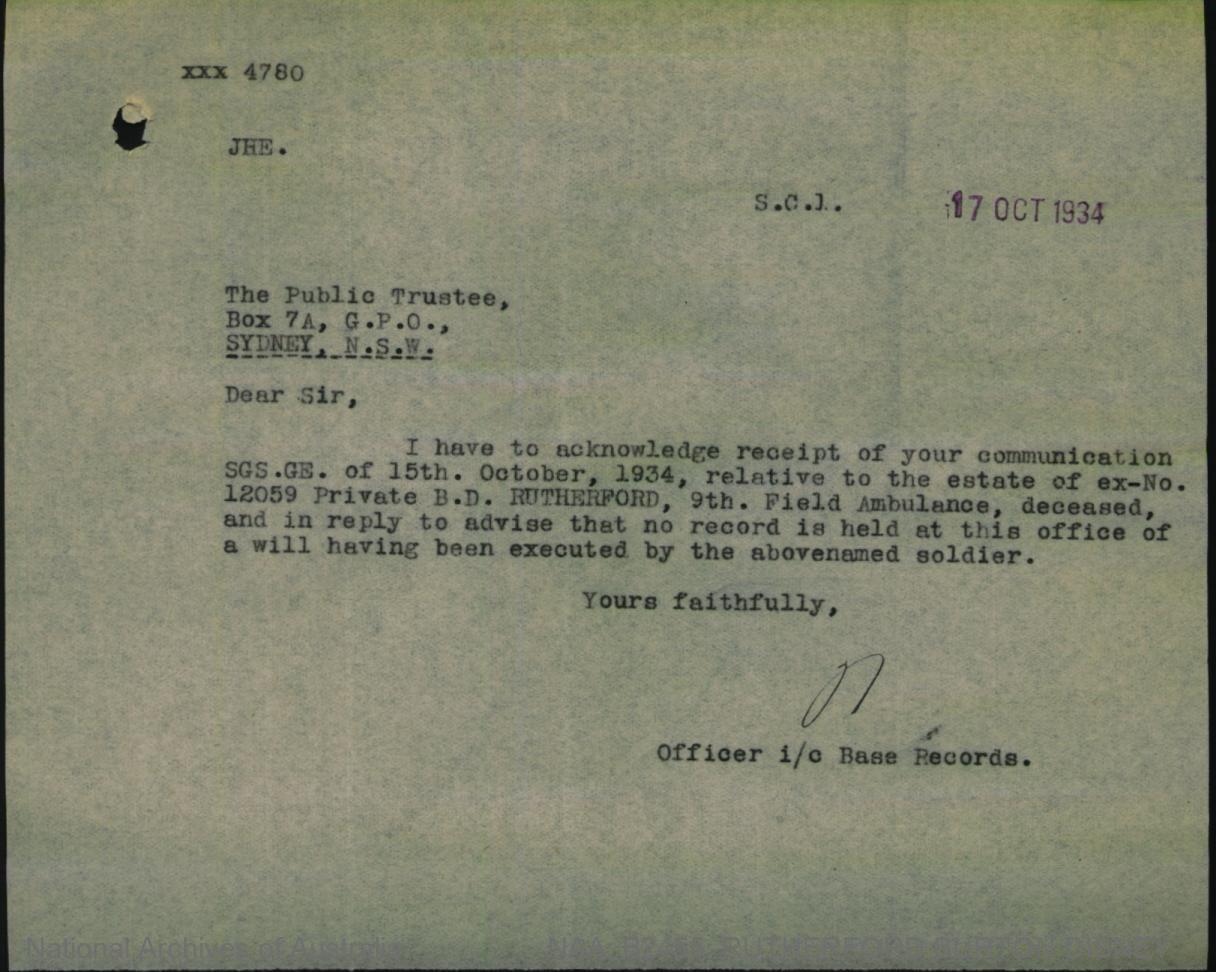
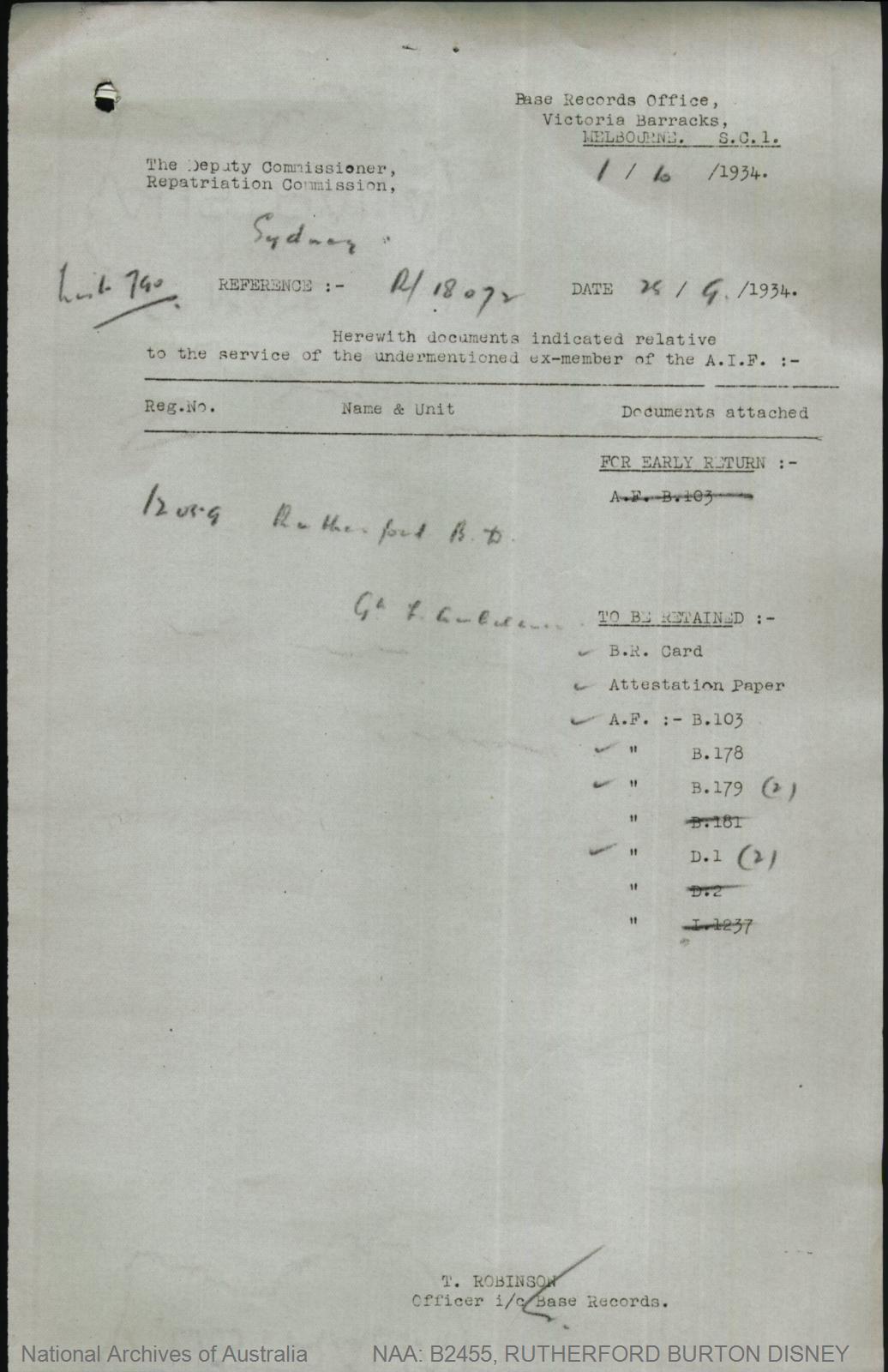
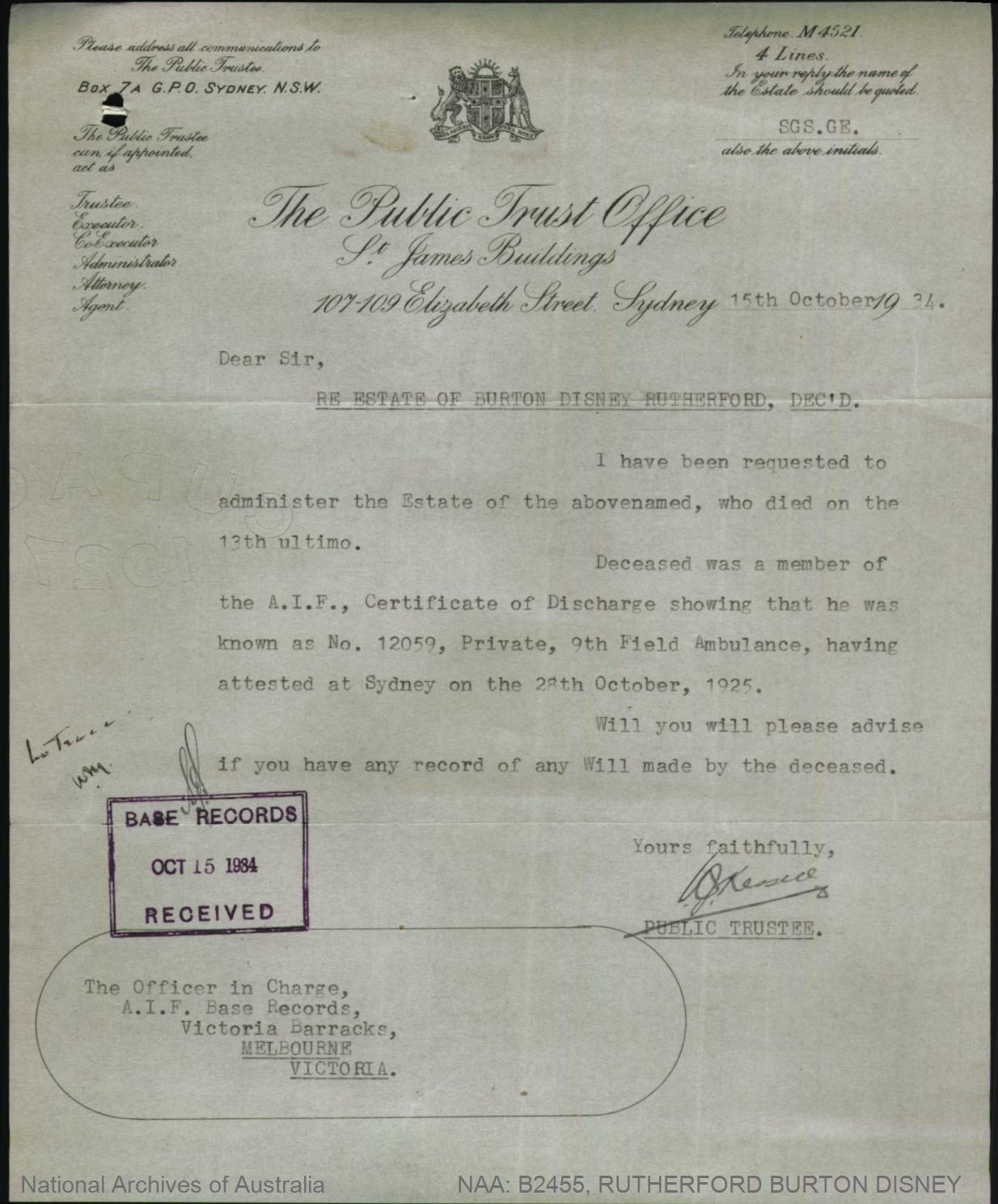
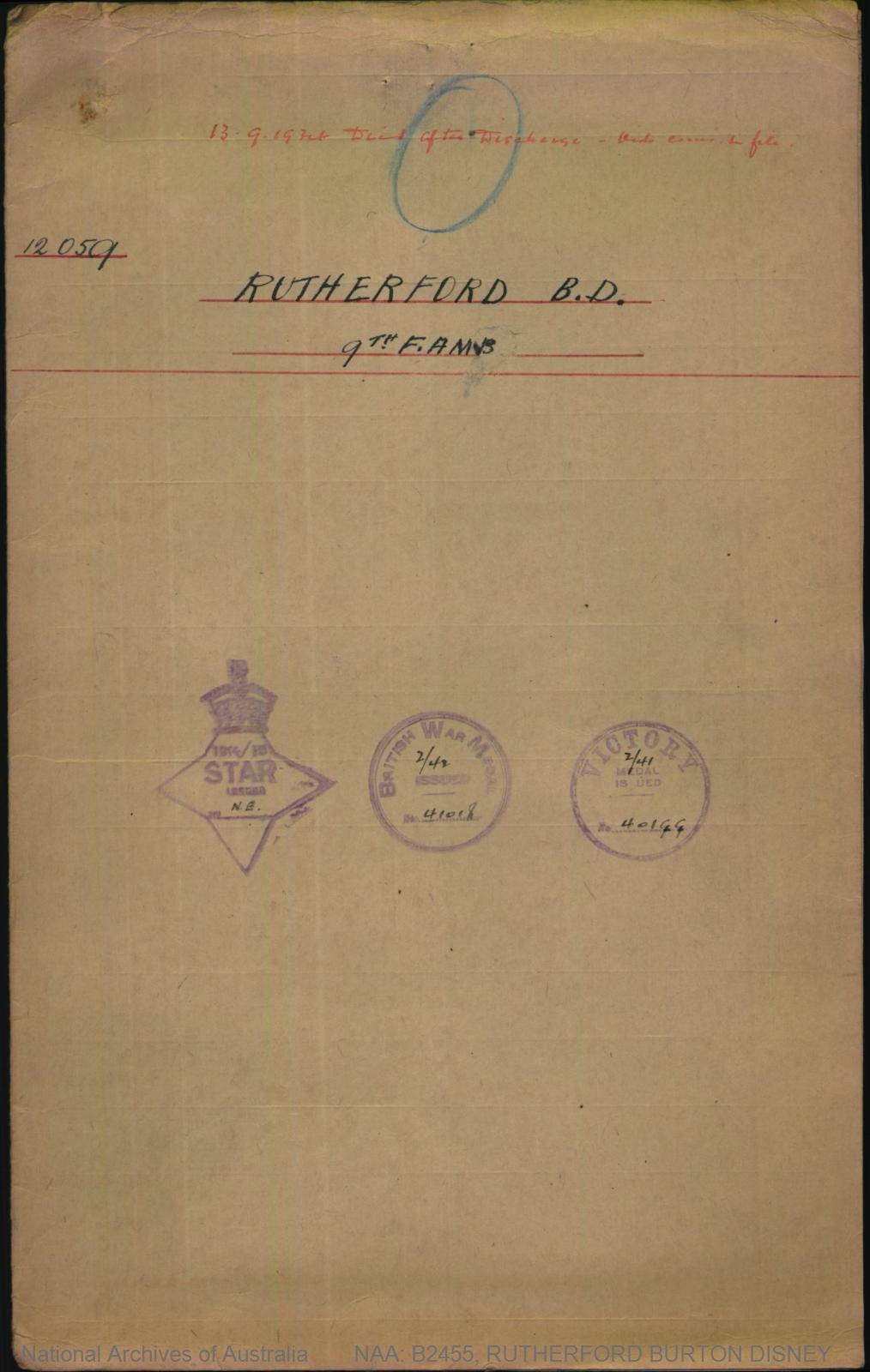
© Commonwealth of Australia (National Archives of Australia)
Under Construction: 10/04/2024-16/04/2024.
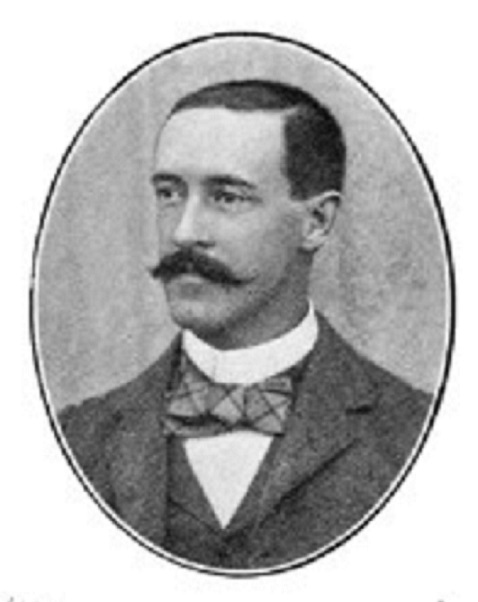
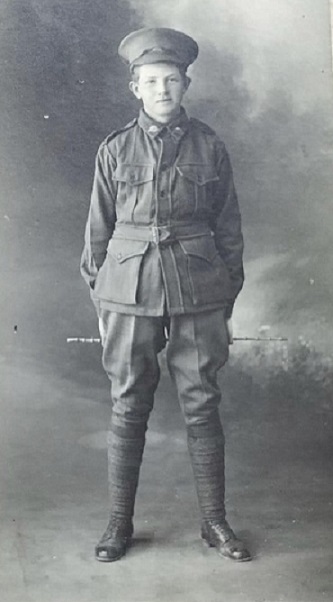
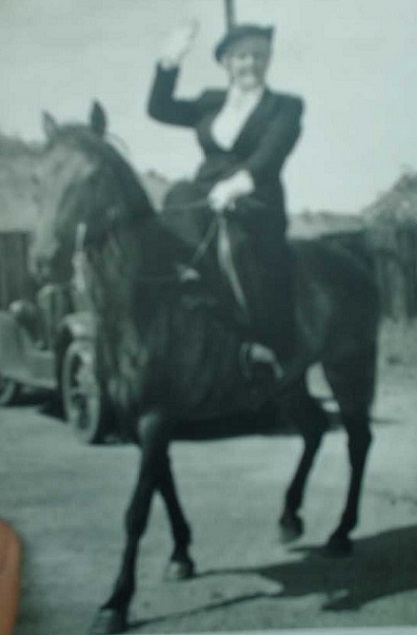
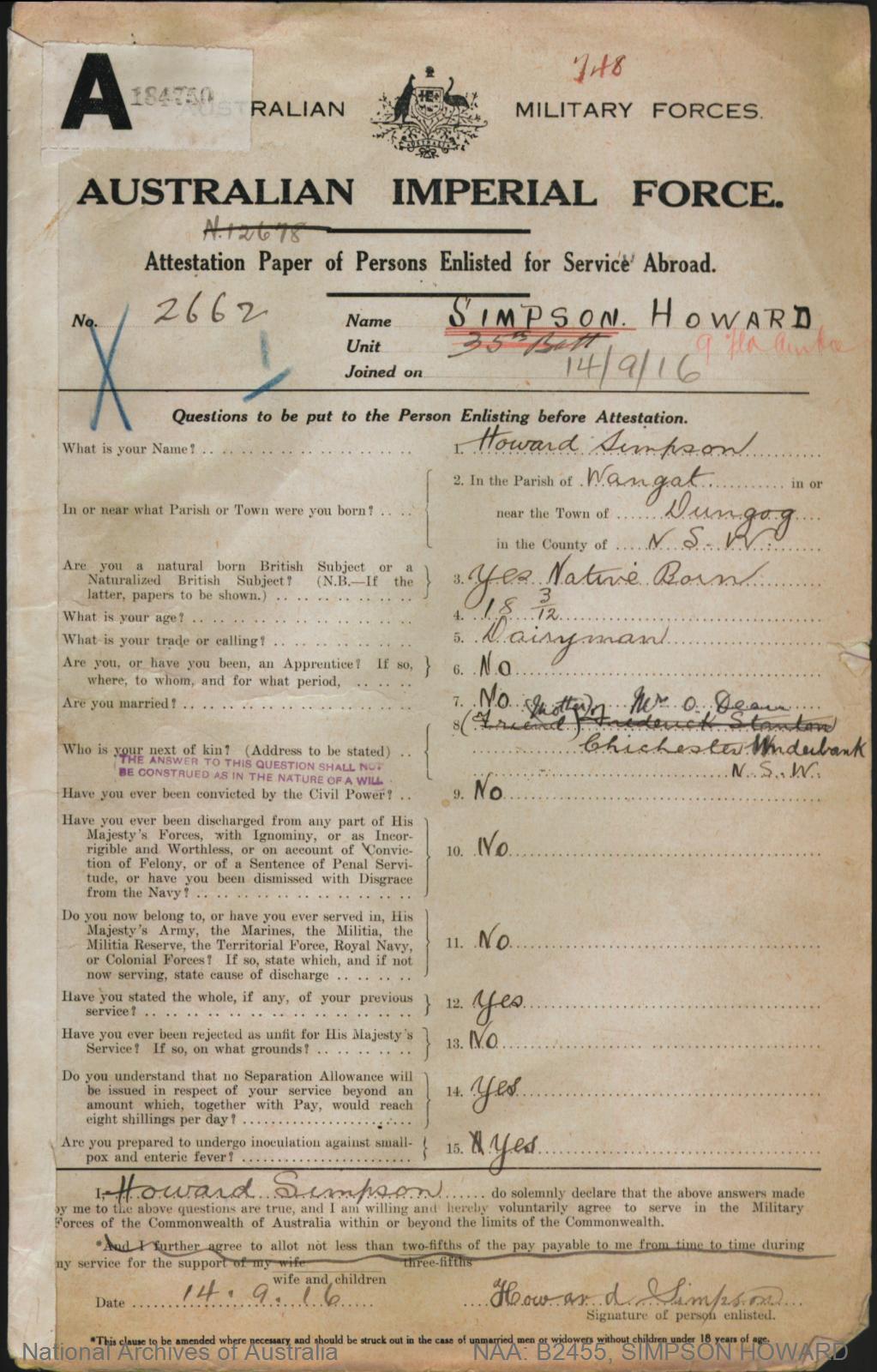

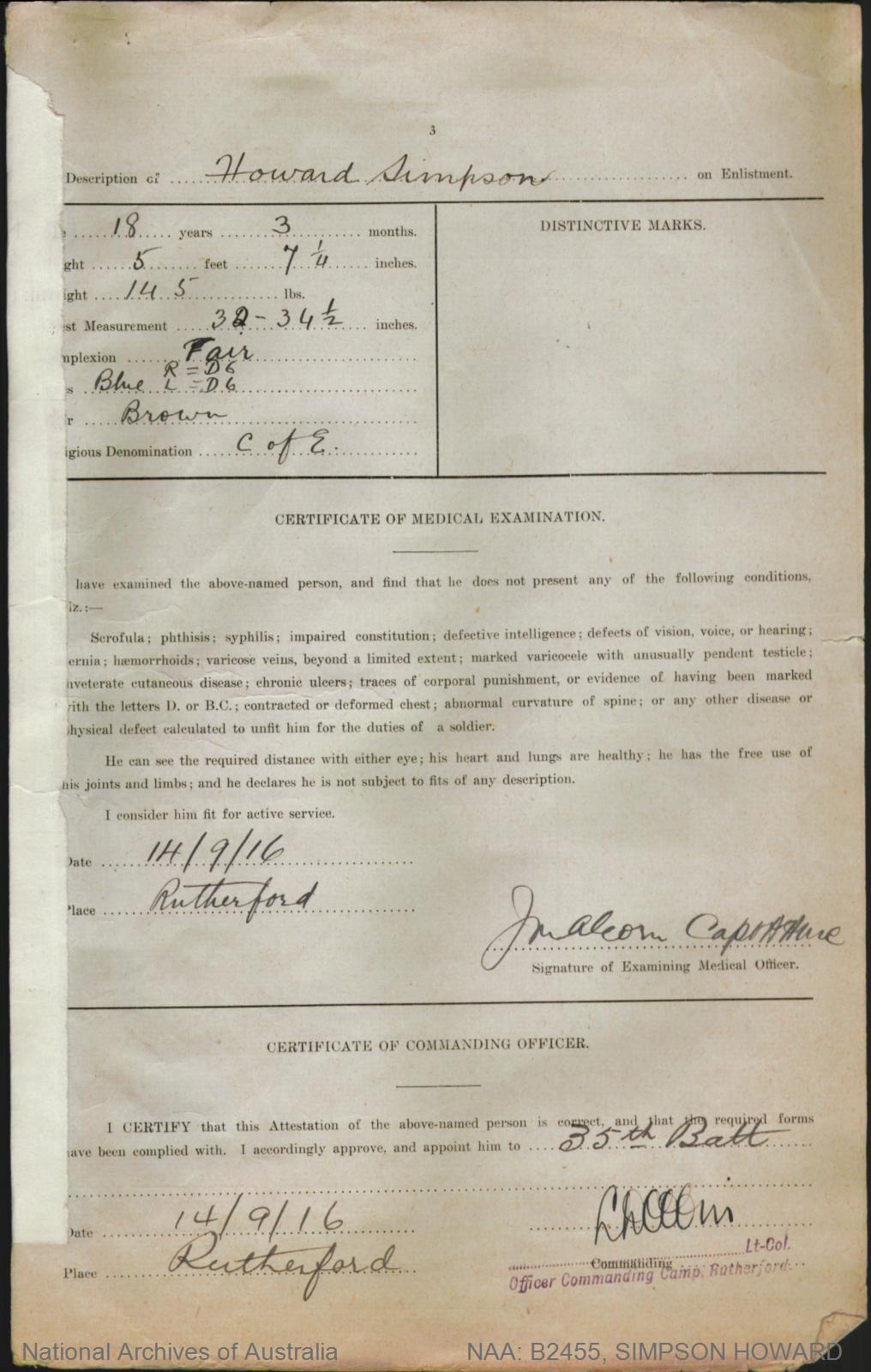
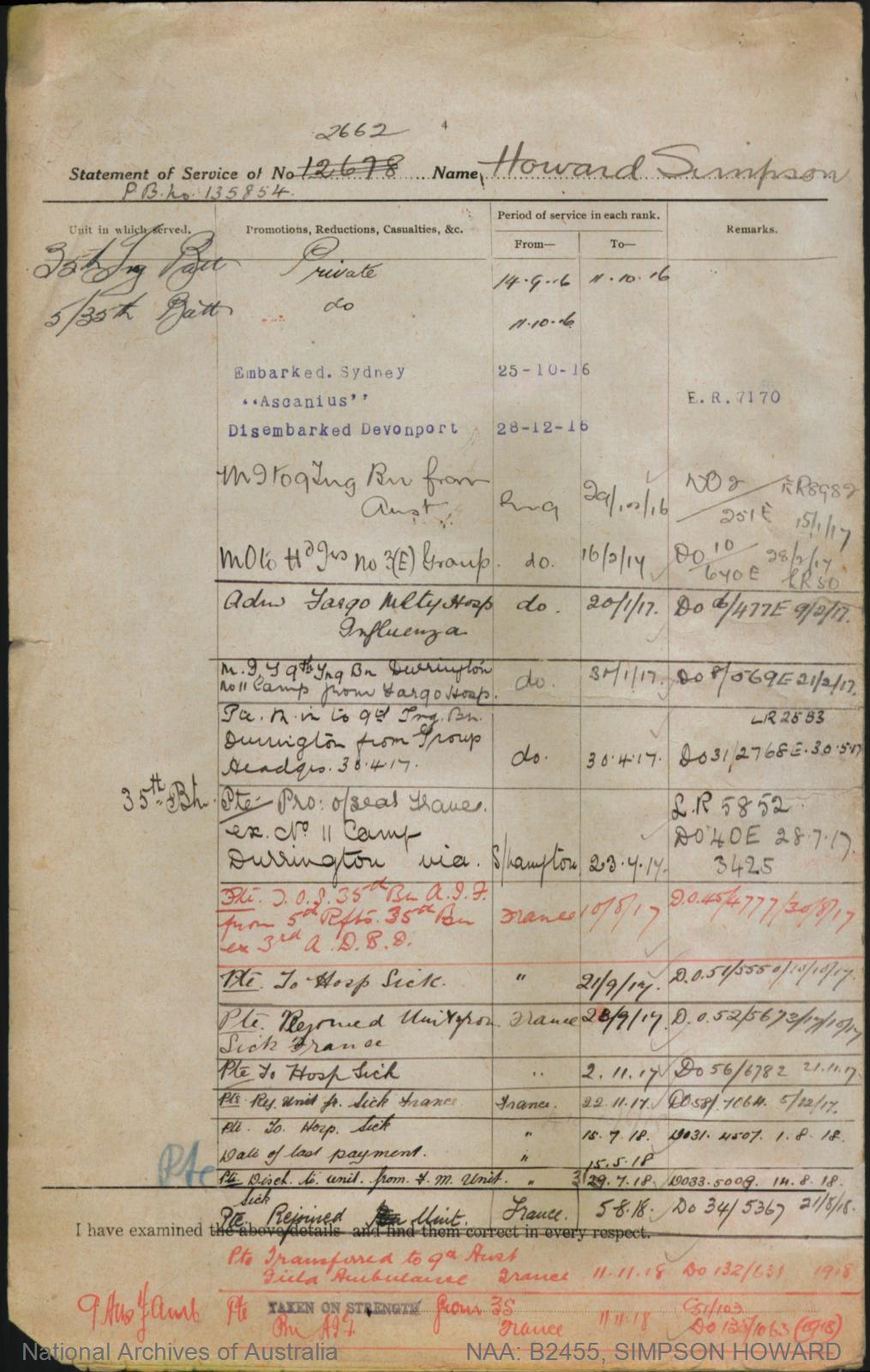
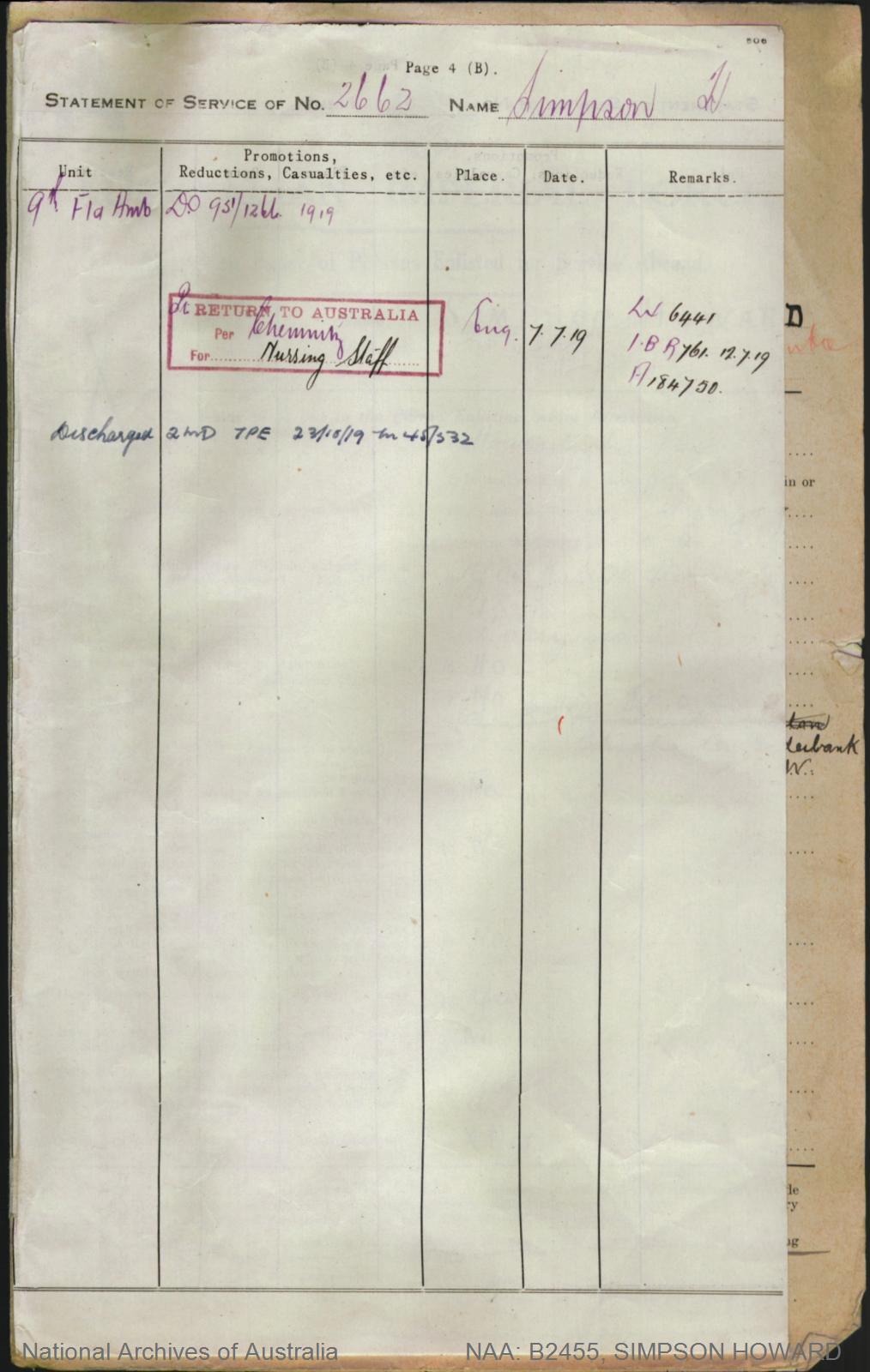
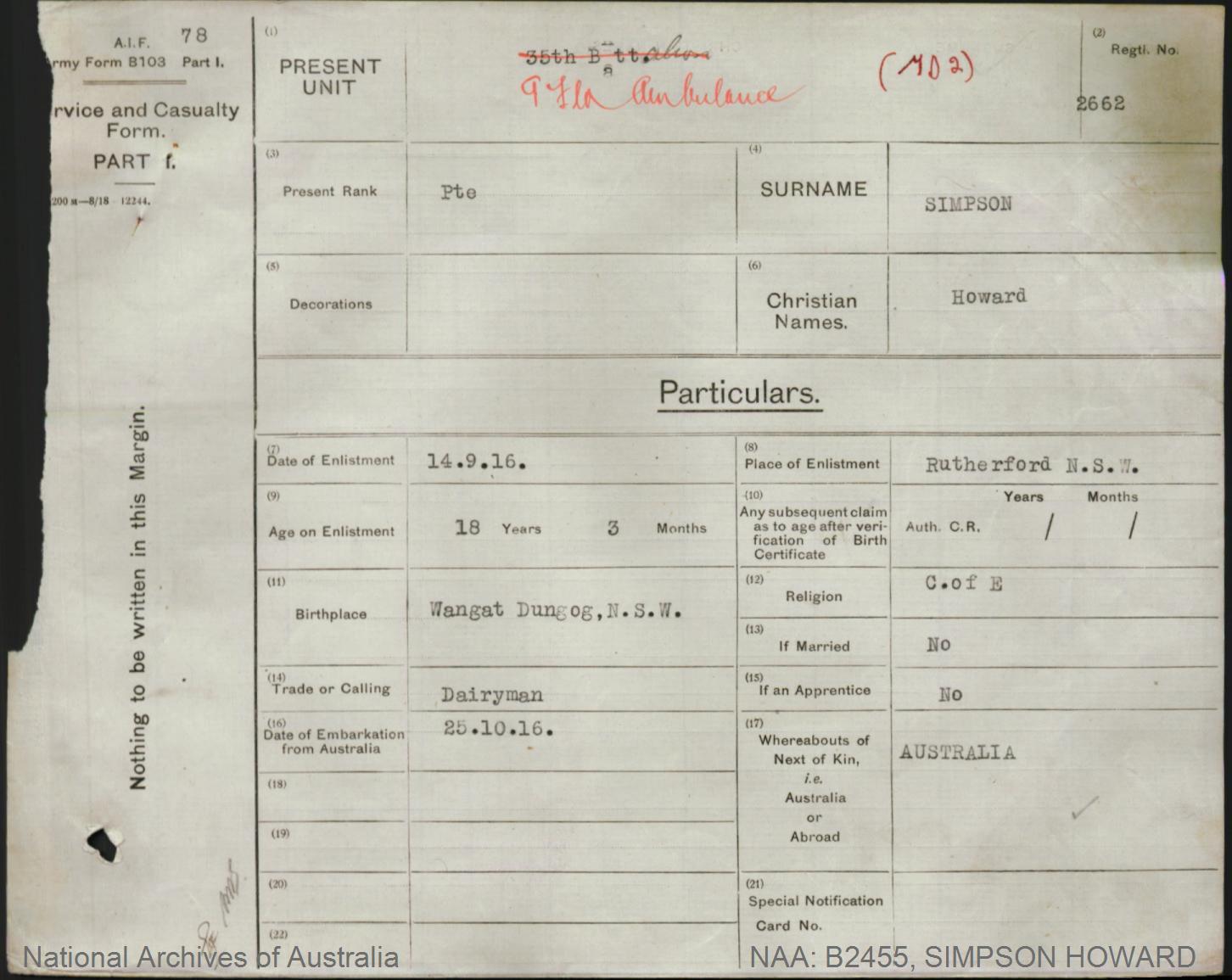

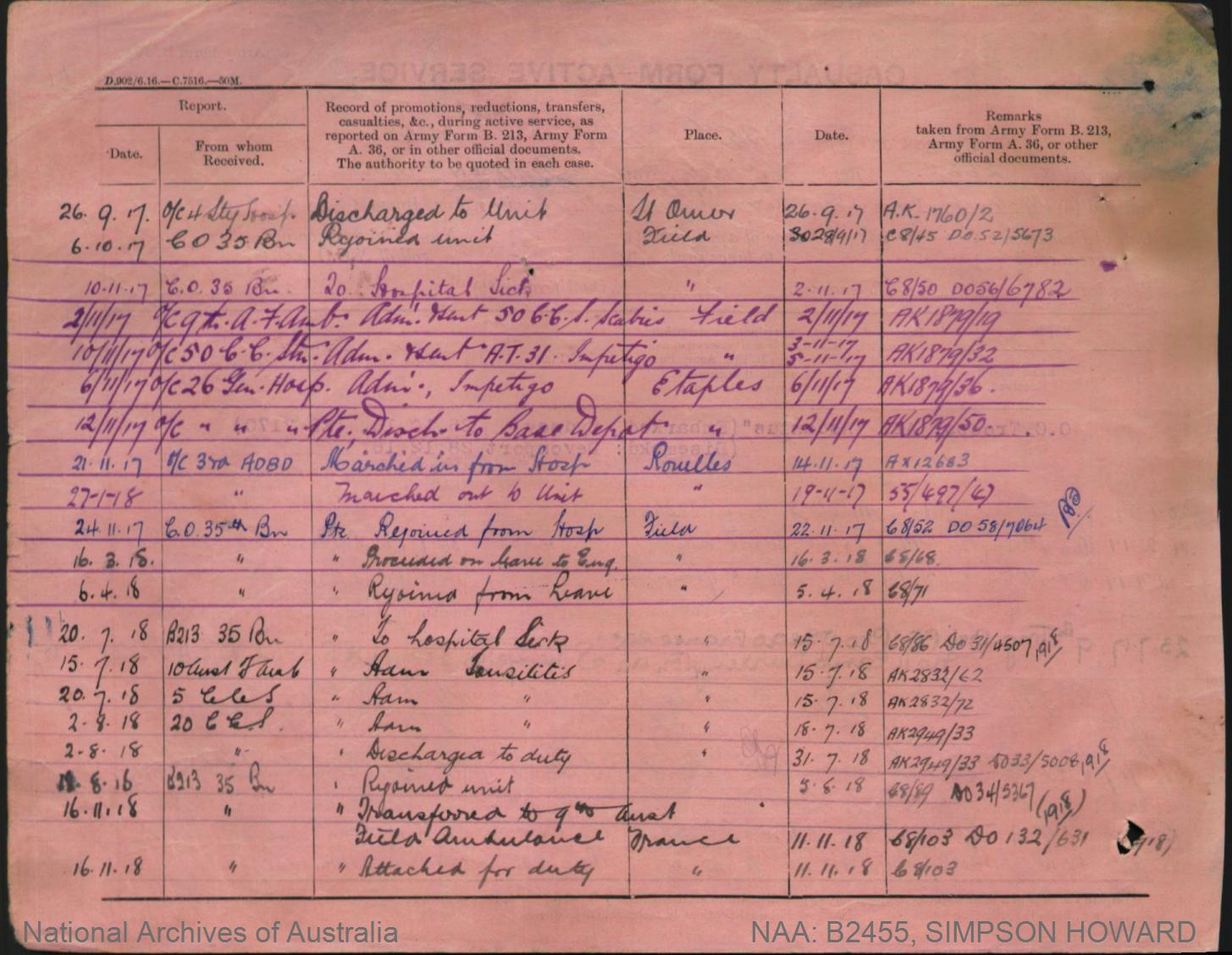
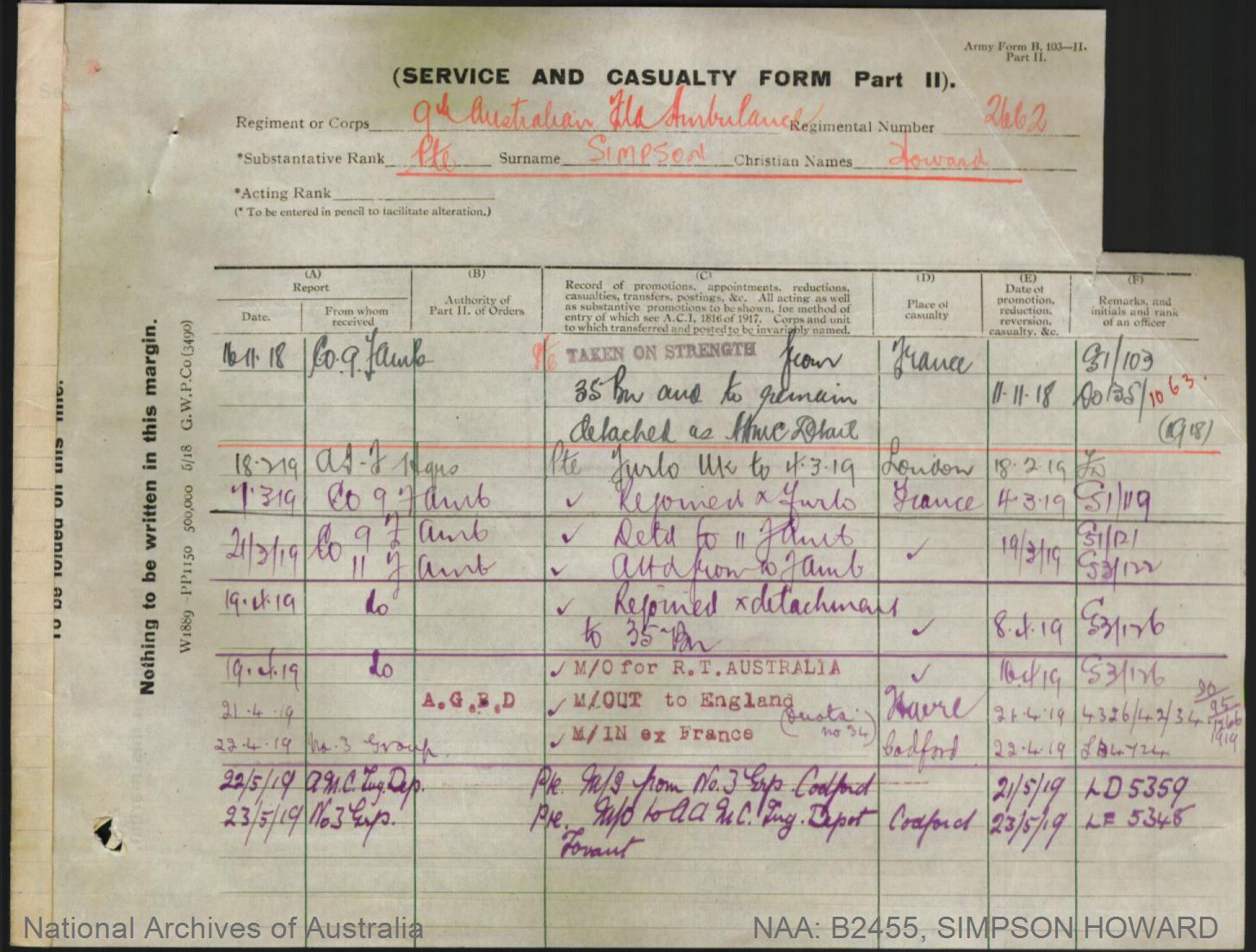
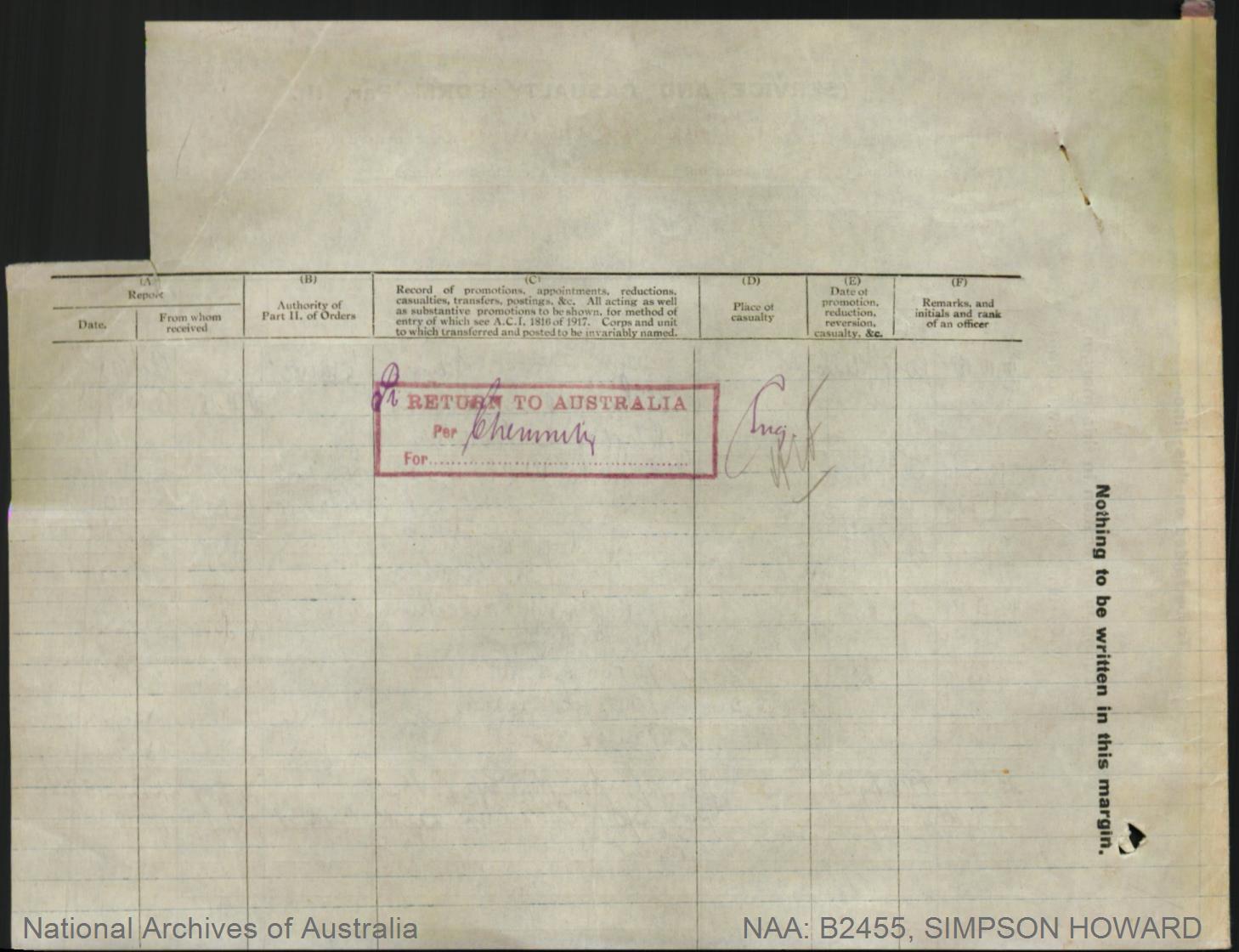

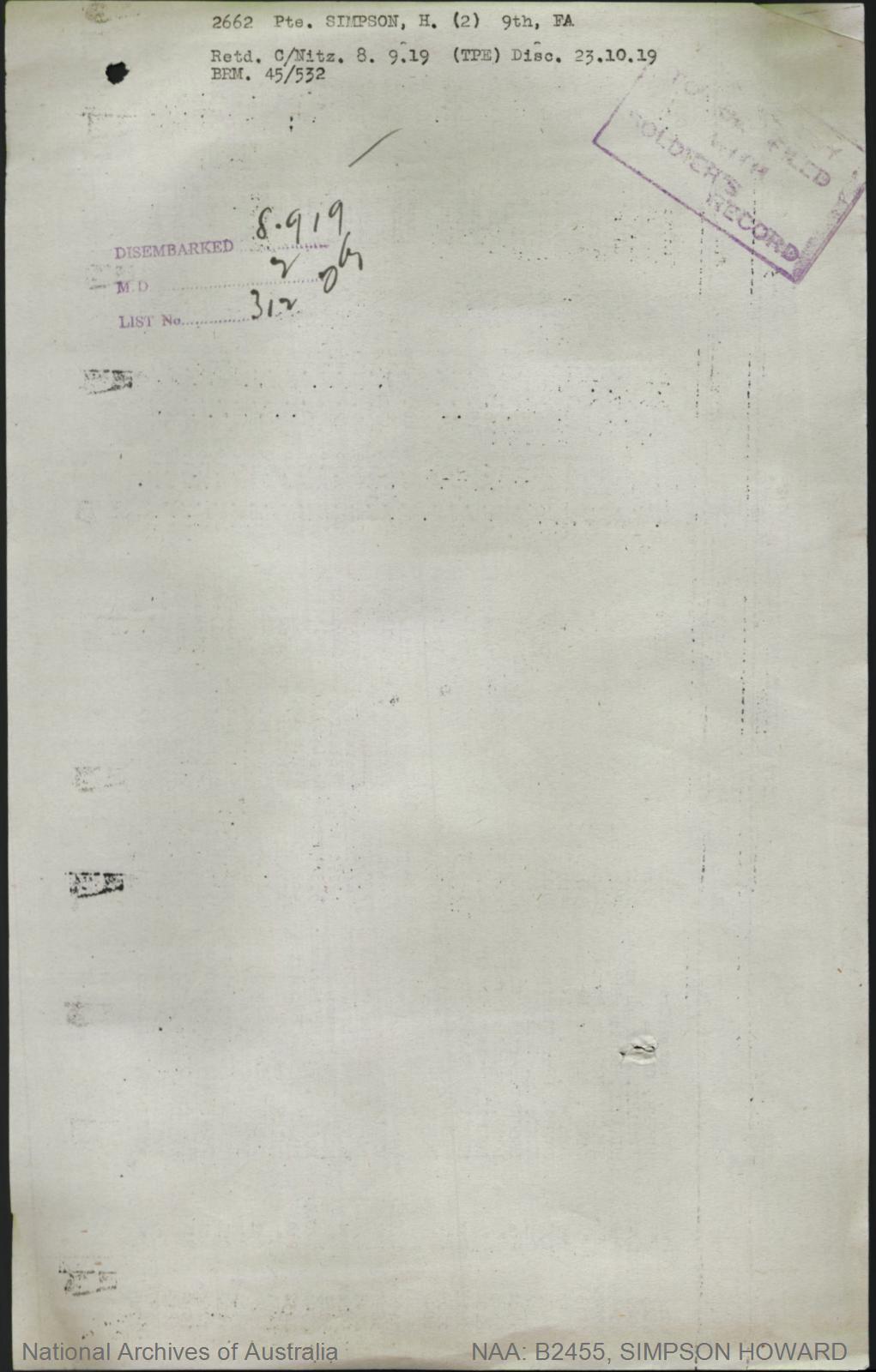
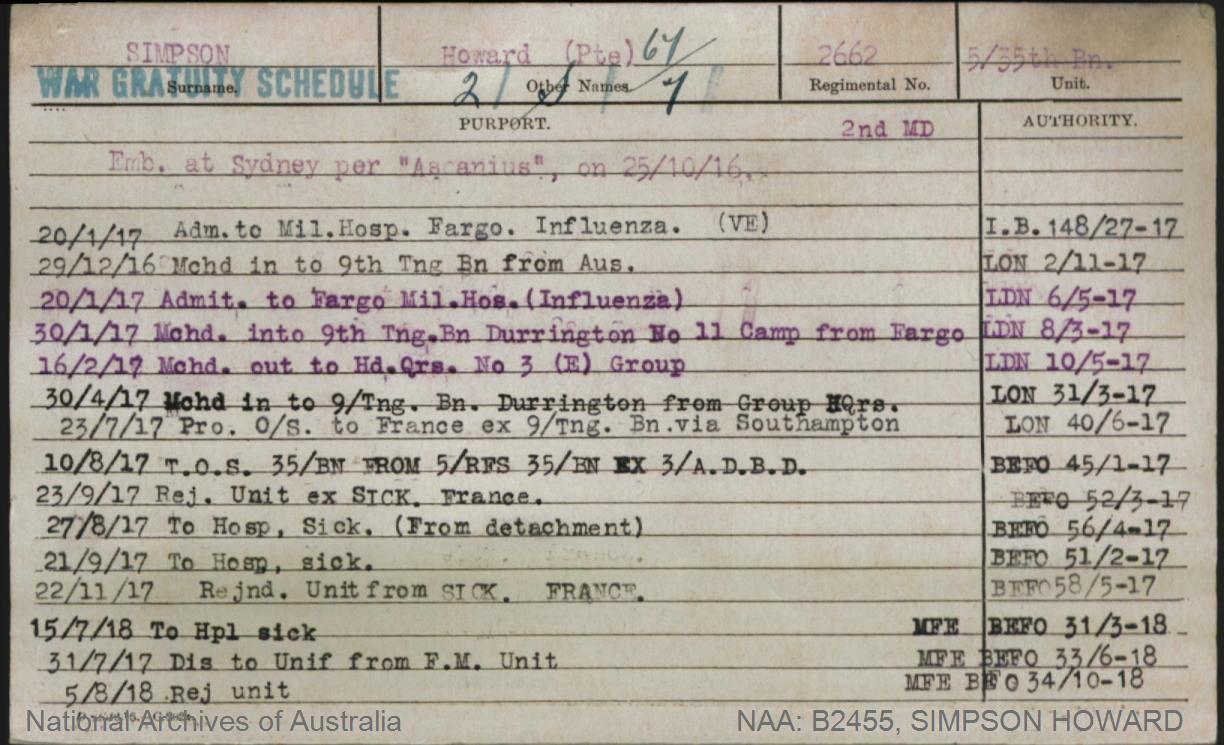
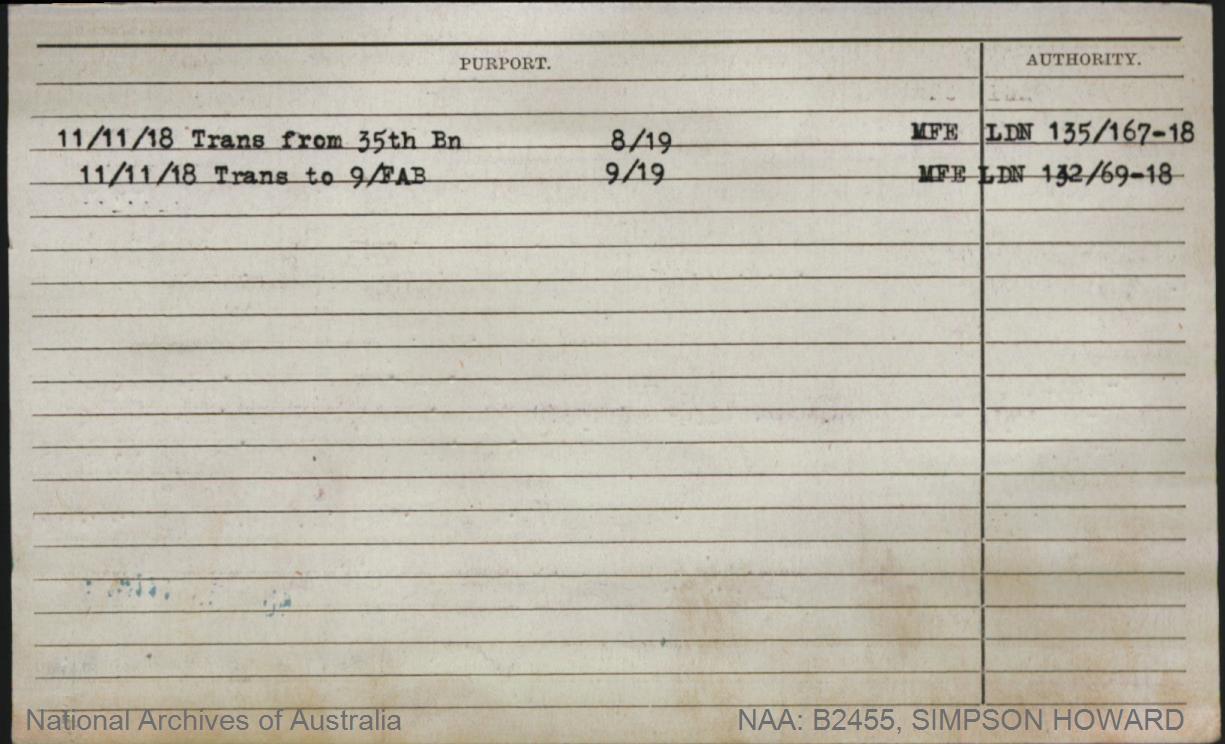
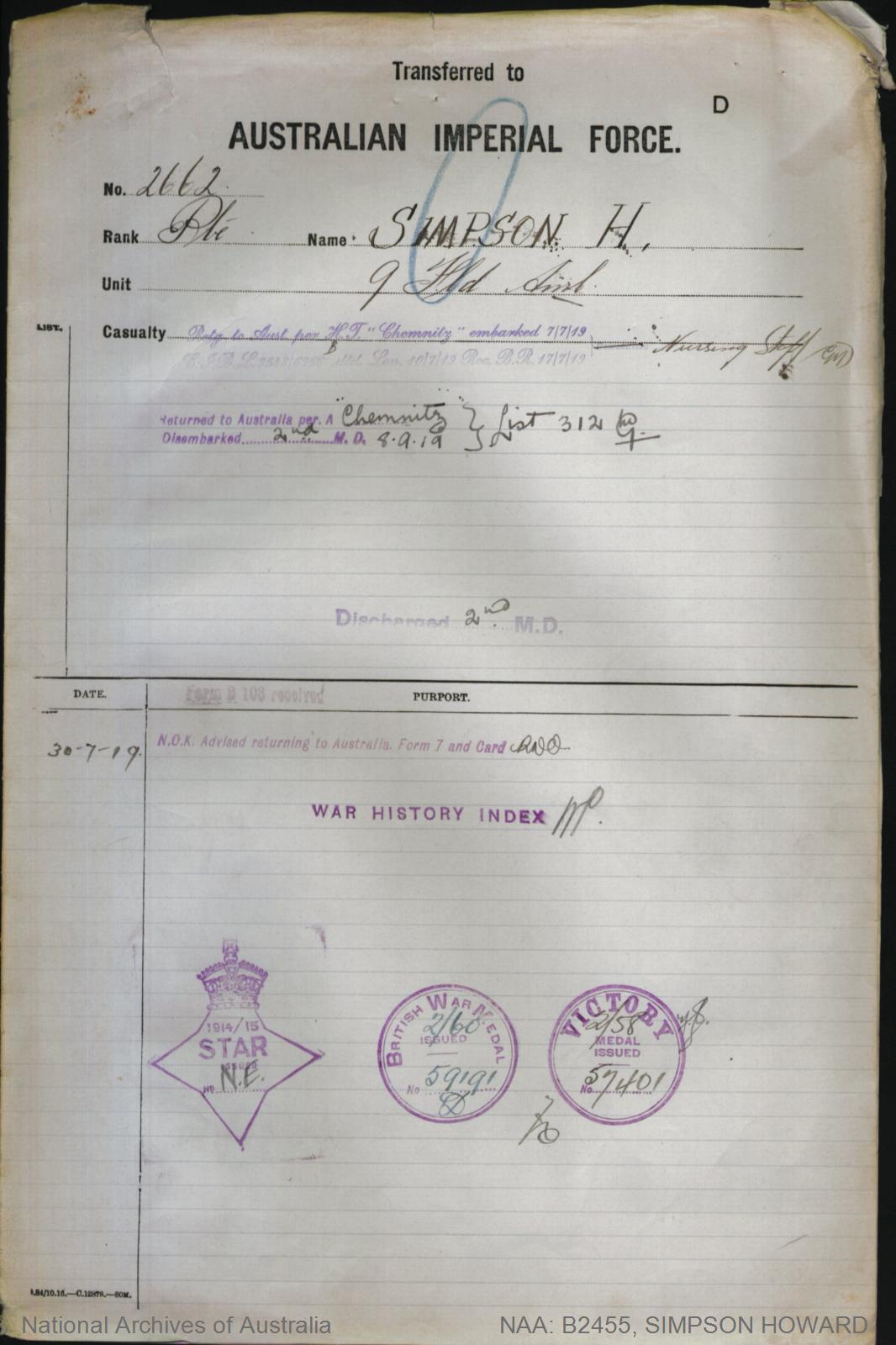

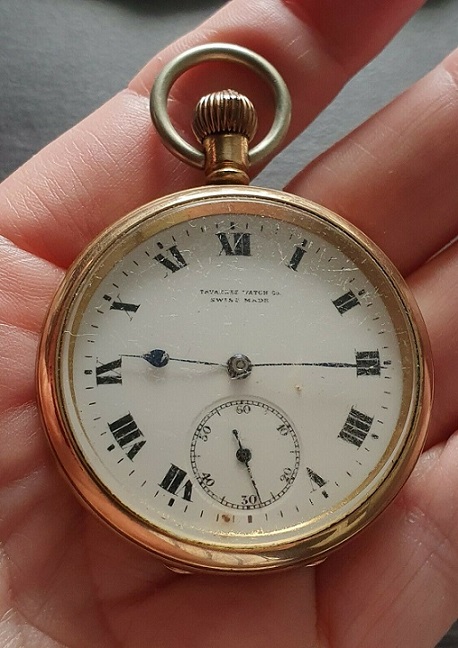

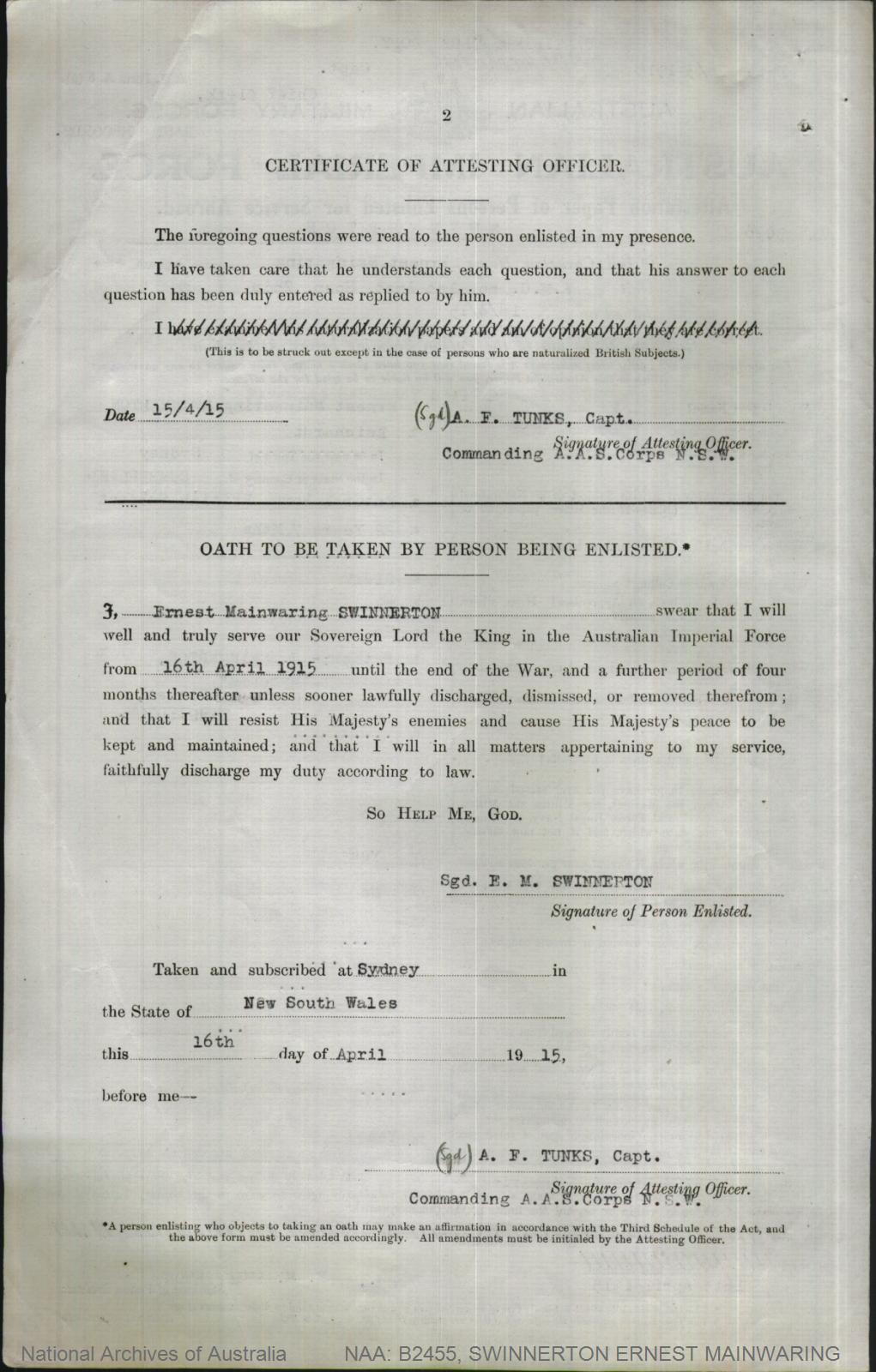
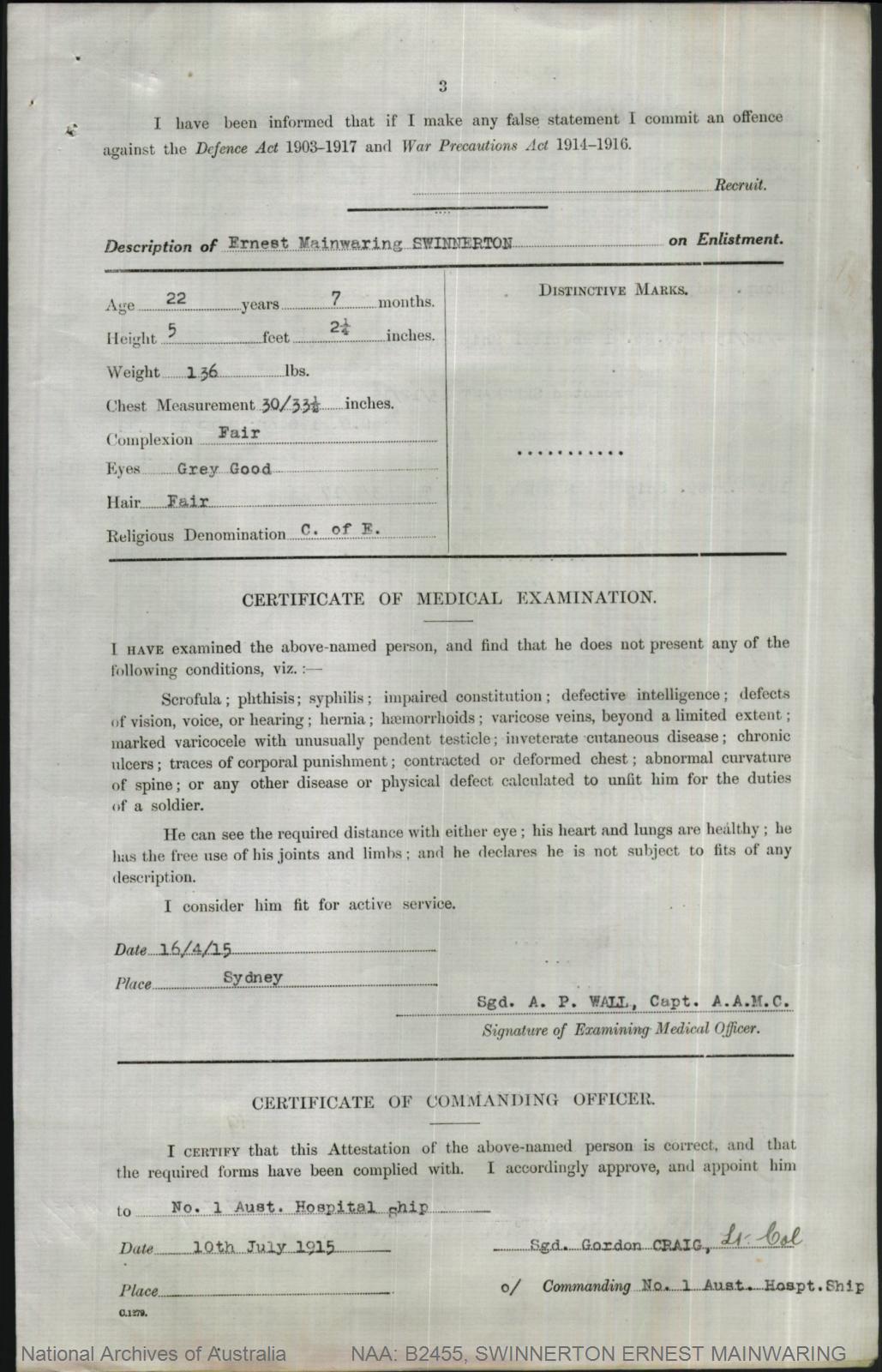
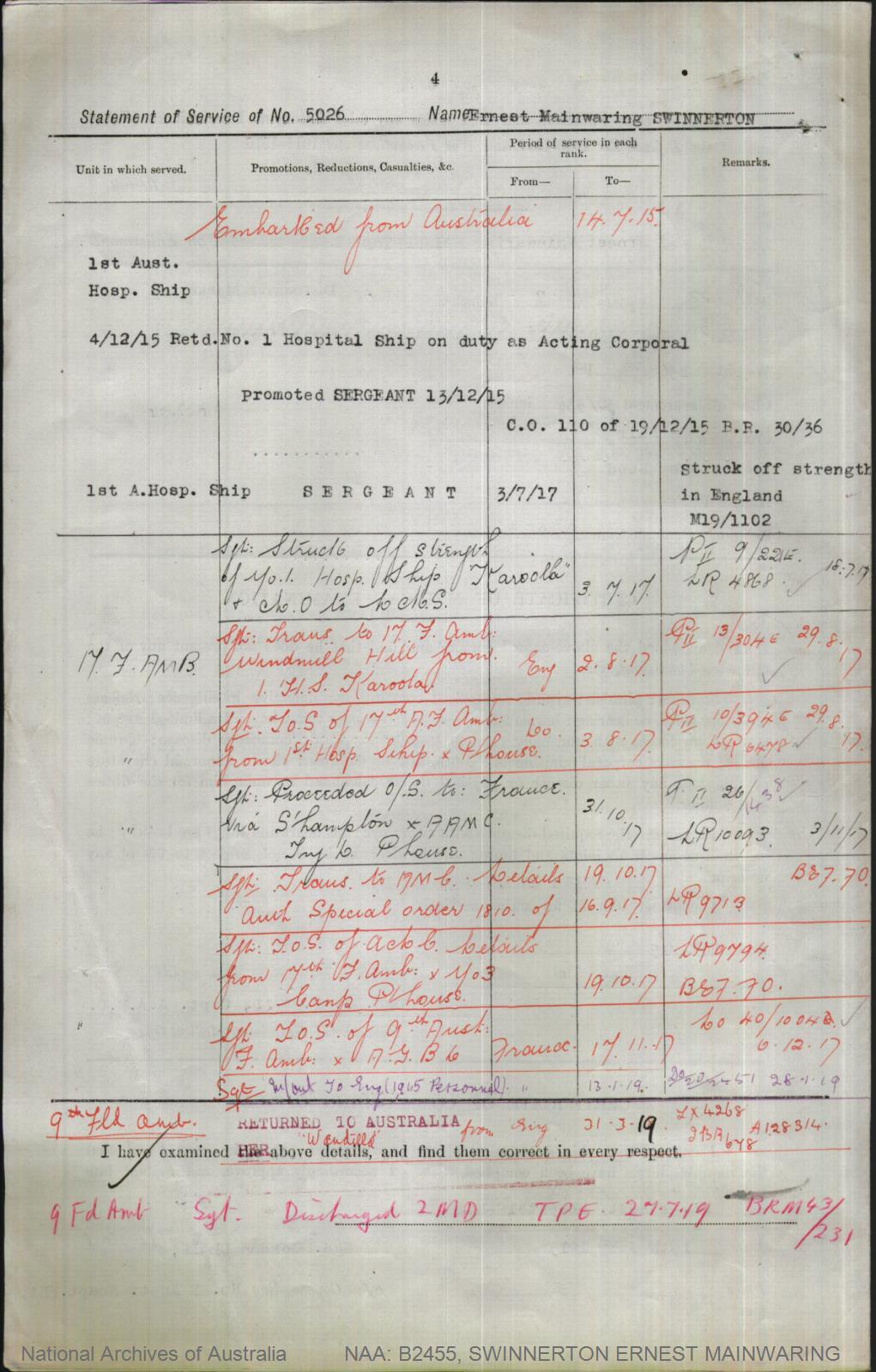



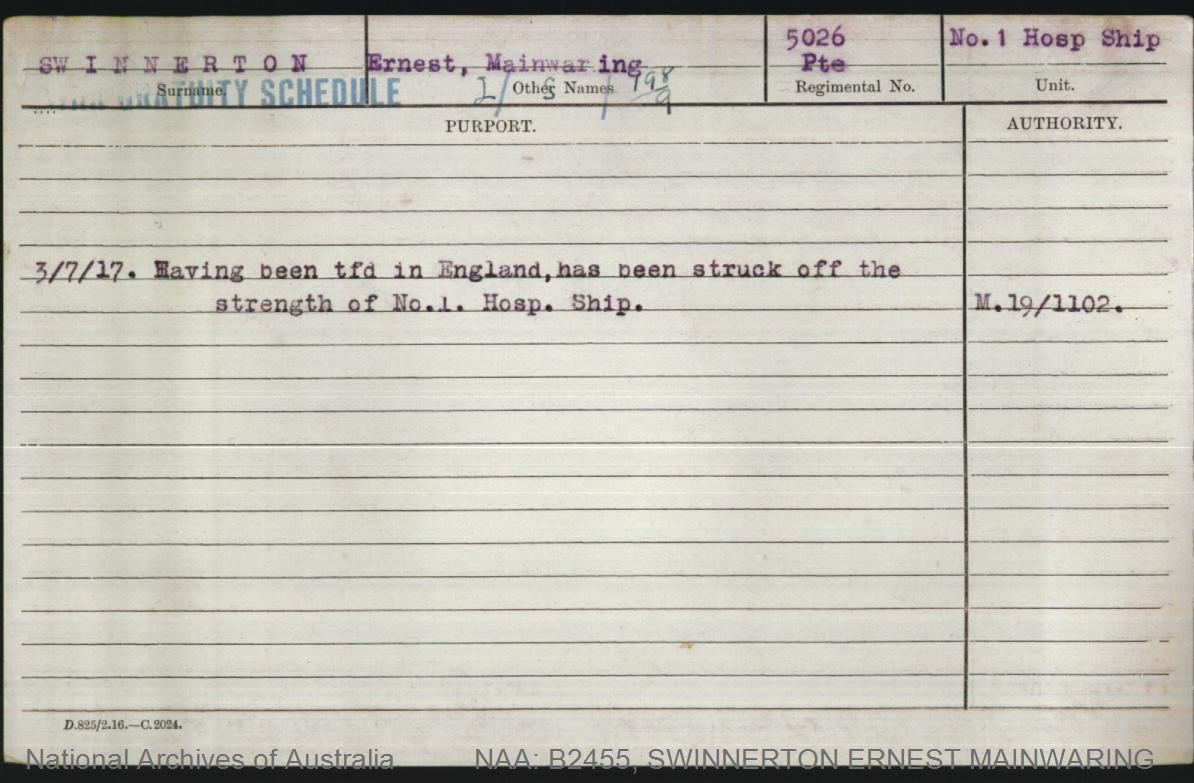

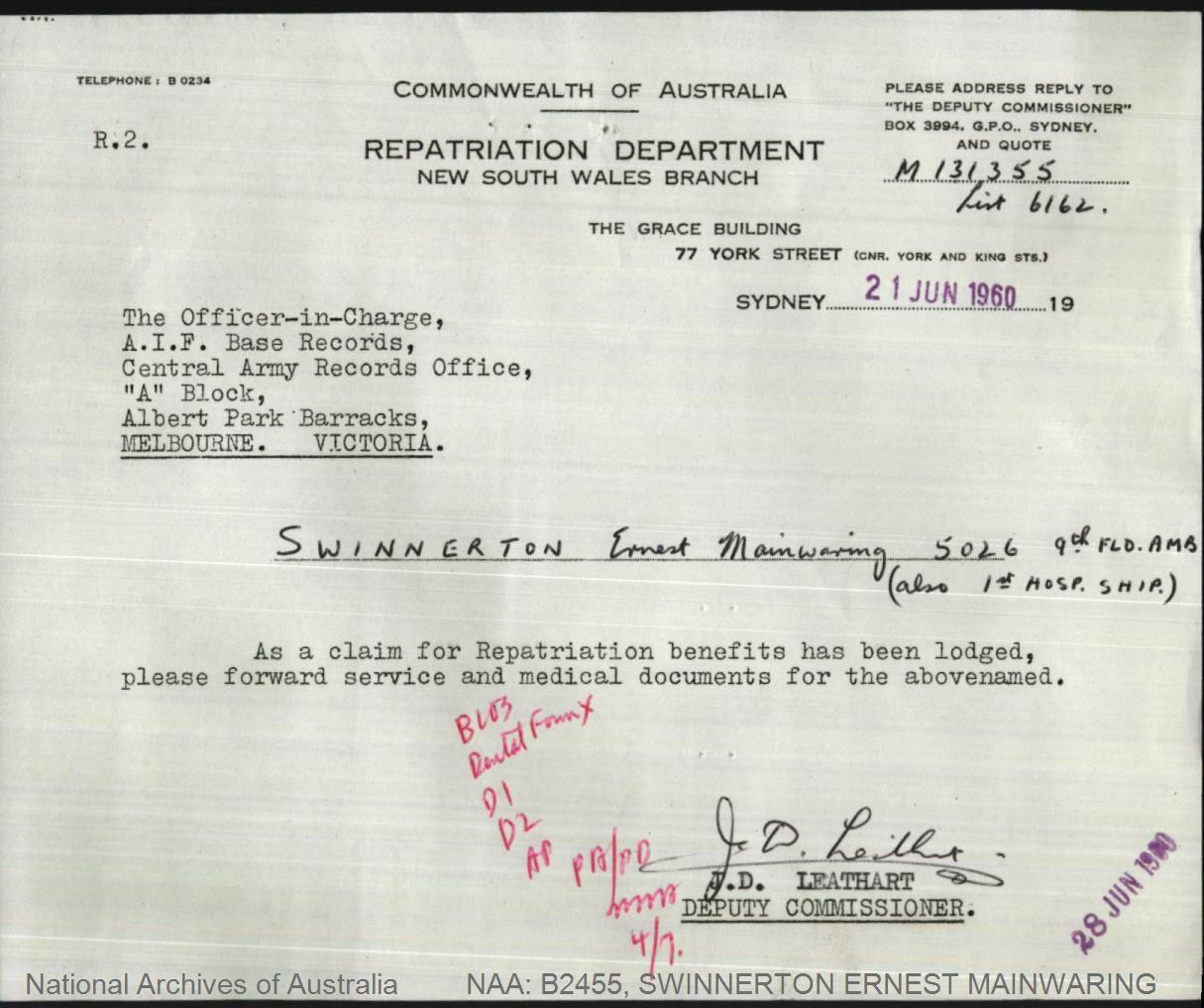


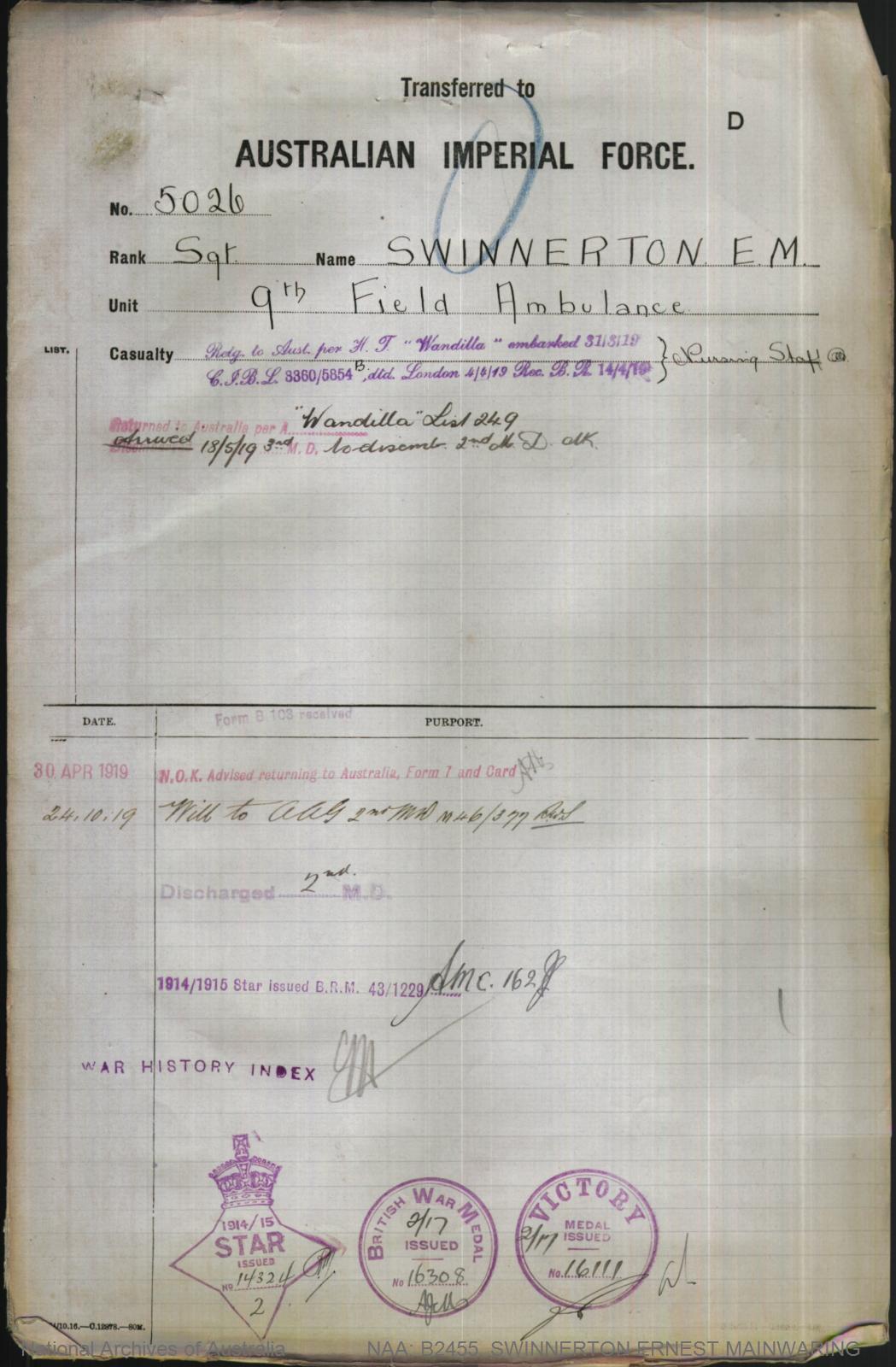

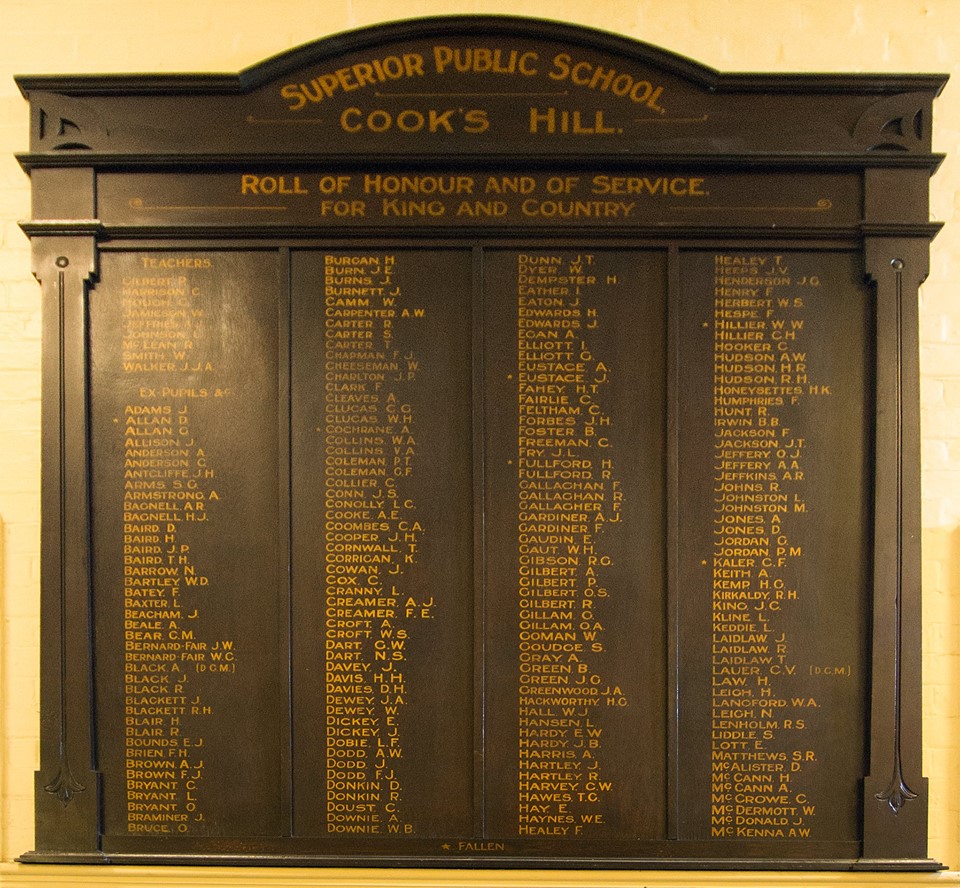
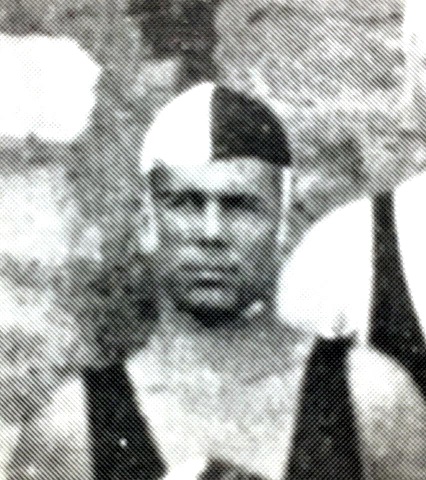
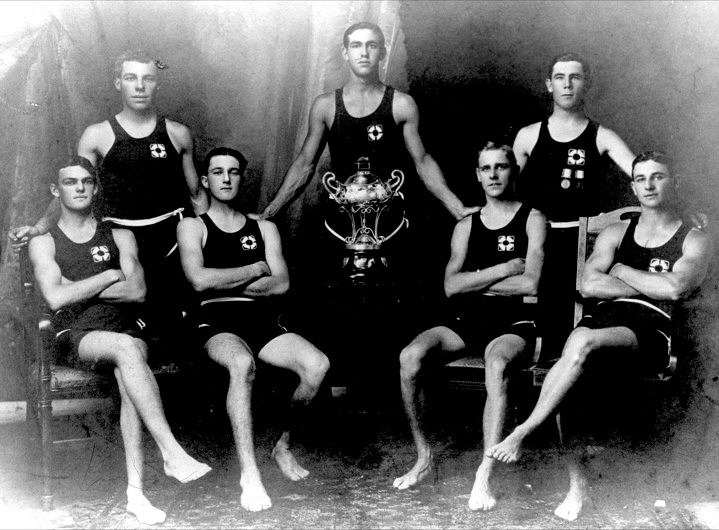

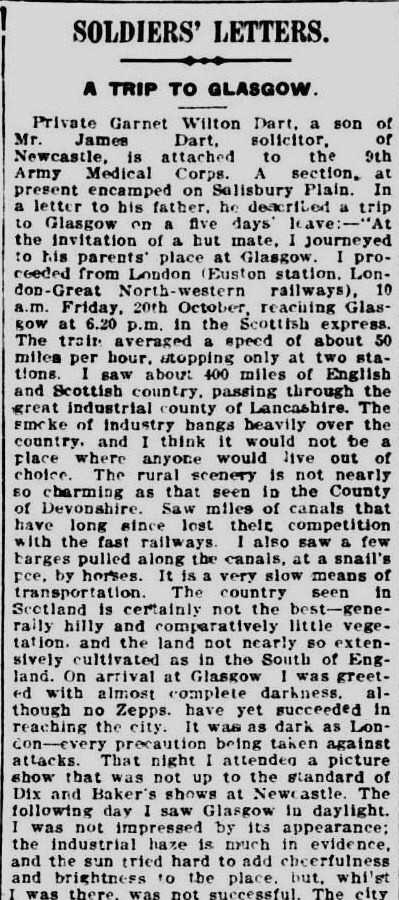
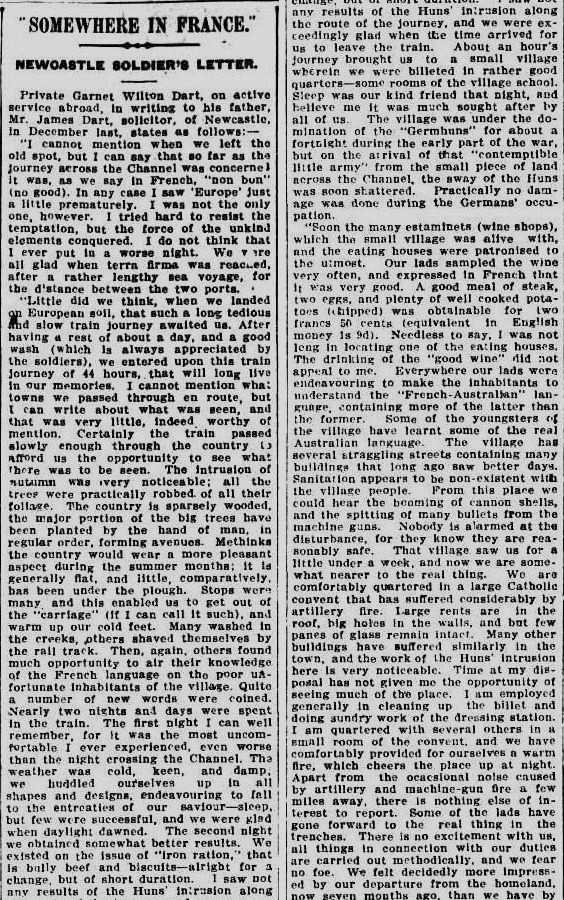
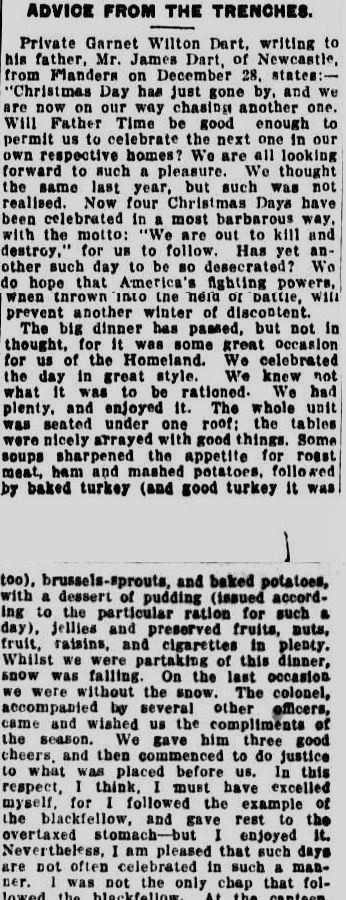
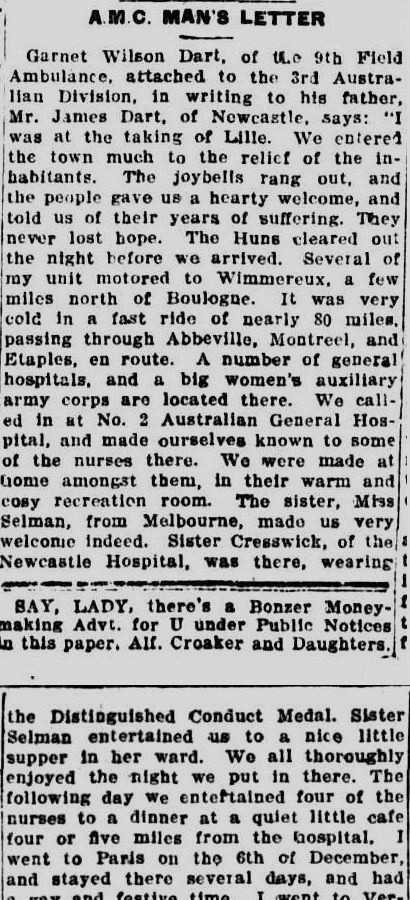

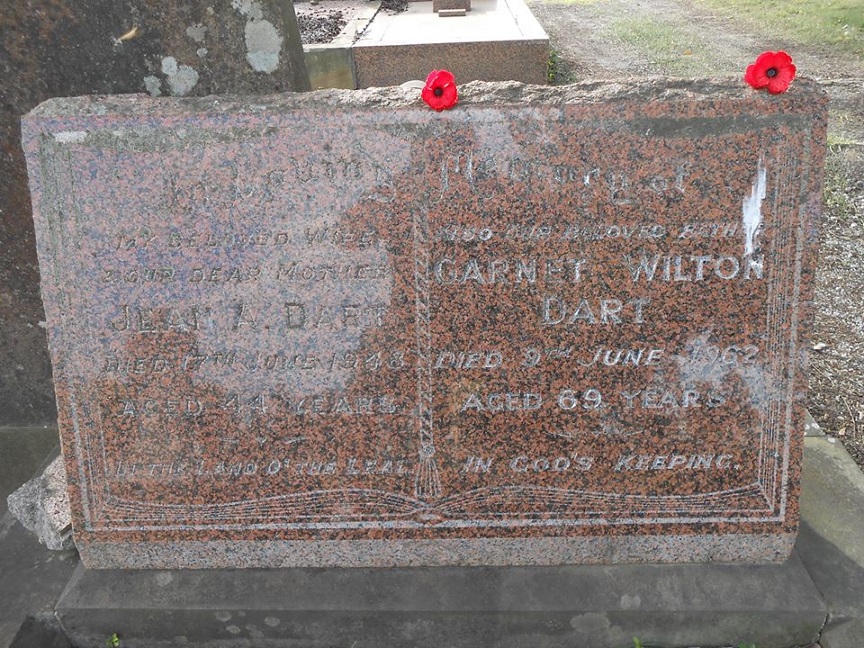

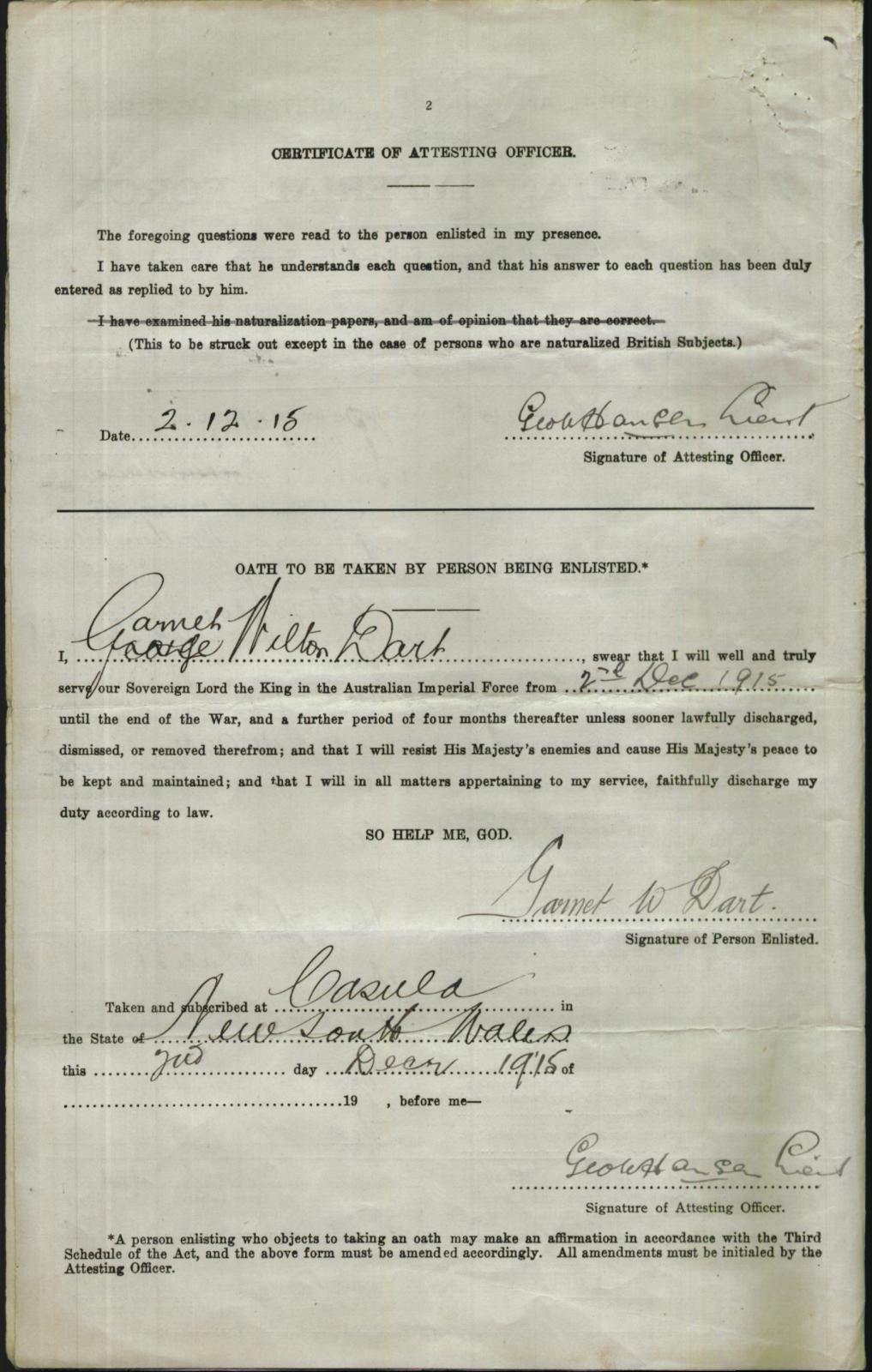

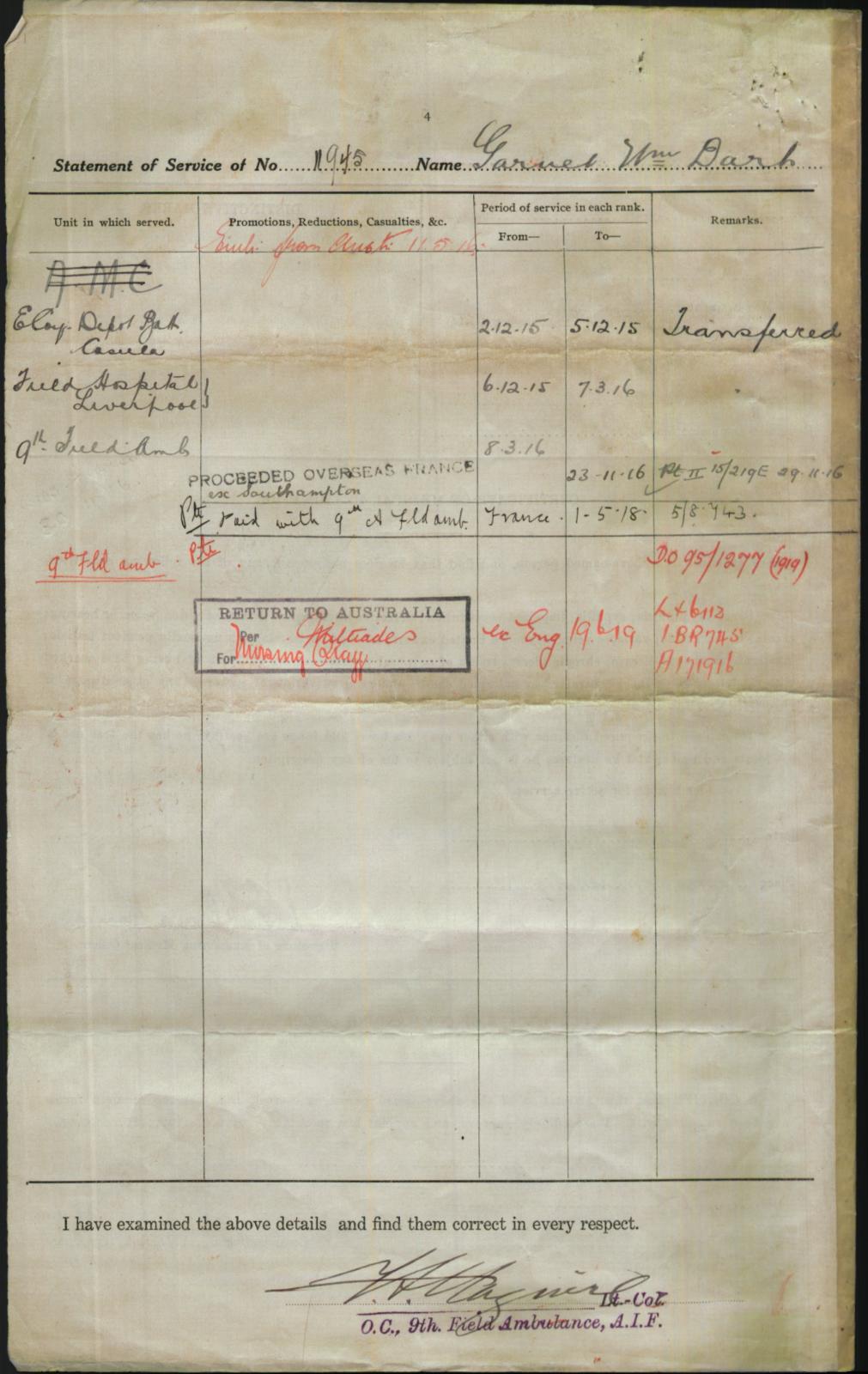
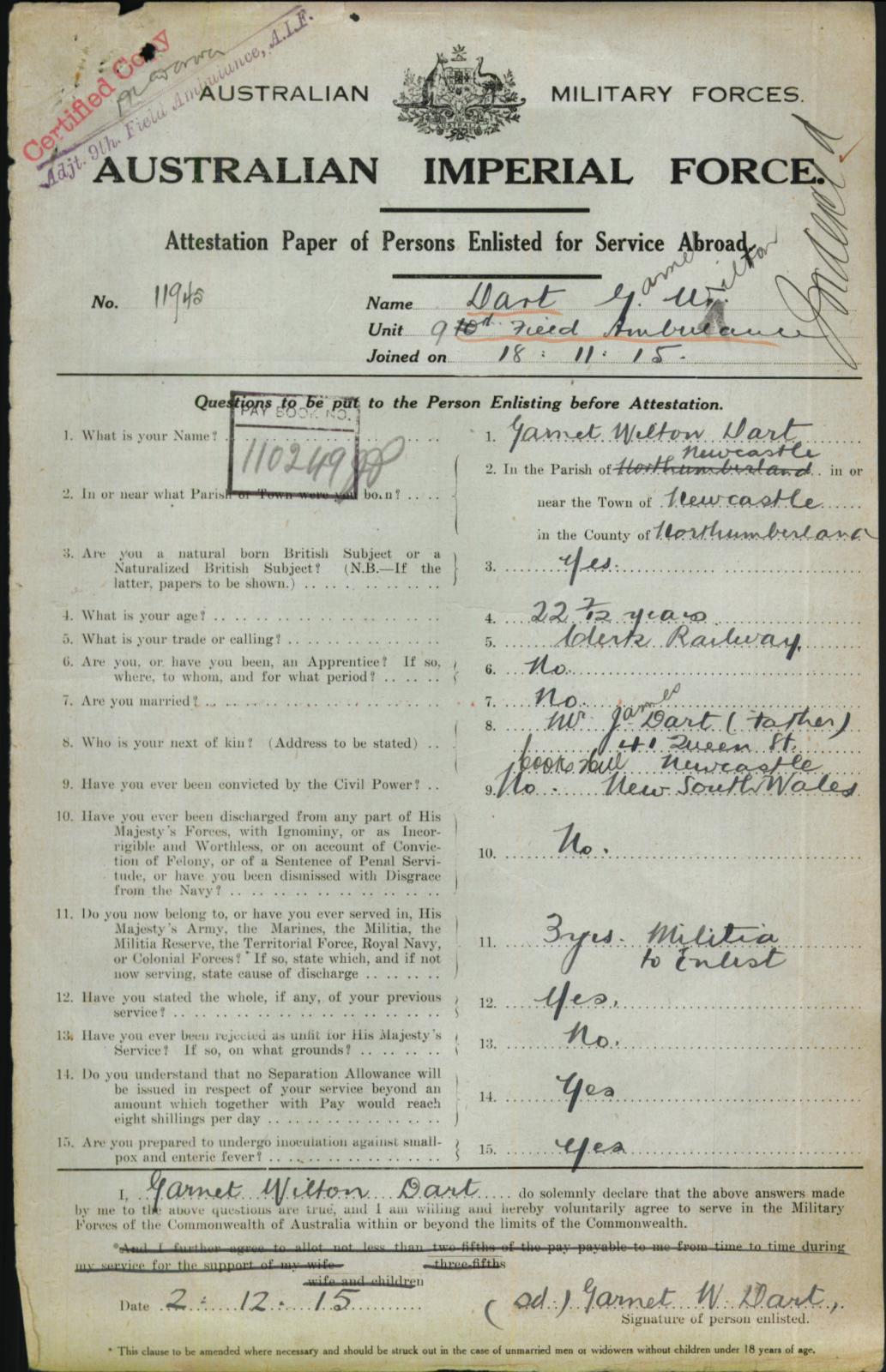
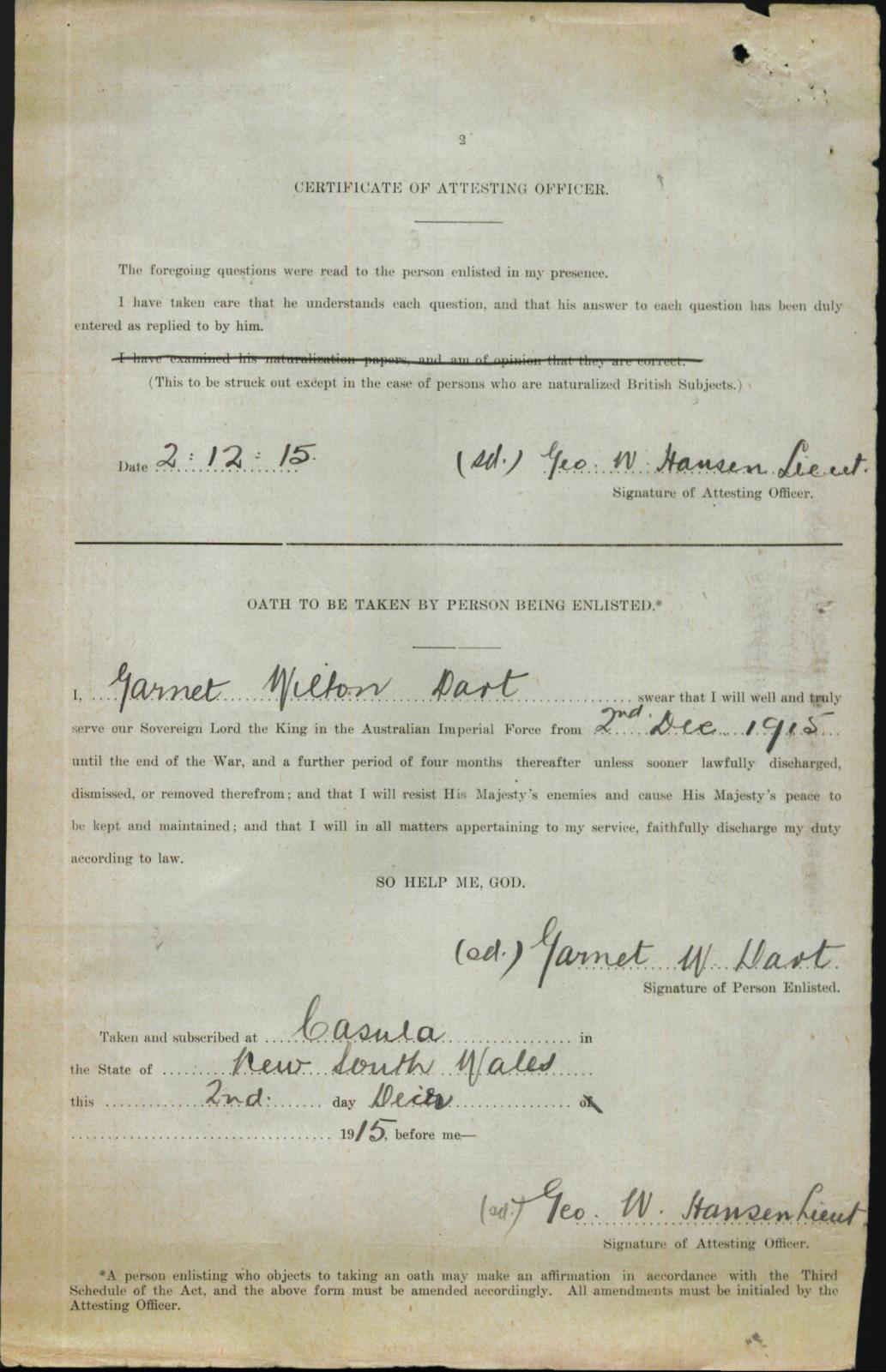
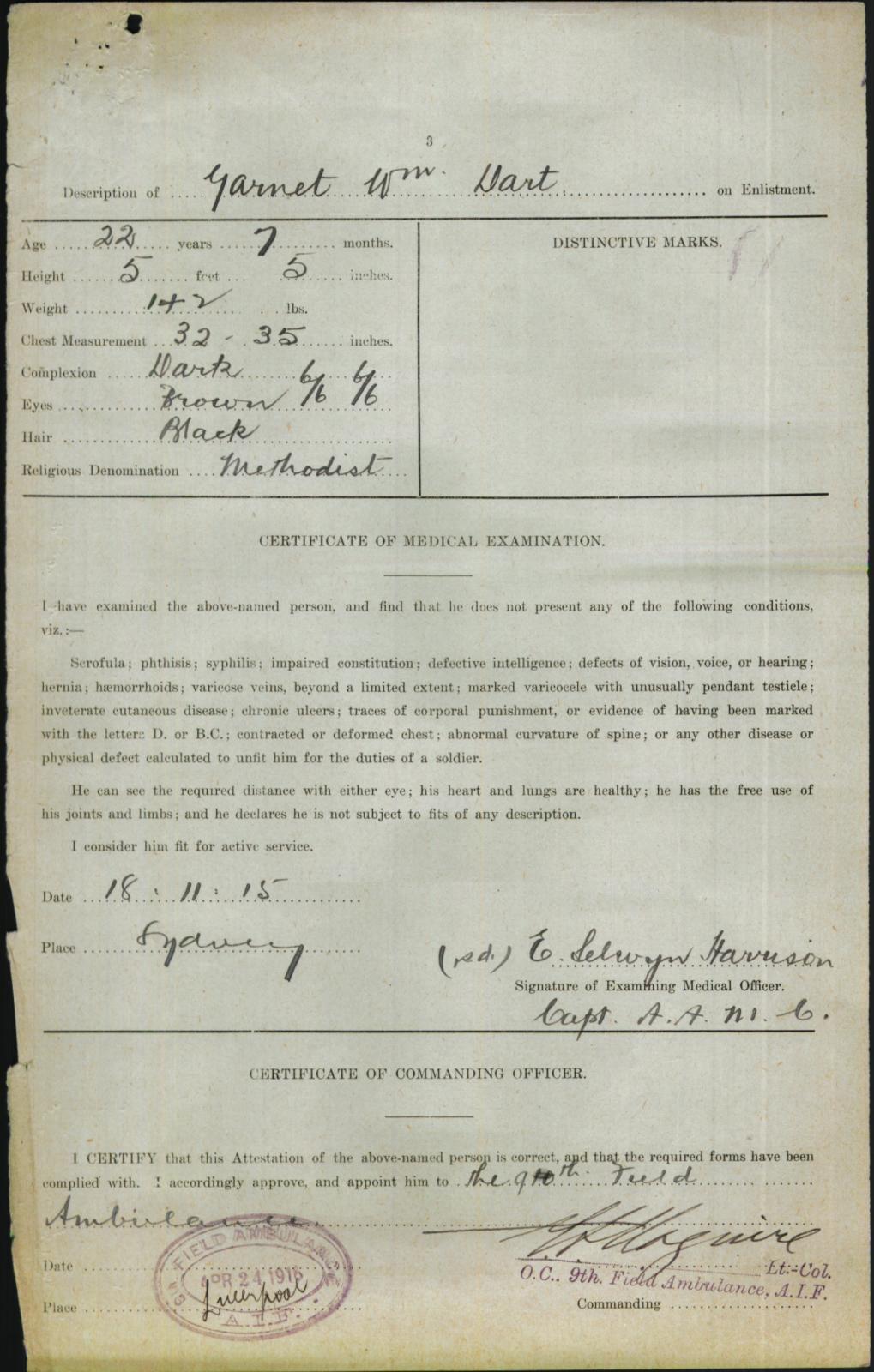

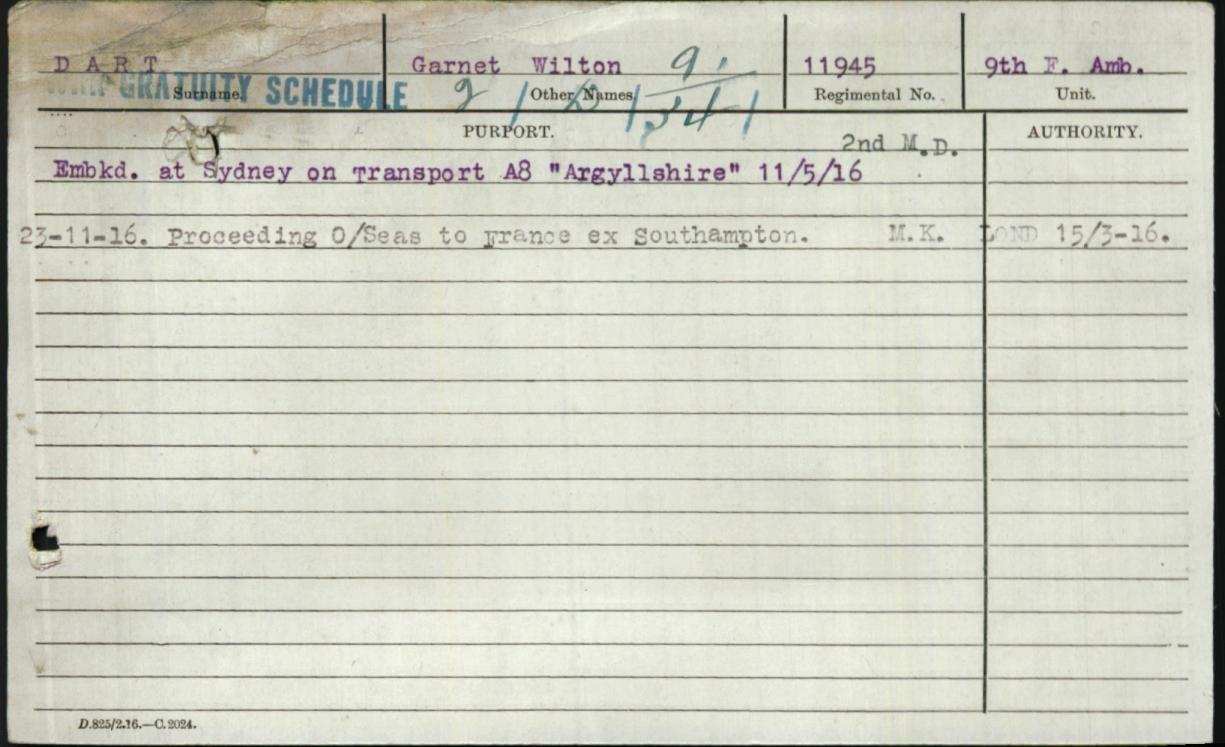
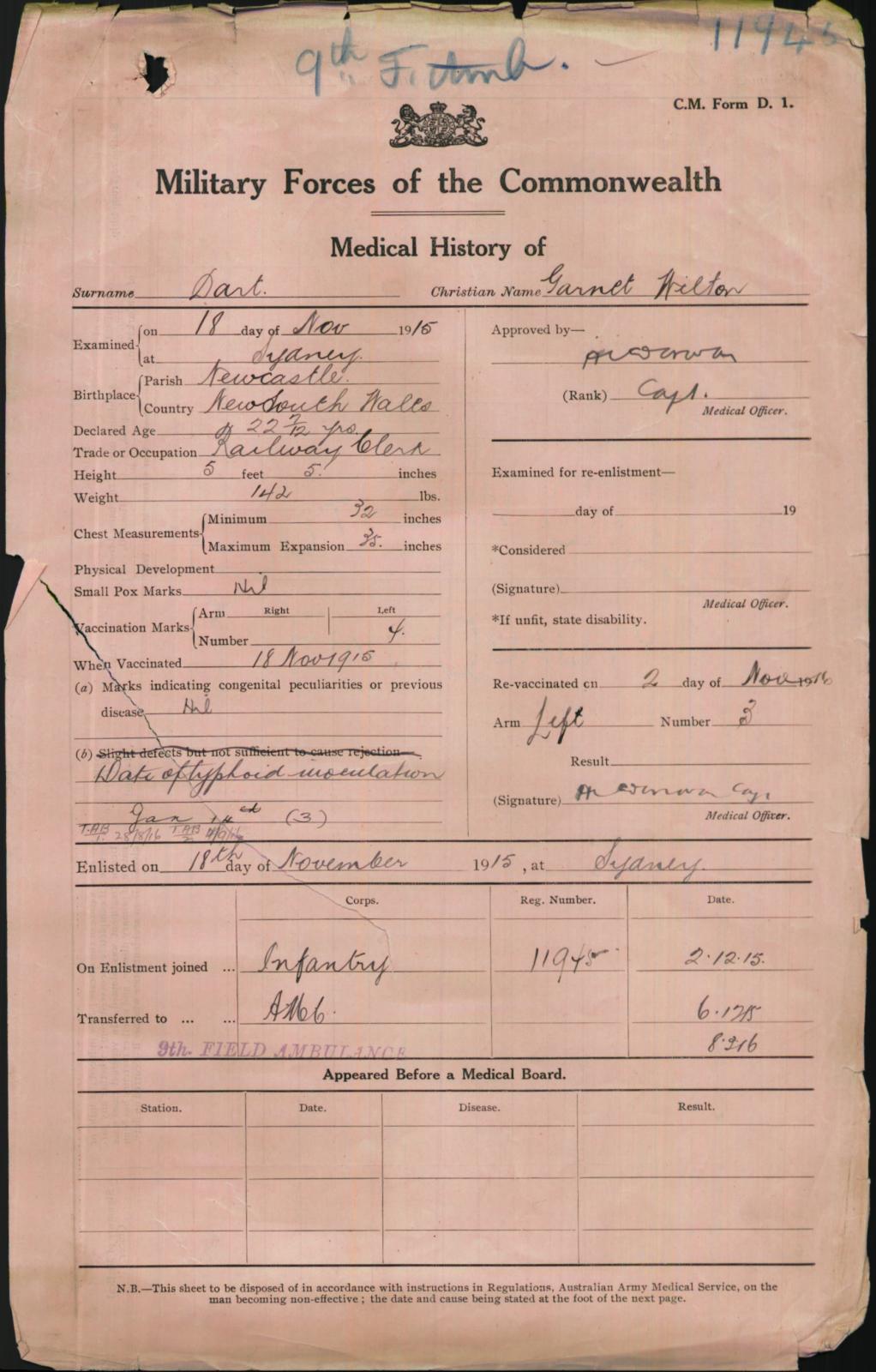

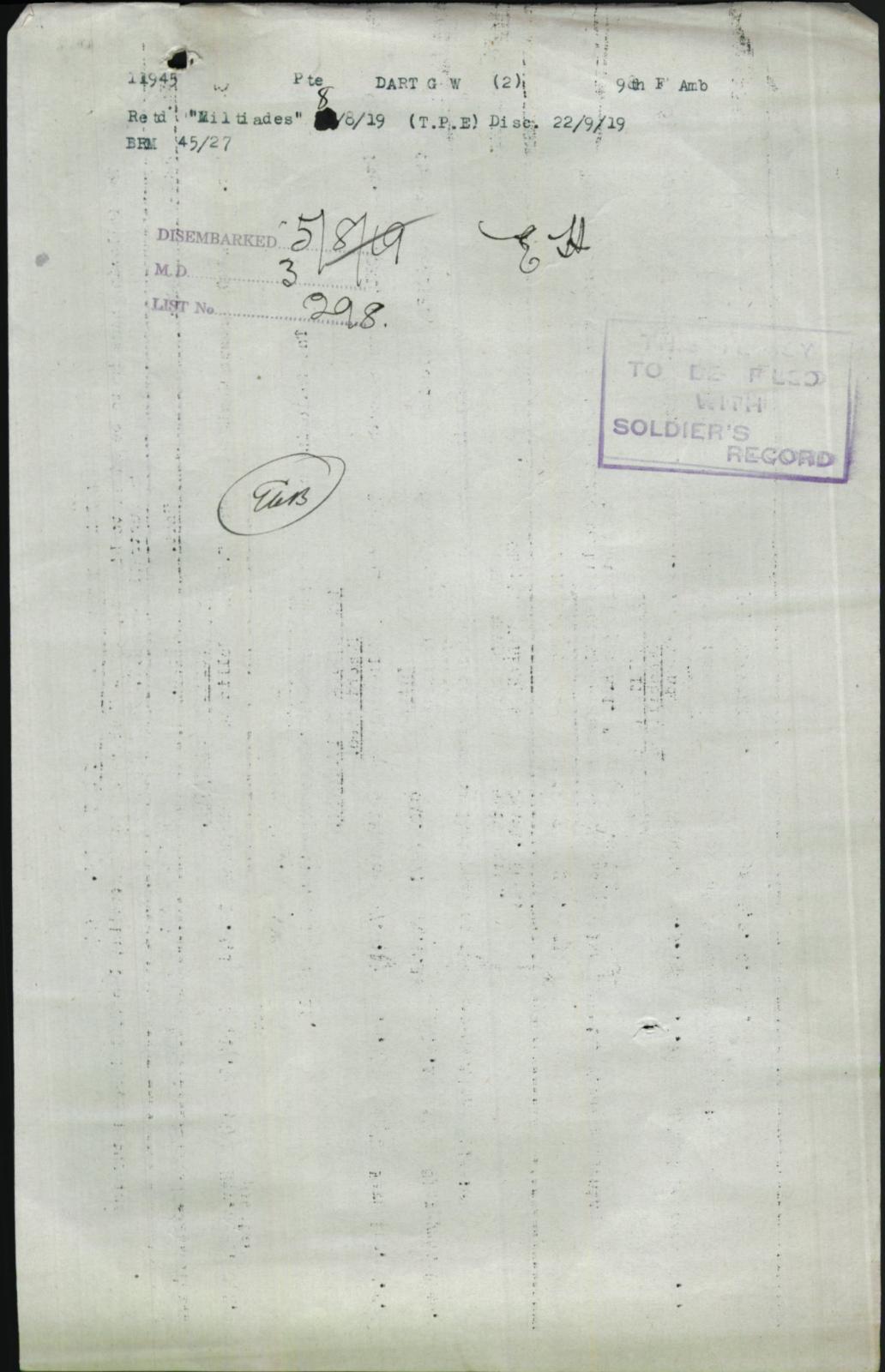
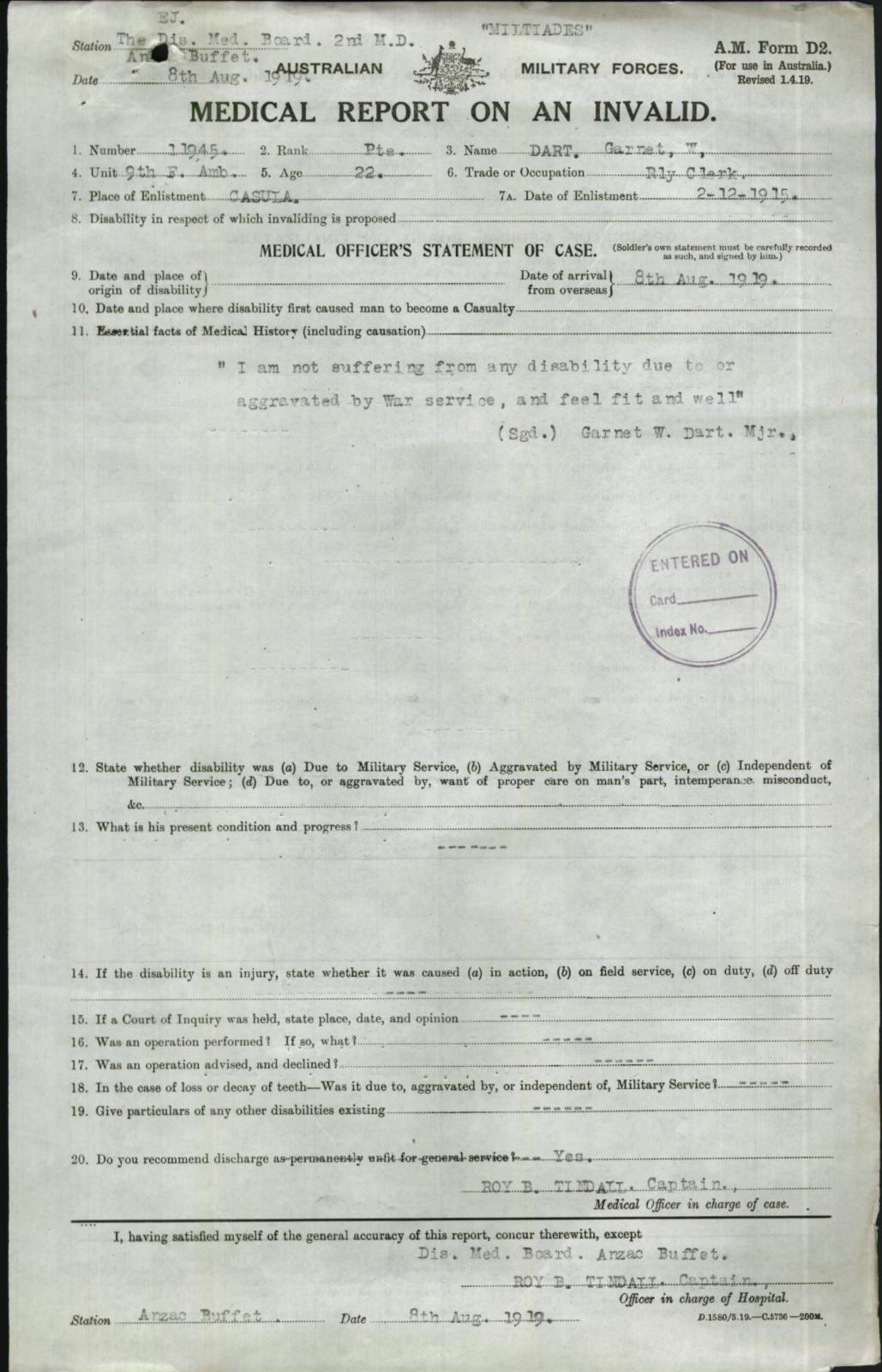
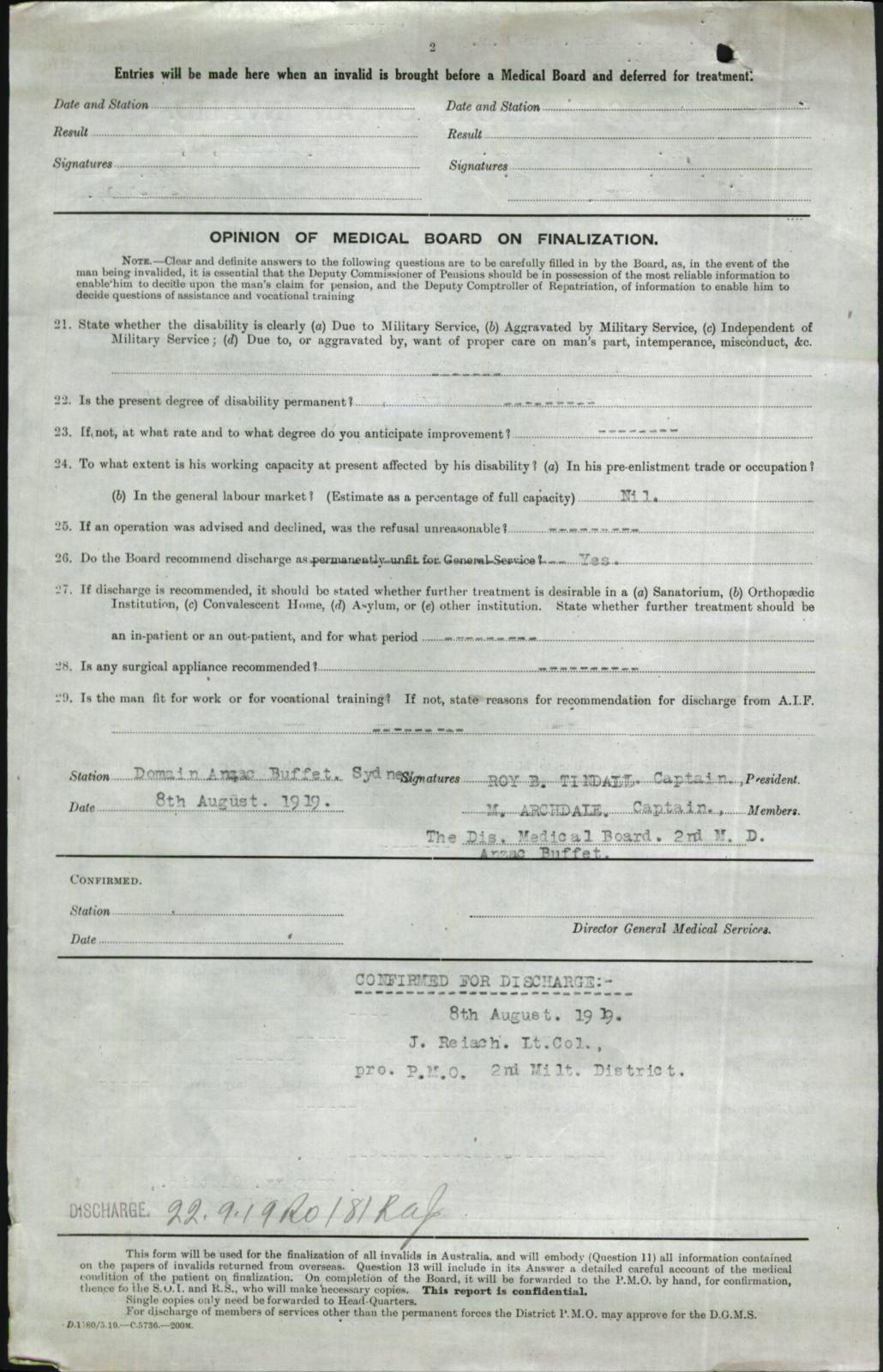
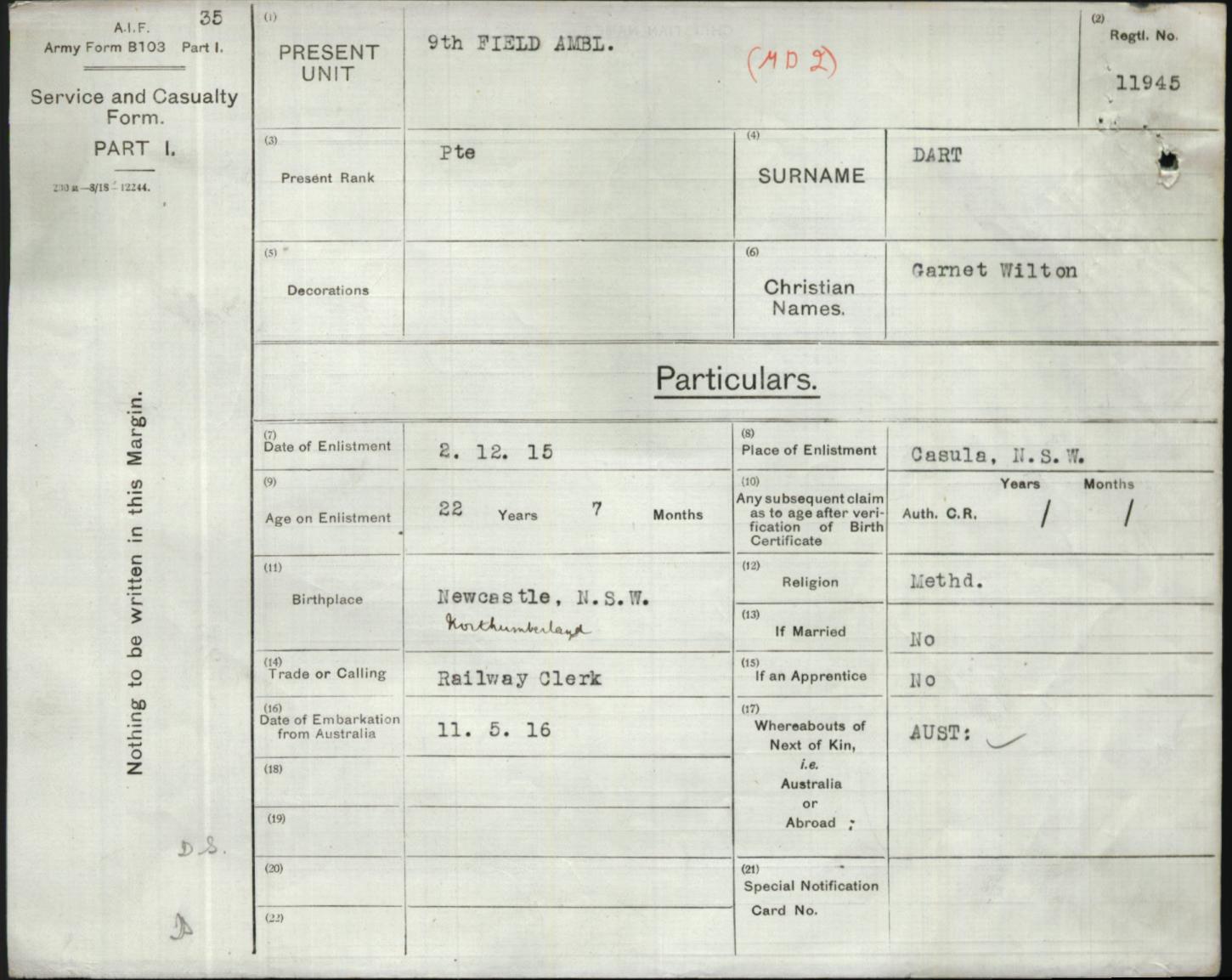
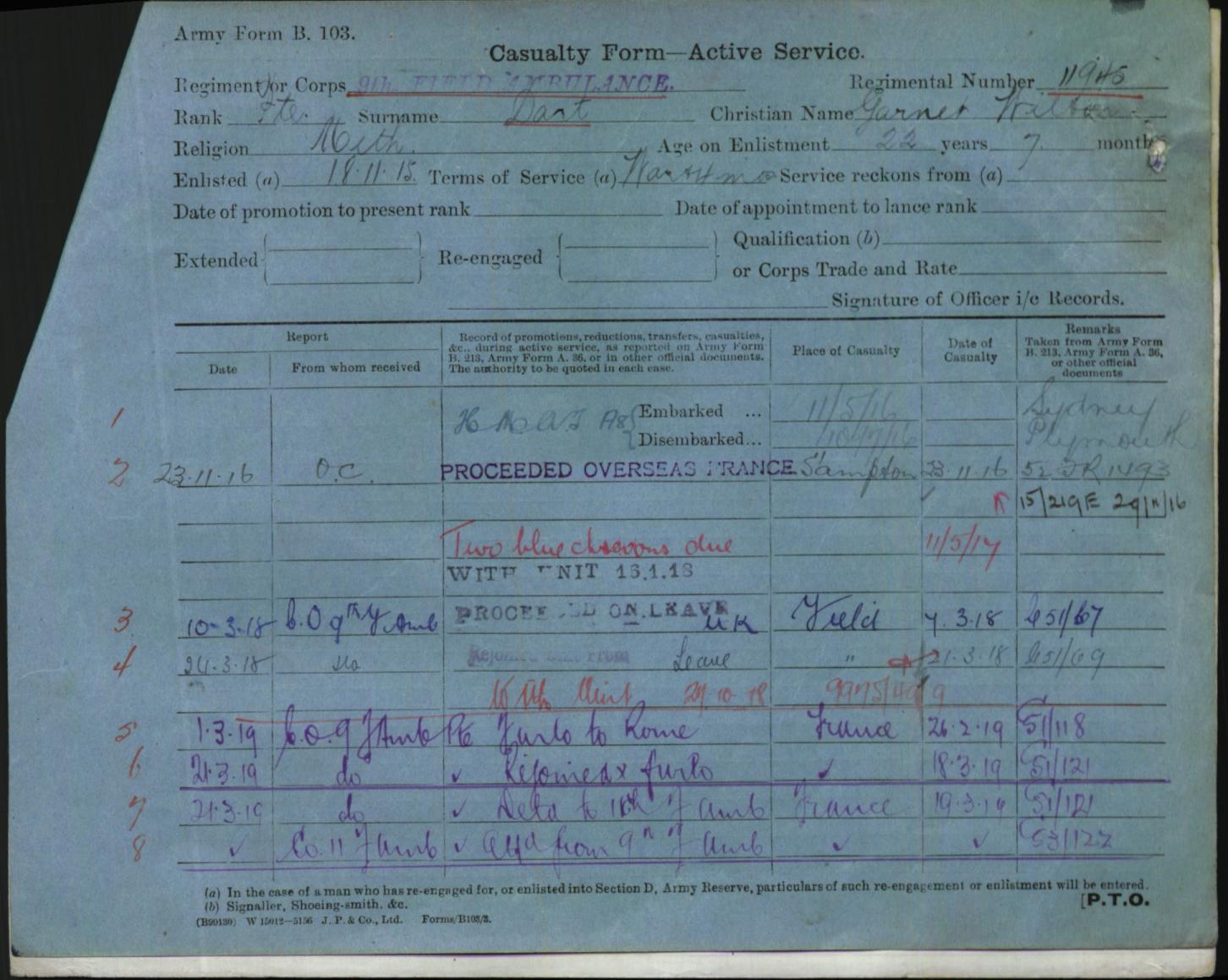
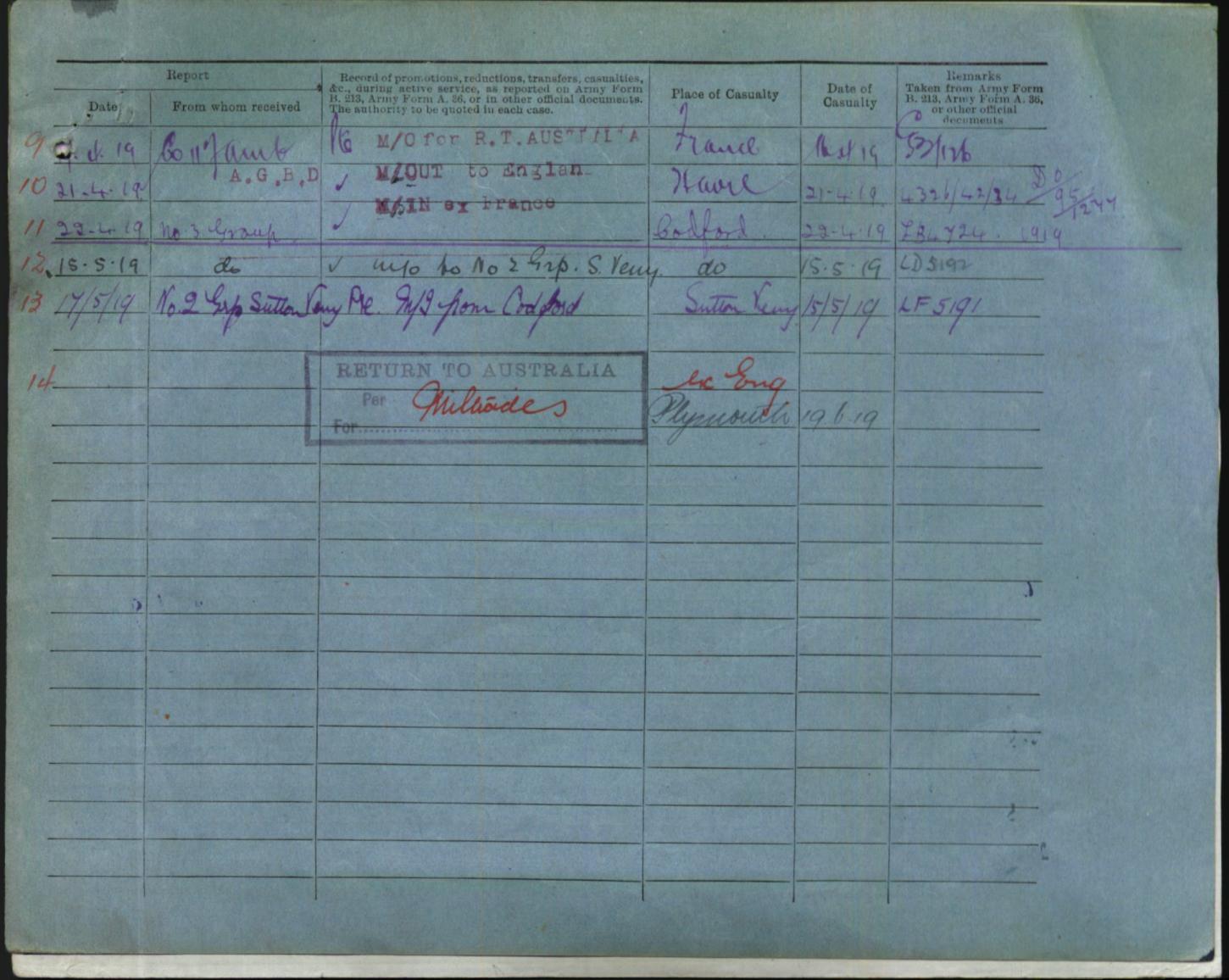
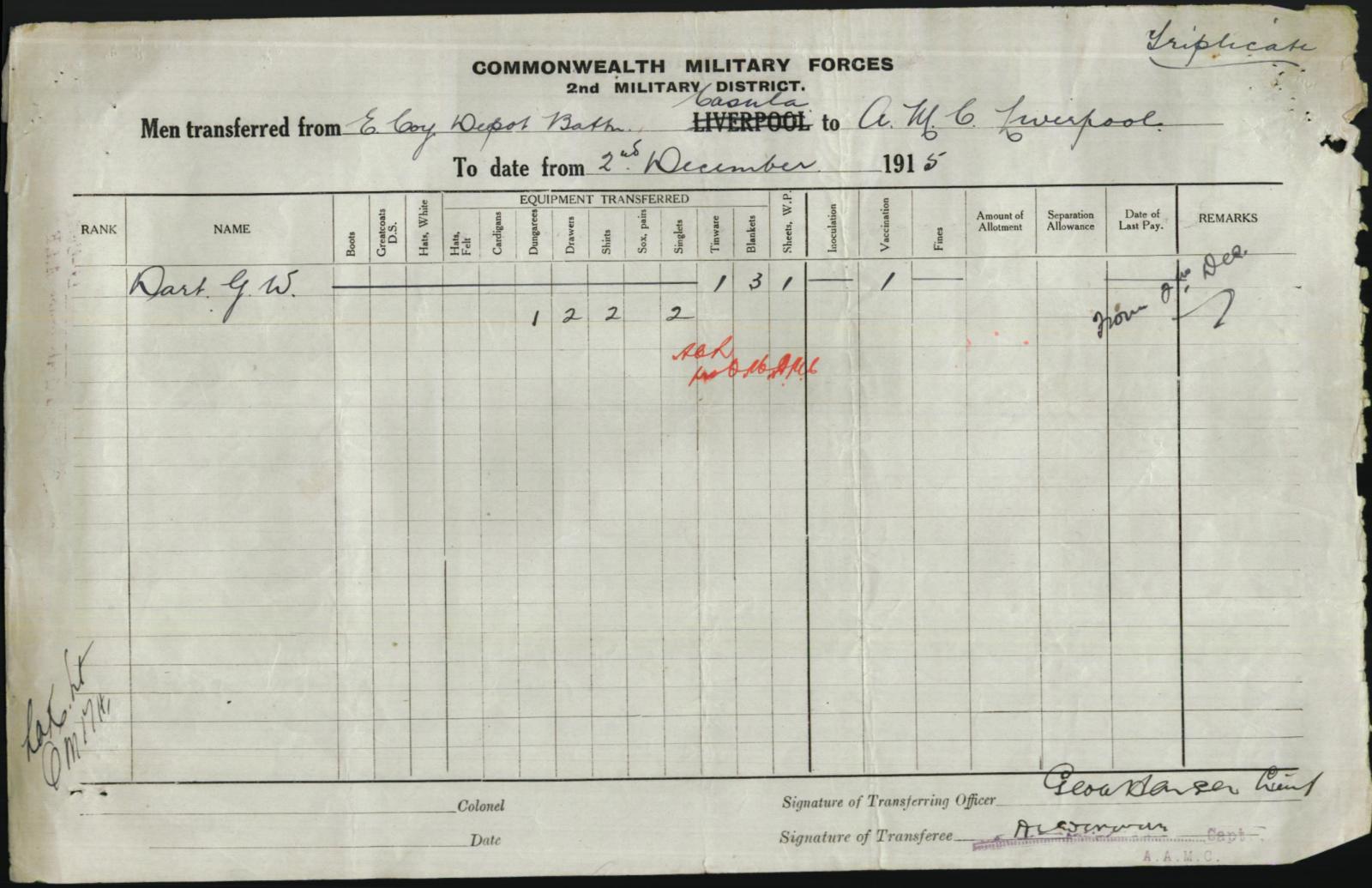
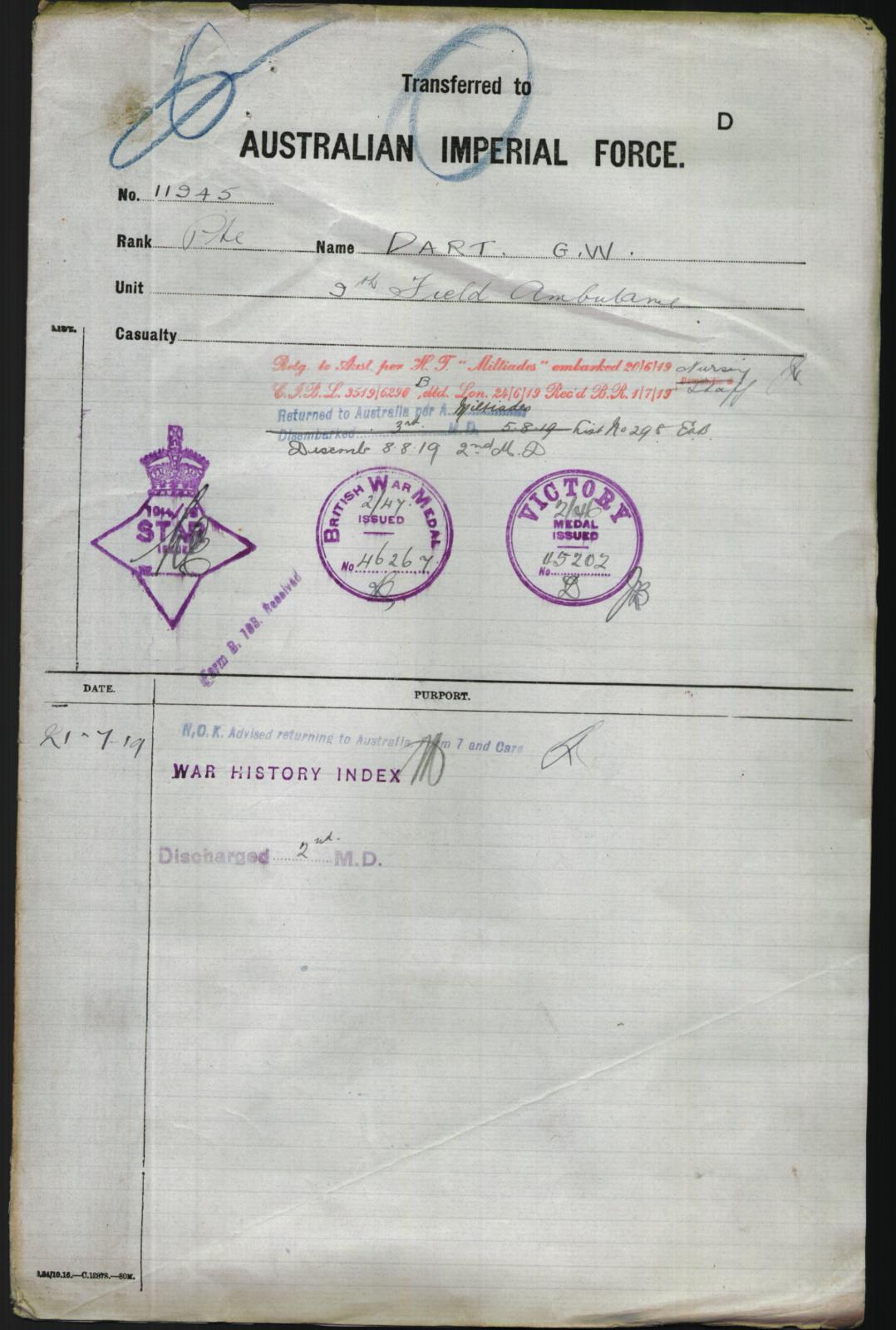
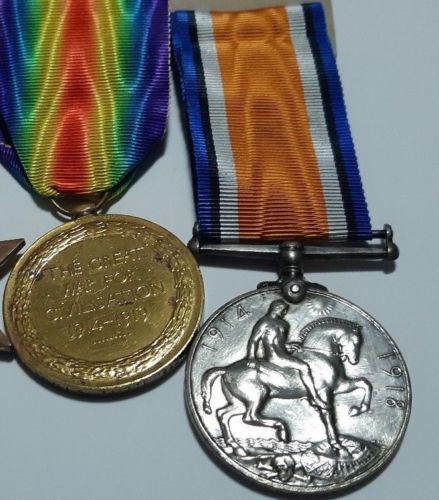
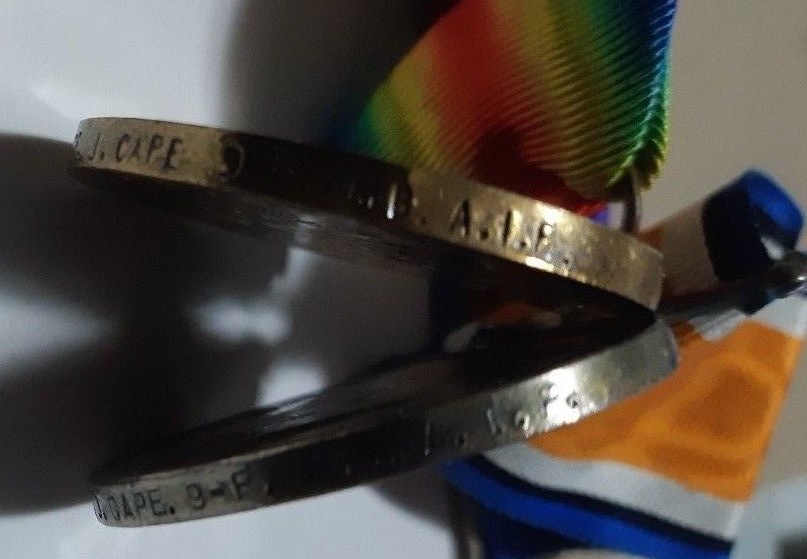
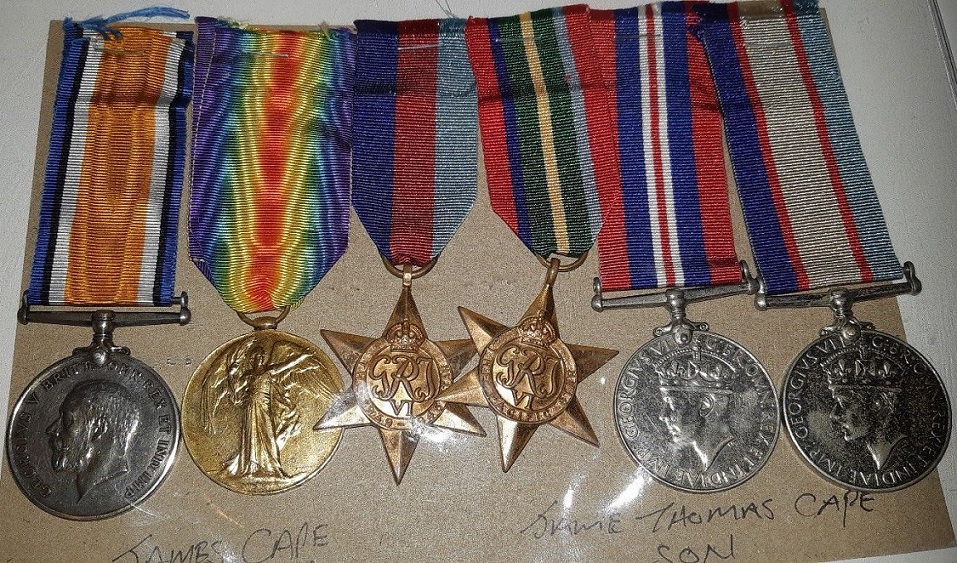
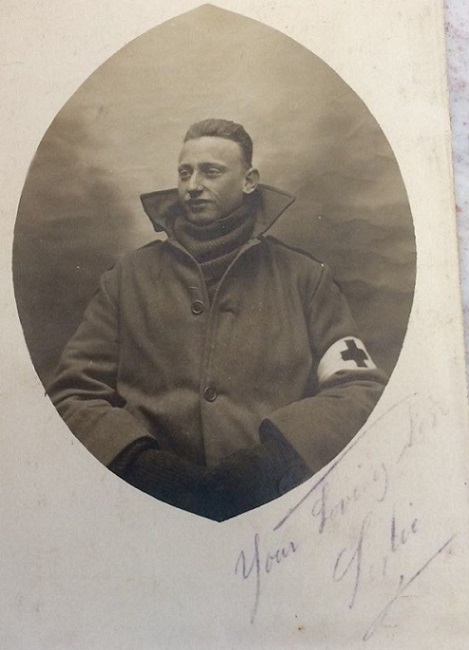 9th AUSTRALIAN FIELD AMBULANCE. AIF
9th AUSTRALIAN FIELD AMBULANCE. AIF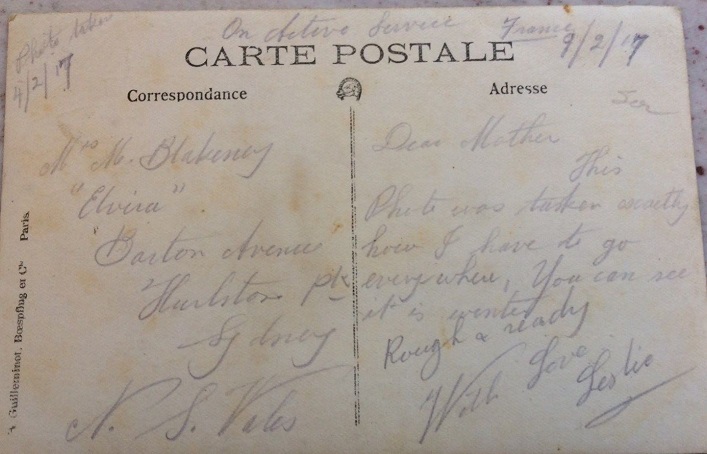
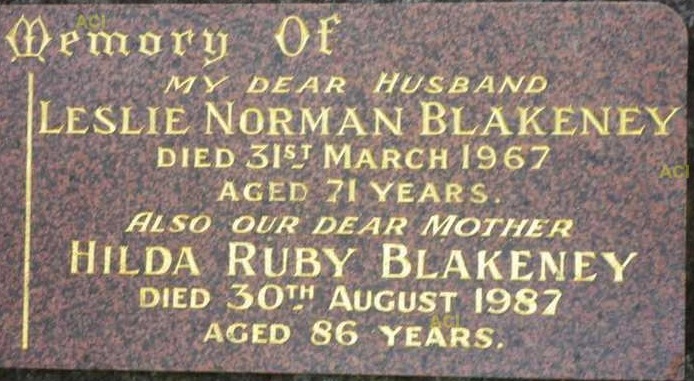

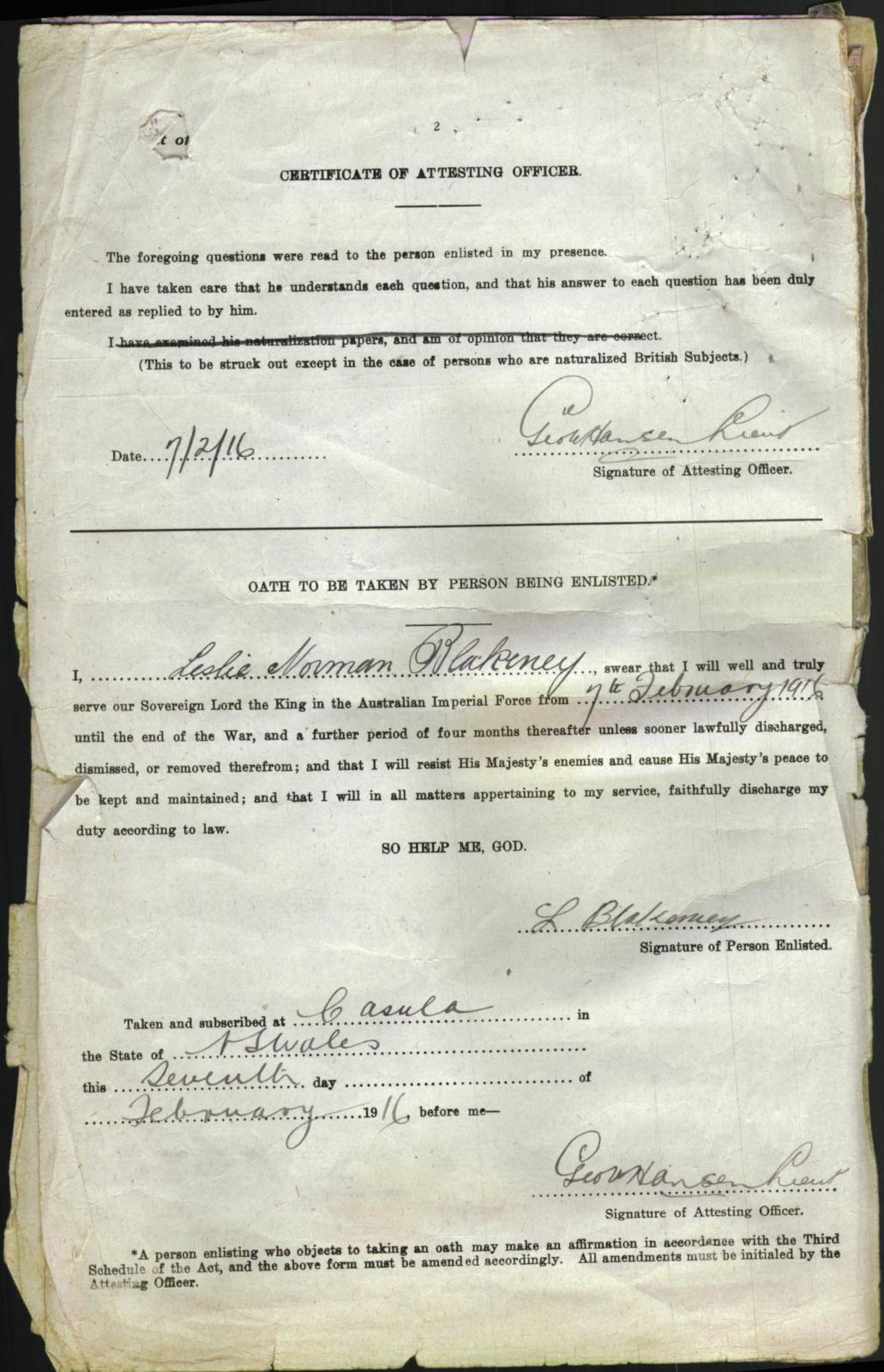
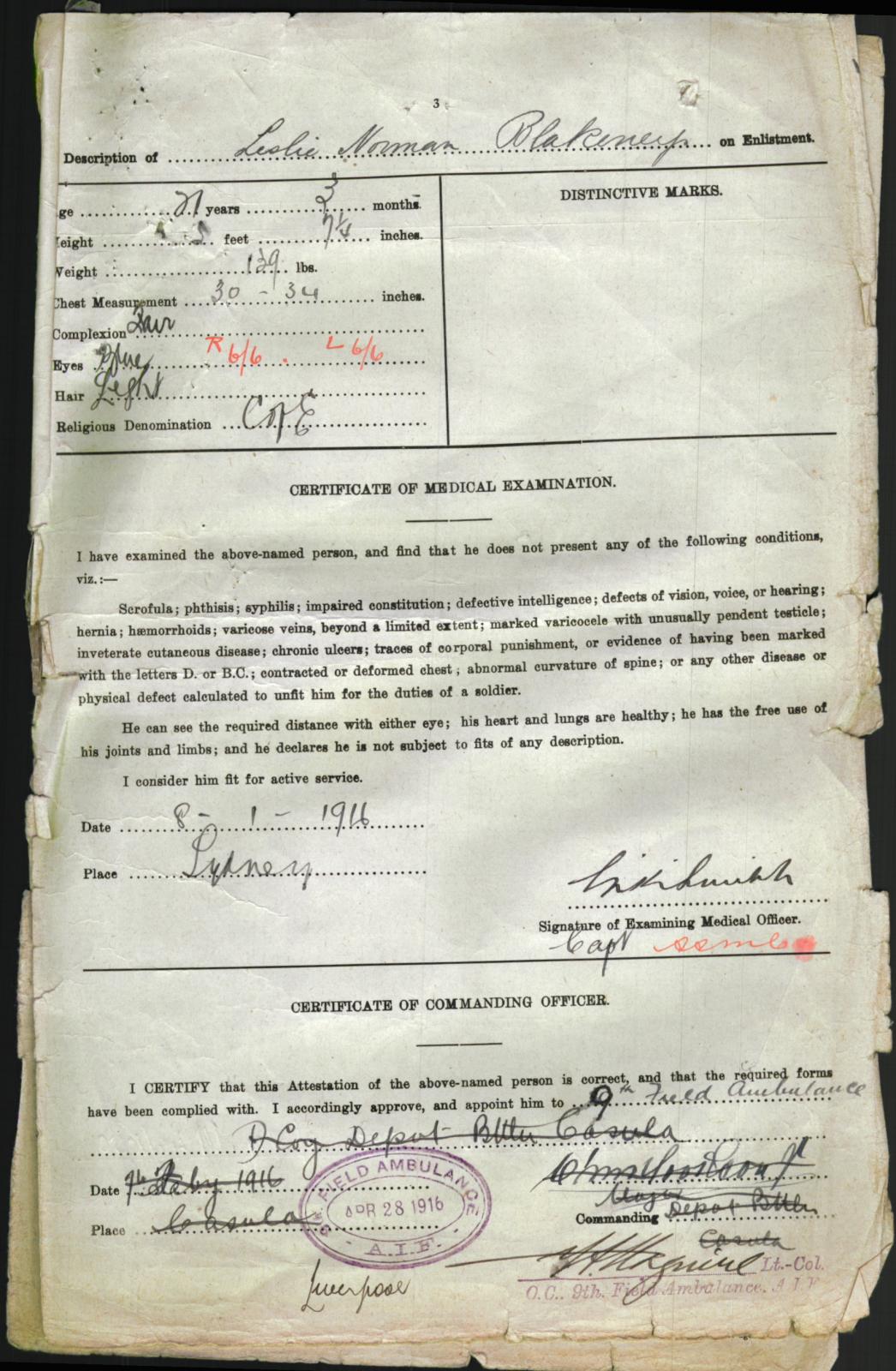
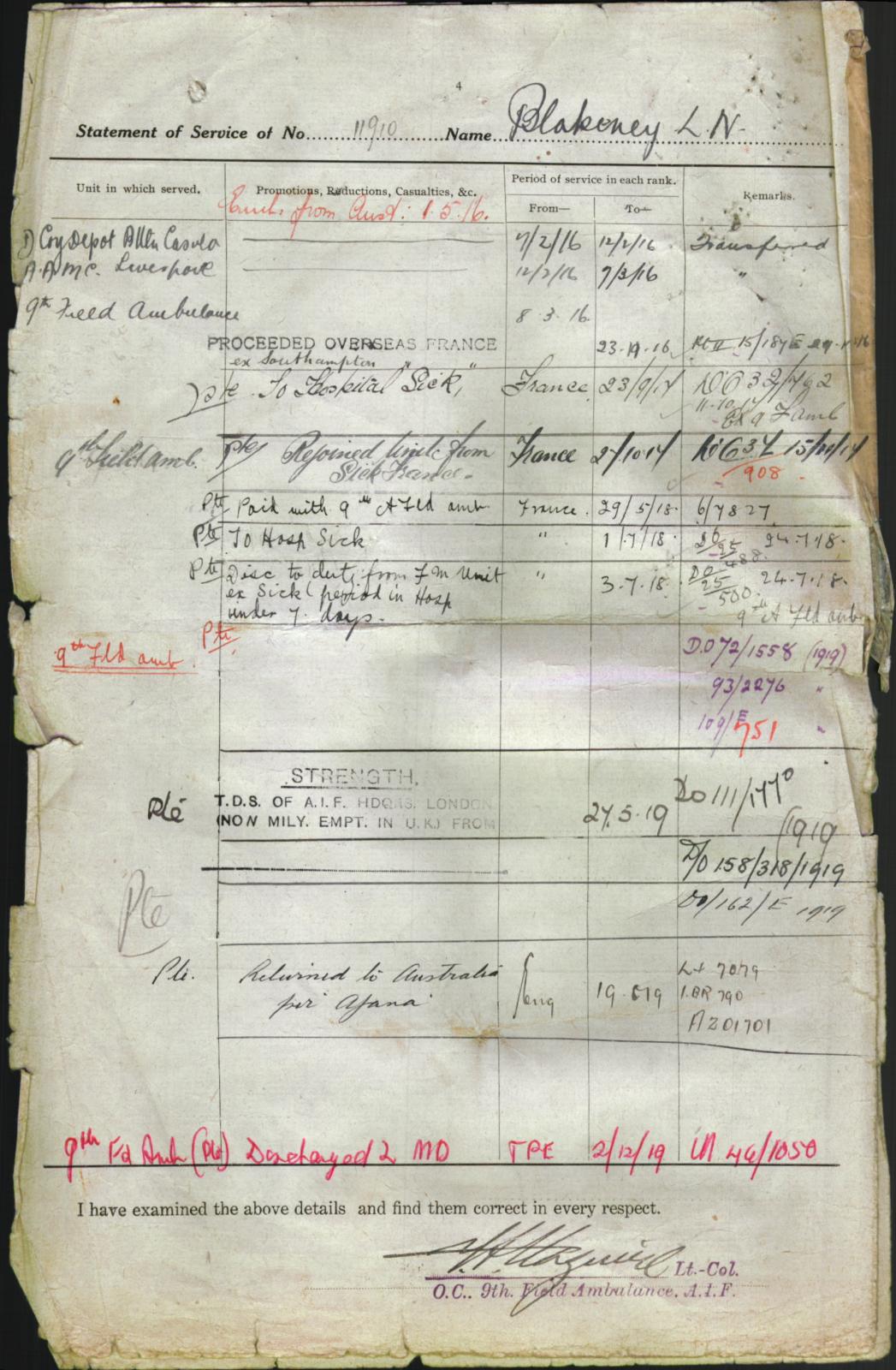

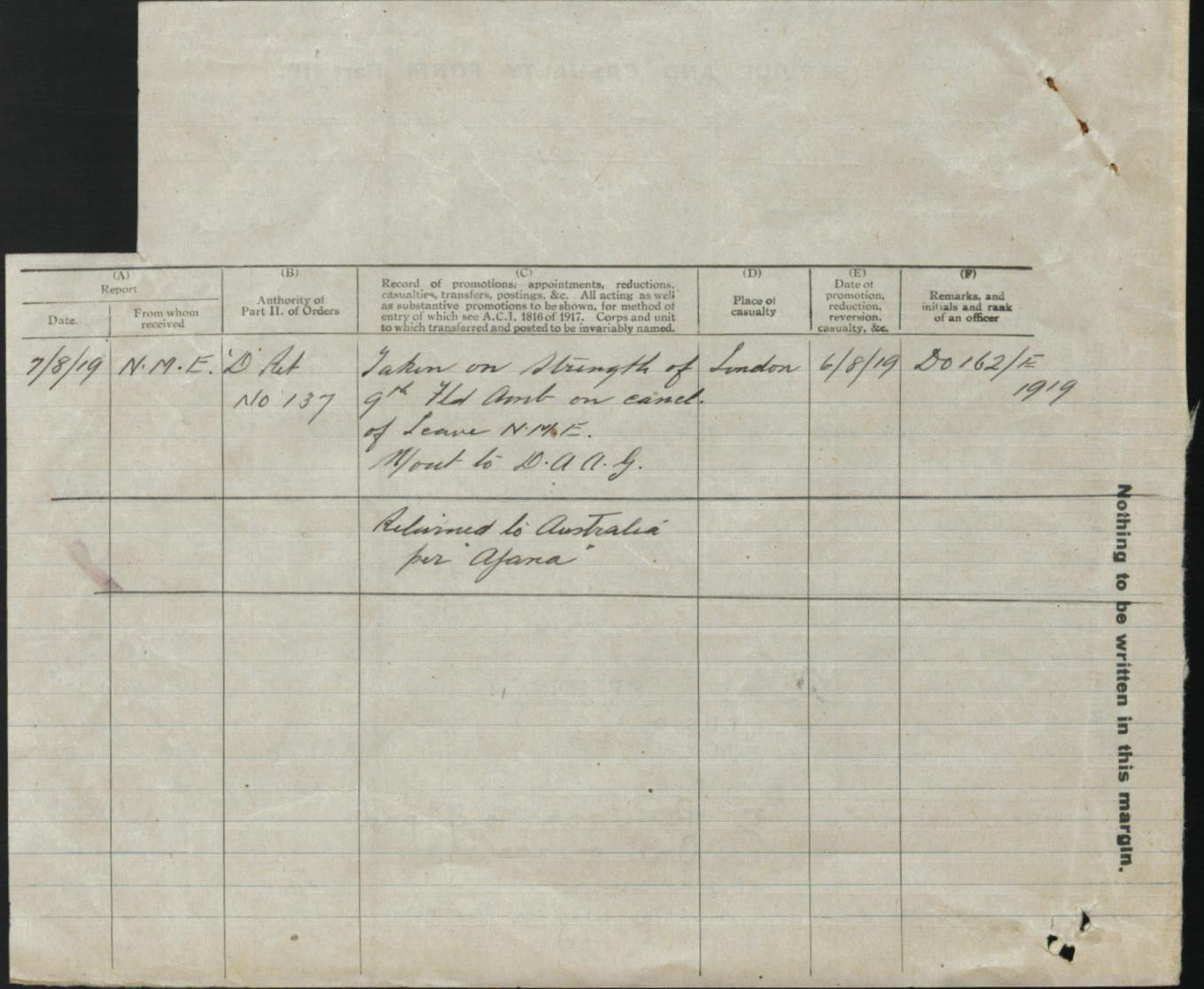

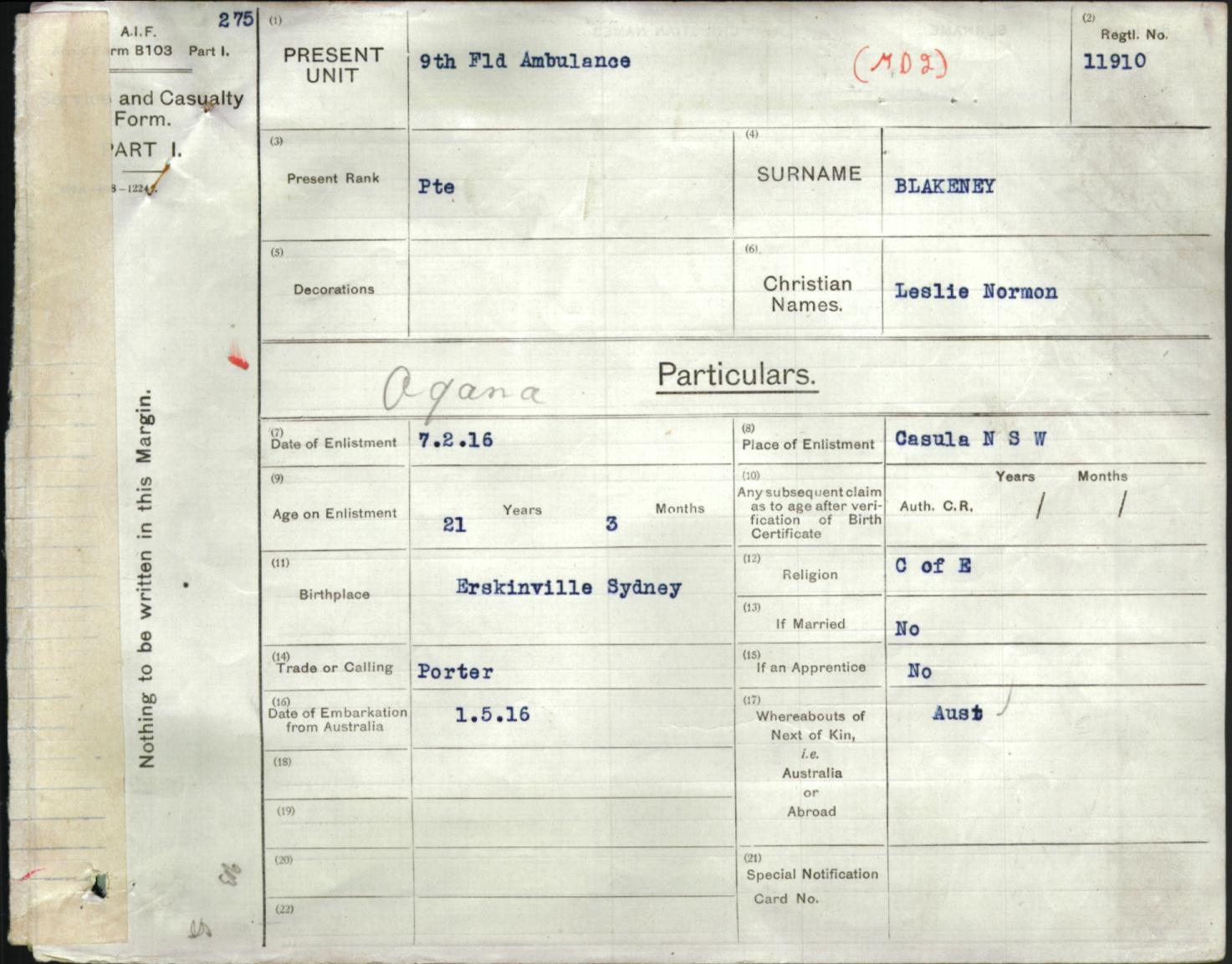
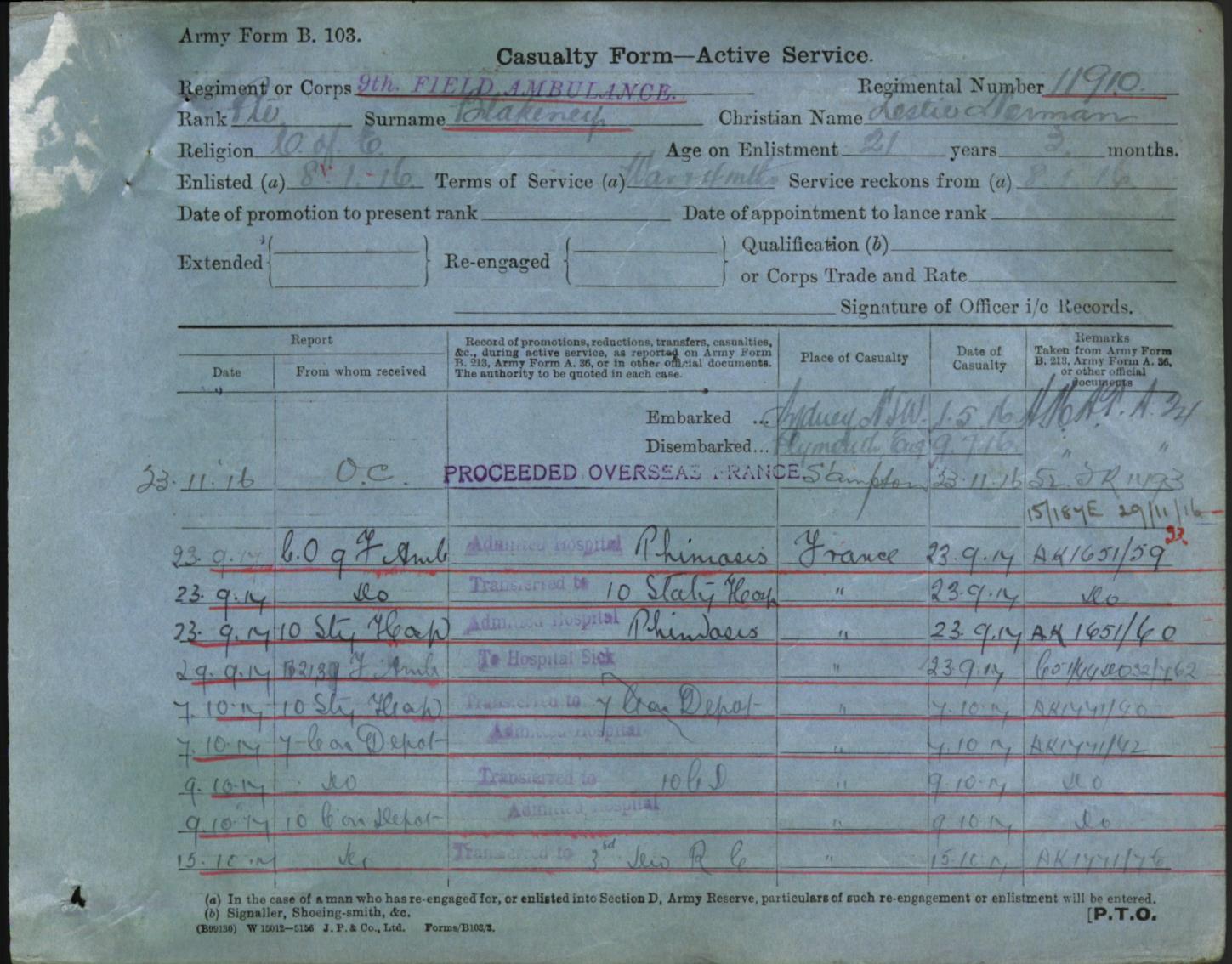
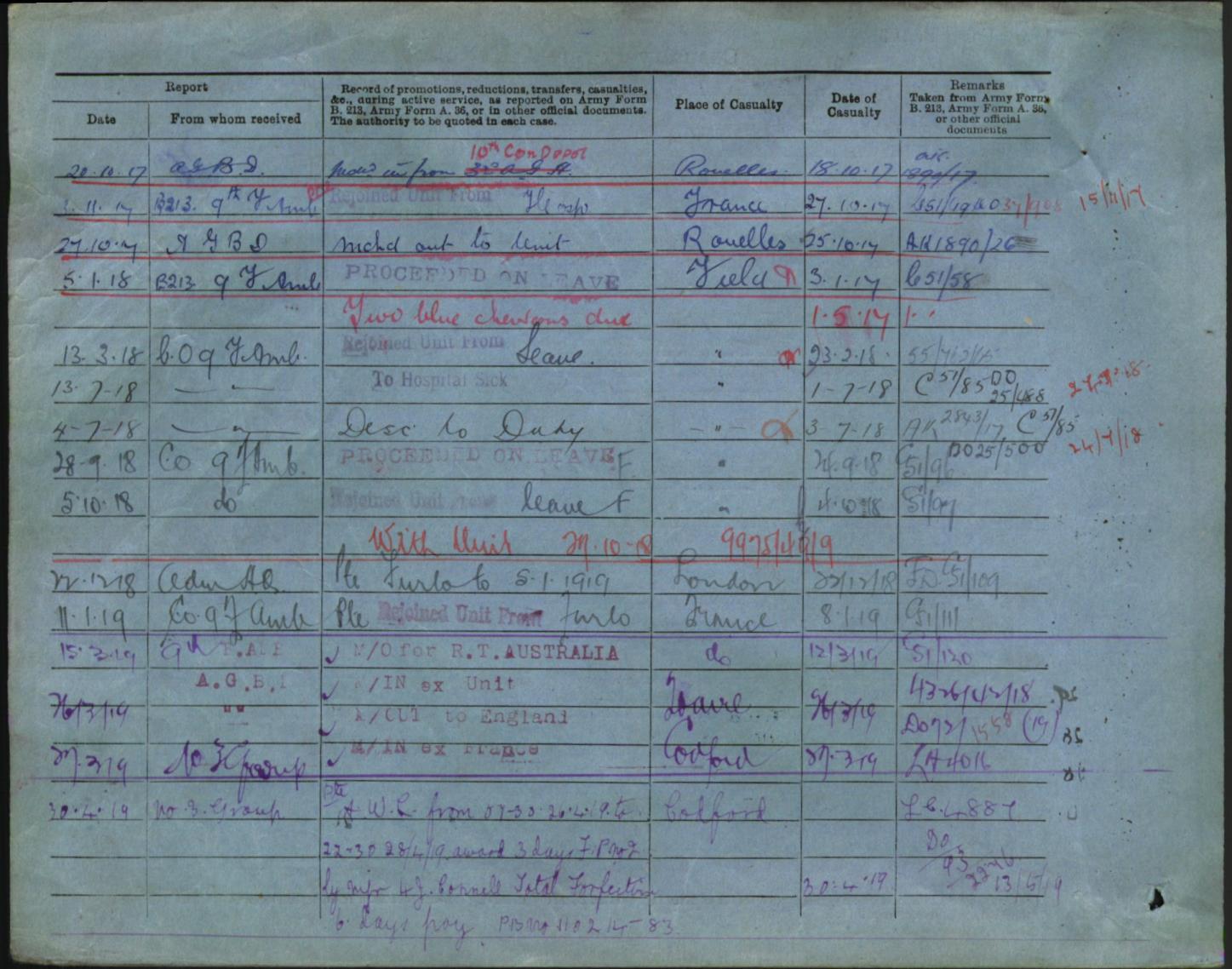


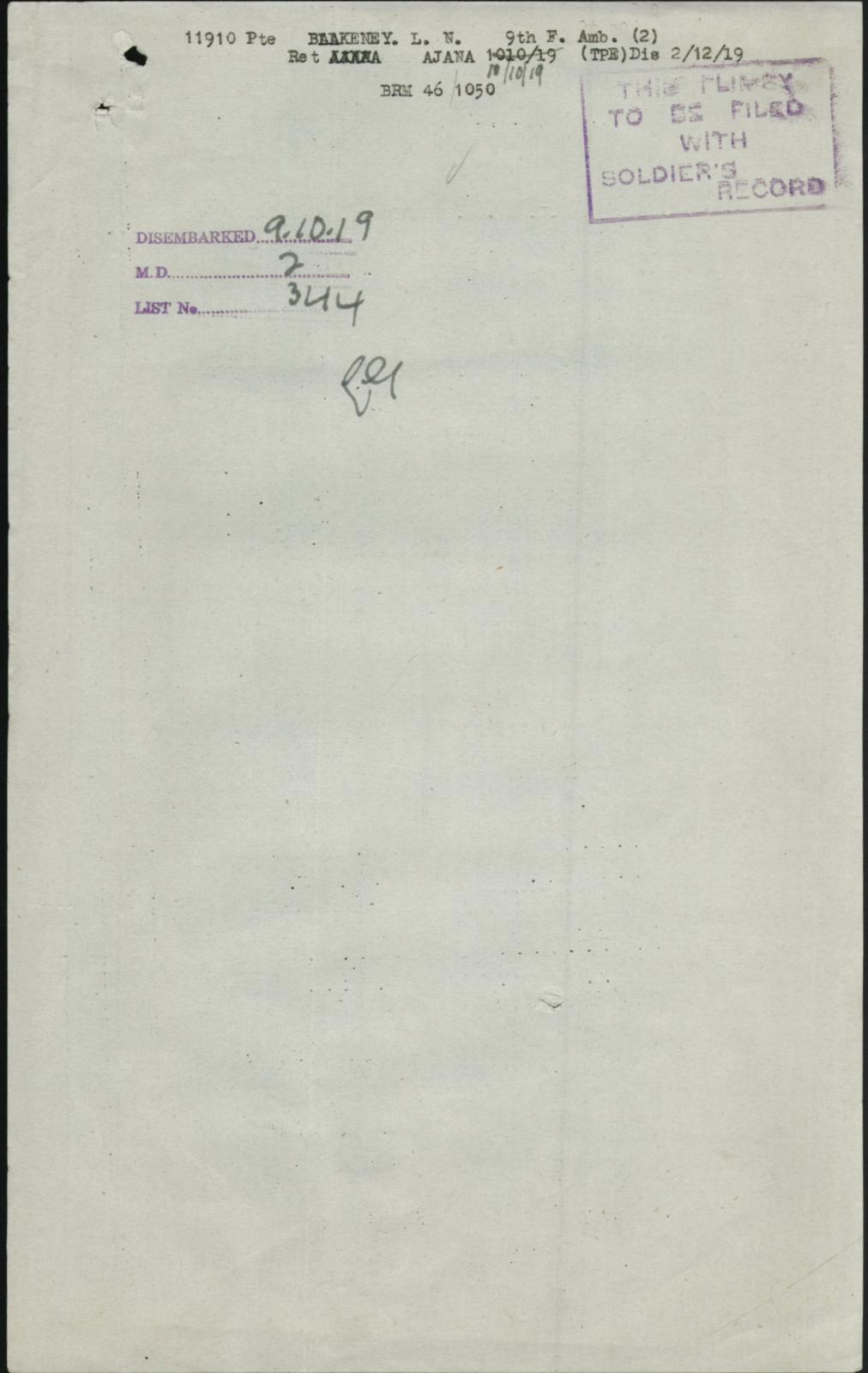
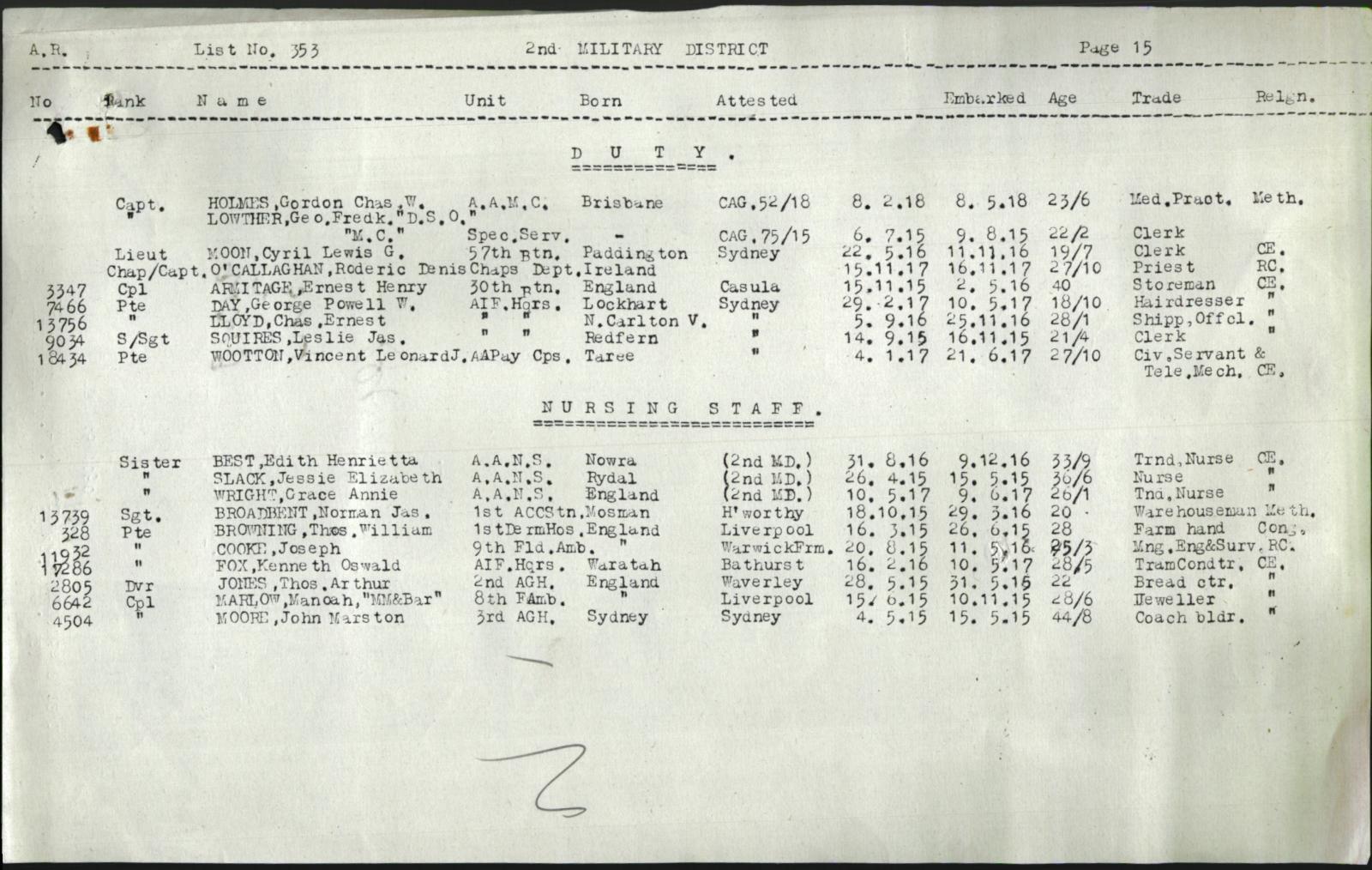
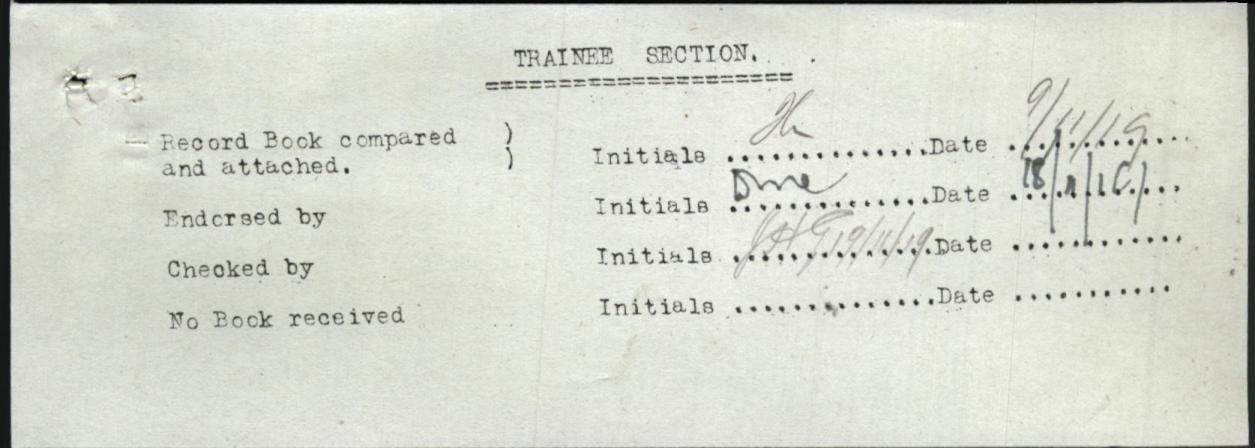
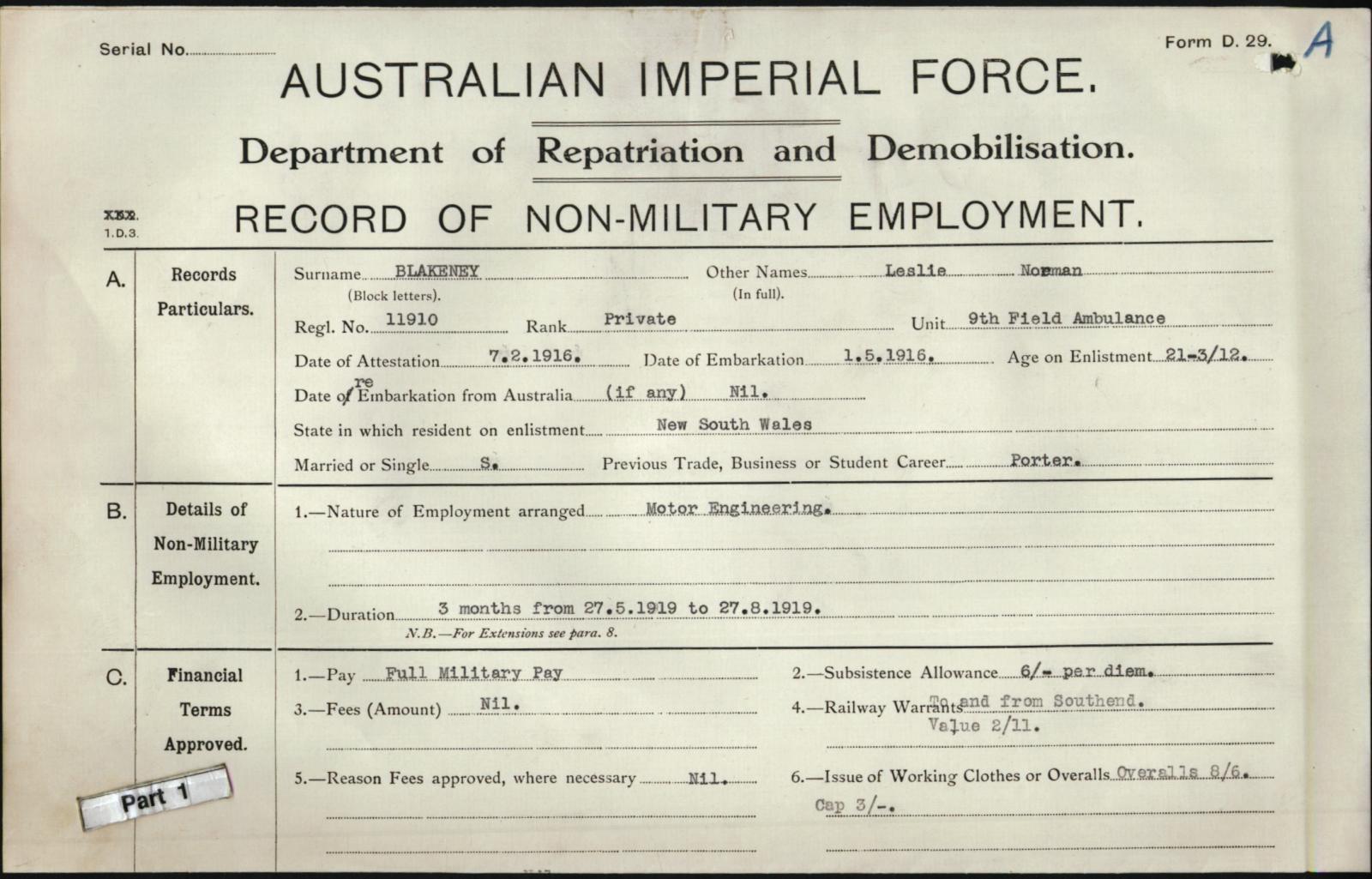
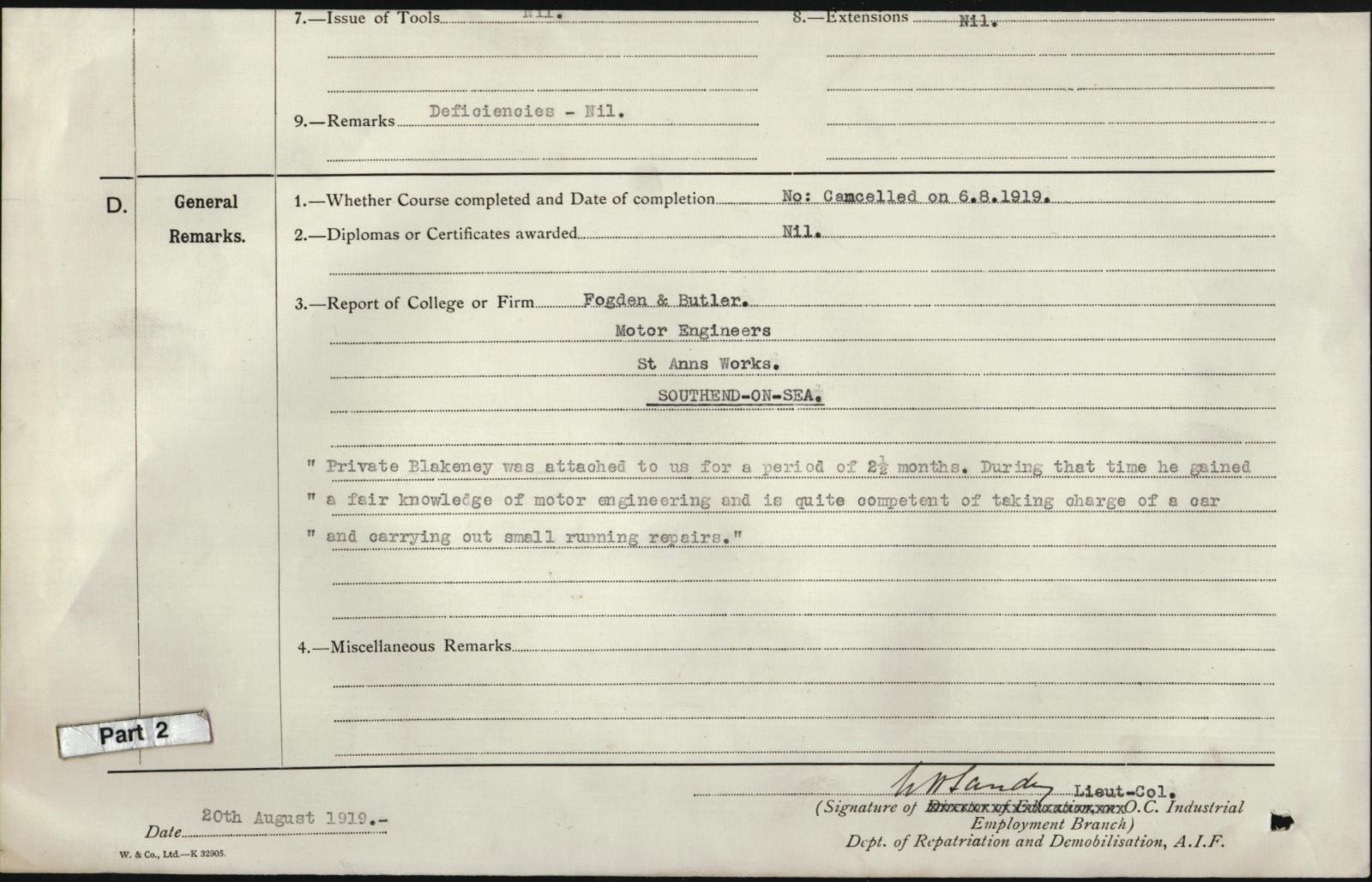
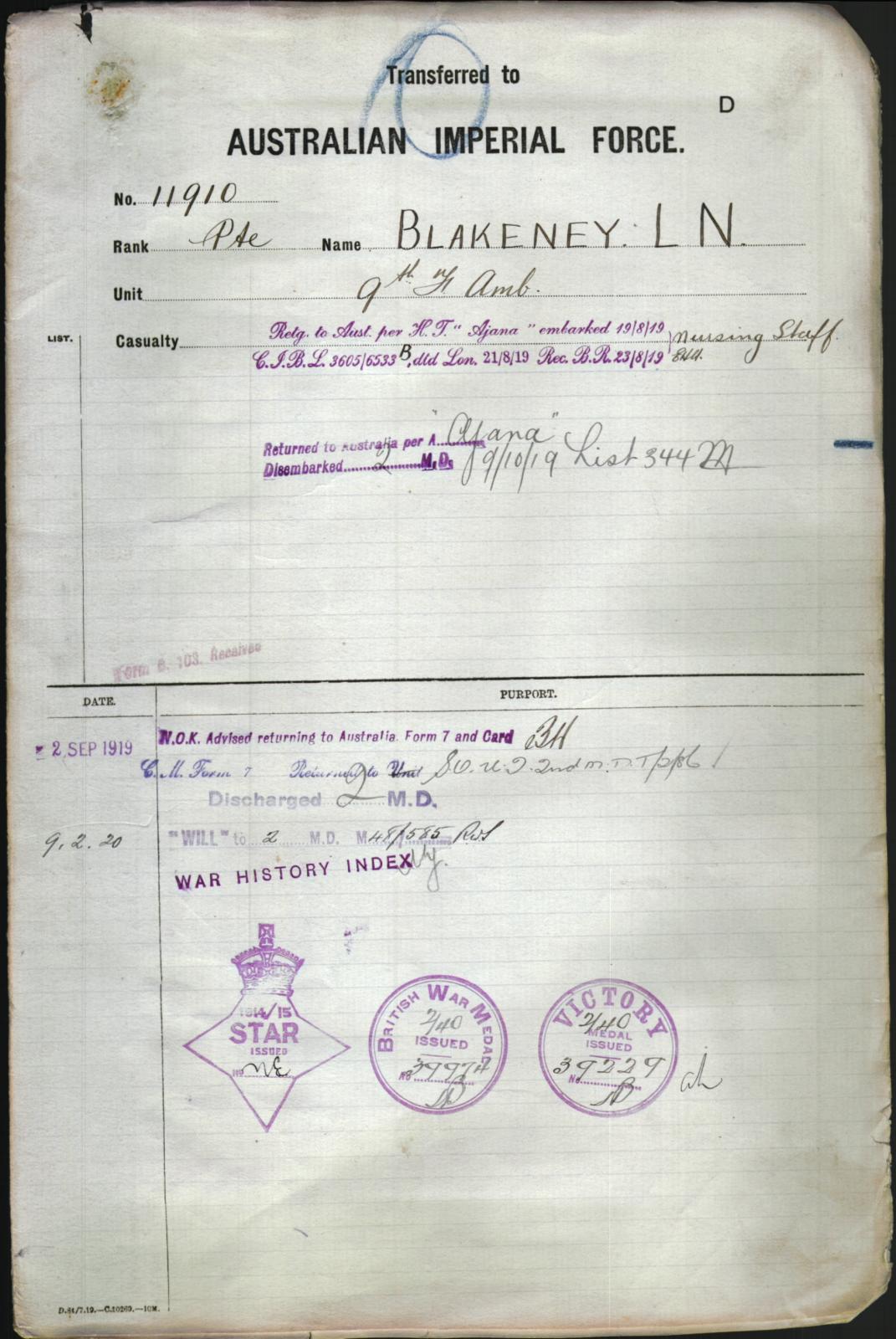
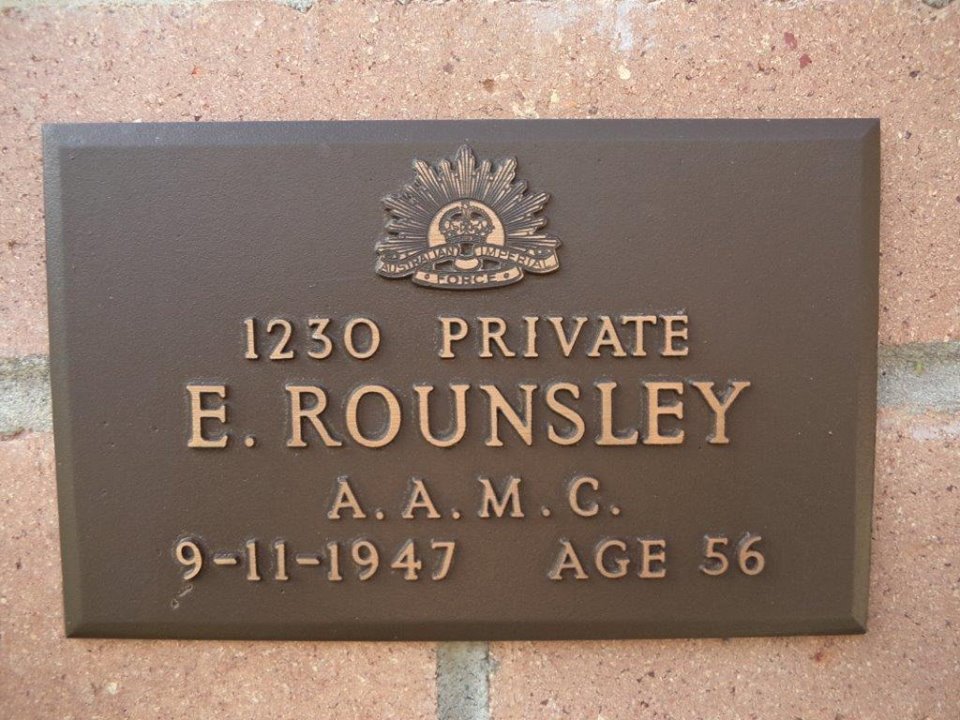
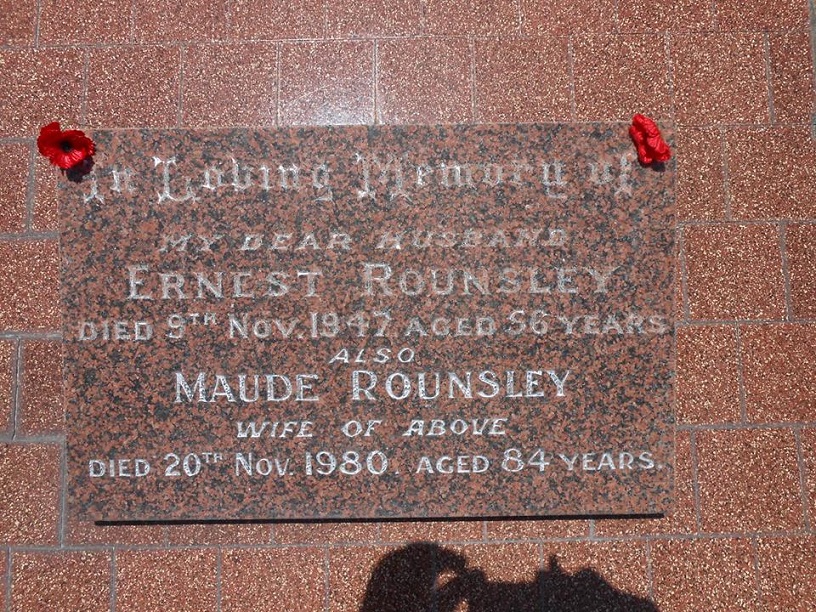
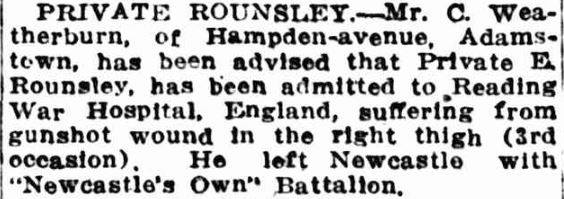

 Adamstown War Memorial
Adamstown War Memorial